





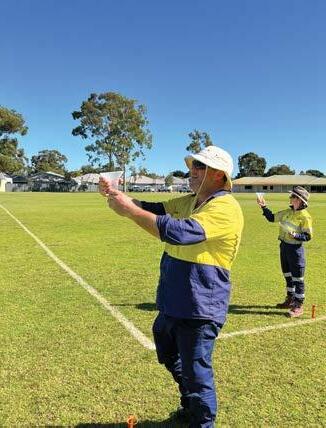


















































Irrigation Australia has a proud history in supporting Australia’s irrigation industry – and continues to empower the industry through knowledge, innovation and sustainable best practice. We know that many members are struggling through skills shortages, weather extremes and other business challenges, and the Association has shared some of that pain this financial year.
In this edition of the Journal, we spotlight careers and training. You’ll also find stories on solar pumping, digital technology, and the potential of soil carbon farming.
Training
25/26 is looking bright, with a lot of interest in private courses, a well-structured calendar, and training rolling out through Ammonite (our new learning management platform). Concurrent and flexible delivery options are working well and the feedback we’re getting from some of the new programs (including the Queensland Governmentfunded Irrigation Efficiency and Practical Skills micro-credential) is spectacular.
Irrigation Australia is also supporting the Food, Fibre and Timber Industries Training Council (FFTITC) to establish a trade apprenticeship for irrigation technicians – addressing critical skills shortages across Western Australia. Elevating the Certificate III in Irrigation Technology from a traineeship to a trade apprenticeship could raise industry standards, improve regional career pathways, and support a more sustainable future. Whether you're in the field, employ technicians, or simply care about responsible water use, your input counts. Respond to FFTITC’s survey here, before it closes on Friday, 25 July 2025.
Marking a new era of locally driven certification, the Australian-led Certified Irrigation Designer
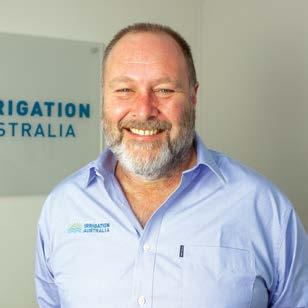
Program is set to launch, delivering tailored exams, enhanced resources, and a streamlined assessment process. Further, we’re building on the success of a careers presentation in Queensland schools by exploring similar partnerships with other education departments.
Following the successful launch of the self-paced Introduction to Irrigation – Part A, two new courses – Part B: Landscape and Part B: Agricultural – build on Part A’s solid foundation to explore irrigation practices in greater depth. We thank Sam O’Brien for developing the content, and our team for all the hard work in the back end to ensure a positive student experience. We also acknowledge Sam’s significant contribution to the Association and wish him well in his future career.
Additionally, we’d like to highlight a couple of fantastic member opportunities – our new self-paced online training subscription, and the upcoming Waterwise Expo in August.
The training subscription provides great value for member companies. For a one-off annual fee there is no limit to the number of staff employers can have complete the courses. These are great “taster” activities to explore further professional development in the industry, with around 15 hours of content overall. Heavily discounted for members, the subscription can be accessed here. Around 150 students have already been enrolled using the member subscription.
Lastly, it’s nearly Waterwise Expo time in Perth!
Rebecca New has done an incredible job securing exhibitors and organising the venue and program –ably supported by our excellent WA committees.
The Expo has a unique format, allowing delegates to circulate through different demonstrations

and displays. Highlights include an innovation showcase, mental health talk, the exhibition, tours of the Vines Golf Course irrigation installations, a waterwise panel with Irrigation Australia, the Department of Water and Environmental Regulation, and Water Corporation – and of course fantastic networking with fun golf-themed activities provided. We look forward to catching up with you on 13 August.
Please review all our training offerings here While there, take a look at our wonderful new Talent Hub and get involved. The industry’s future depends on attracting, training and keeping new people; and your association is the ideal resource to support that.
Simon Treptow, Chair
Dave Cameron, CEO

Qualifications
Short Courses
Virtual and face-to-face options
Nation-wide opportunities
Practical training approach
Specialised content
Self-paced online training options
Industry-recognised certifications
Expert trainers
Click
IRRIGATION AUSTRALIA BOARD OF DIRECTORS
SIMON TREPTOW, CHAIR
VALENTINA TRIPP, DEPUTY CHAIR
DIRECTORS
MATTHEW BINDER
PETER BRUECK
GREIG GRAHAM
CLINTON HORT
ROB NADEBAUM
GENNARO VELLOTTI
CARL WALTERS
LUCY WILSON
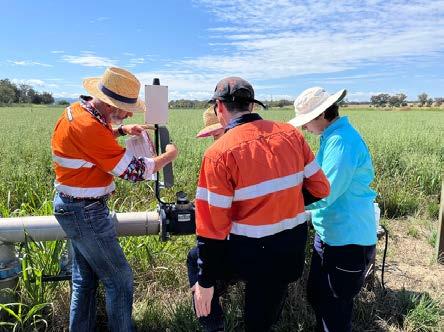

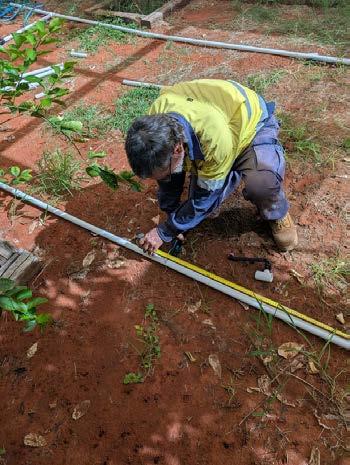

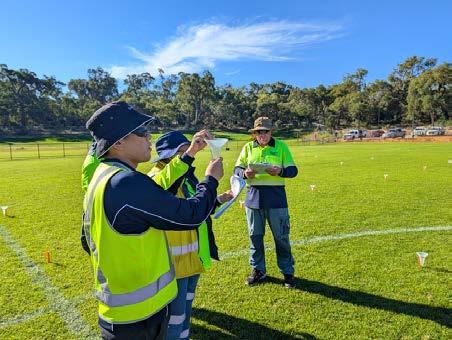
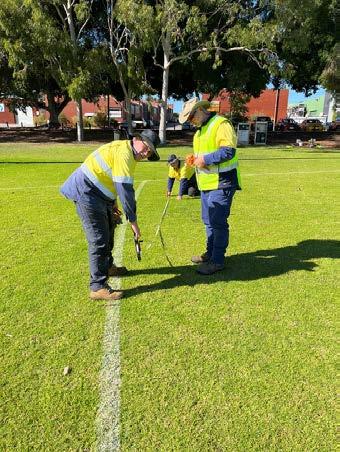
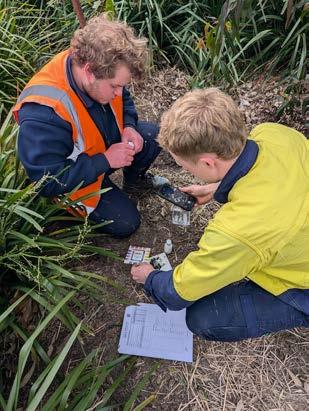

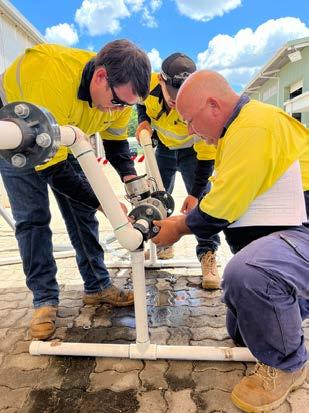
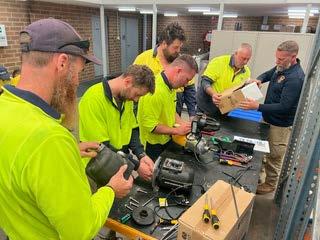

At Irrigation Australia, we are deeply committed to building a sustainable Australian irrigation industry through applied research, high-quality skills and careers development, and balanced policy advice
We would like to extend our sincere appreciation to the following leading irrigation companies which sponsor our 'Irrigation Futures' initiatives. Their invaluable support, which often includes financial contributions and the provision of modern equipment and facilities for our students, plays a vital role in shaping the future of our industry



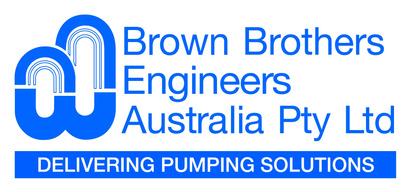


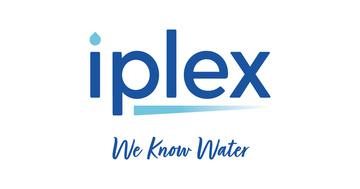












Irrigation Futures provides a model which builds real opportunities for engagement and offers a unique chance to shape a sustainable future for irrigation If you’re interested in supporting our initiative, please reach out for more information


New micro-credential provides quick, low-cost training in Queensland.
Backed by the Queensland Government, the course dives into modern irrigation fundamentals and water efficiency essentials.
Hands-on training in water management, pump function, energy efficiency, flow rate testing and routine maintenance.
Perfect for new starters and entrylevel staff – building confidence, demonstrating competence, and opening career pathways.
Register at irrigationaustralia.com.au or email training@irrigation.org.
Anew wave of training is sweeping across Queensland, and it’s already having an impact.
Irrigation Australia’s new Irrigation Efficiency and Practical Skills micro-credential launched to a full class on 20 May 2025, delivering a compact, high-impact learning experience for 13 industry workers.
Backed by the Queensland Government, this innovative micro-credential is more than an introduction to the industry – it’s a key step in understanding the fundamentals of modern irrigation and water efficiency. Designed specifically for Queenslanders and delivered online across two half-day sessions, the course is ideal for new starters, entry-level staff, and anyone exploring a future in the sector.
Highly practical, the training is hands-on and skills focused. Participants dive into essential irrigation concepts – water management, pump function, and energy efficiency – while gaining practical experience in flow rate testing and routine maintenance. These foundational skills help reduce waste, lower operating costs, and prepare participants for supervised site work or customer-facing roles.
As a non-accredited program, the microcredential isn’t about formal qualifications – it’s about confidence, demonstrating competence, and taking clear next steps.
Delivered by Irrigation Australia’s Senior Trainer and Assessor, Stuart Alexander, participants not only gain new knowledge but also get the chance to reflect on future training opportunities, including the Certificate III in Irrigation Technology and other nationally recognised qualifications.
The launch of this micro-credential reflects Irrigation Australia’s ongoing commitment to sustainable workforce development and accessible training pathways. It complements the organisation’s broader push to make industry-led, flexible training a key part of the sector’s future – especially for those in regional and rural areas.
With more intakes planned and positive early feedback, this new offer is already proving its value to both employers and emerging professionals.
For upcoming course dates or to register your interest, visit the Irrigation Australia website or email training@irrigation.org.
“This course has extended my knowledge of the irrigation industry and given me new skills to use in the real world.”
“Being able to work through the questions during the course rather than afterwards was really helpful.”
“A great course for anyone looking to better understand the irrigation industry or widen their knowledge.”
“[The] trainer was very knowledgeable, and his enthusiasm made it easy to take the information in – I learned a lot.”
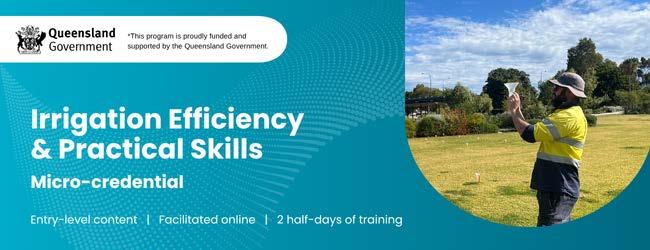
With the irrigation industry poised for growth nationally and internationally, both current employees and aspiring professionals can be proactive in their long-term success.
Irrigation Australia encourages workforce participation from people of all backgrounds, genders and identities, recognising the diverse perspectives and strengths that contribute to a thriving industry.
Entry-level training and induction
Irrigation Insights – a free induction course for potential job seekers
Part A – Our Introduction to Irrigation (Part A) online course is designed to provide foundational knowledge for anyone entering the industry. Whether you’re new to landscaping, a property manager looking to improve water efficiency, working in an irrigation shop or simply curious about irrigation, this course offers practical, easy-tounderstand insights to get you started. The course is not accredited but the content is based on Certificate II level units. Approximately 4 hours to complete.

Part B Landscape – For those who’ve perhaps been around a little longer, the course is not accredited but the content is based on Cert III level units relevant to an open space/ urban environment. Topics include commercial systems, backflow prevention, filtration, pumps, simple design, soils and plants, basic wiring, hydraulics and pressure and water efficiency. Estimate 6 hours to complete.
Part B Agricultural – As above, Cert III level units with an Ag flavour. Topics include types of systems including farm systems, centre pivots, drip irrigation, under tree sprinklers, filtration, fertigation and chemigation, pumps, water meters, soils, monitoring technology. Estimate 5 hours to complete. (There is very little overlap between these two Part B courses).
For our company members, we offer a subscription to all courses for an unlimited number of employees.
Advanced skills
For those progressing in their careers, current accredited training options include:
• Irrigation Systems Efficiency
• Irrigation Installer
• Irrigation Meter Installation and Validation
• Certificate III in Irrigation Technology
• Electrofusion and Butt Welding
• Centre Pivot and Lateral Move Systems (available 2026).
For managers and experienced professionals:
• Certified Irrigation Designer (urban, commercial and IRRICAD design). This examination transitioned to direct management by Irrigation Australia from 1 July 2025.
• Irrigation Systems Auditor (available 2026).
There are a number of courses in development and being rewritten, with release dates scheduled in the coming months. For those who are particularly interested in the Cert IV in Irrigation Management, we are currently looking at best options to make sure training is fit-for-purpose and the higher-level qualifications will be addressed later in 2025.
Whether you are new to the industry or looking to advance your expertise, Irrigation Australia offers the training, certification, and professional support to help you thrive. By joining, you gain access to exclusive learning opportunities, industry recognition, and a network of professionals committed to efficient water management. Investing in your skills today can open doors to greater career prospects, credibility, and business growth. Explore Irrigation Australia's courses and membership options to take the next step toward a successful future in the irrigation industry.

Irrigation Australia’s purpose is to serve as a centre of excellence, driving the adoption of efficient irrigation practices across
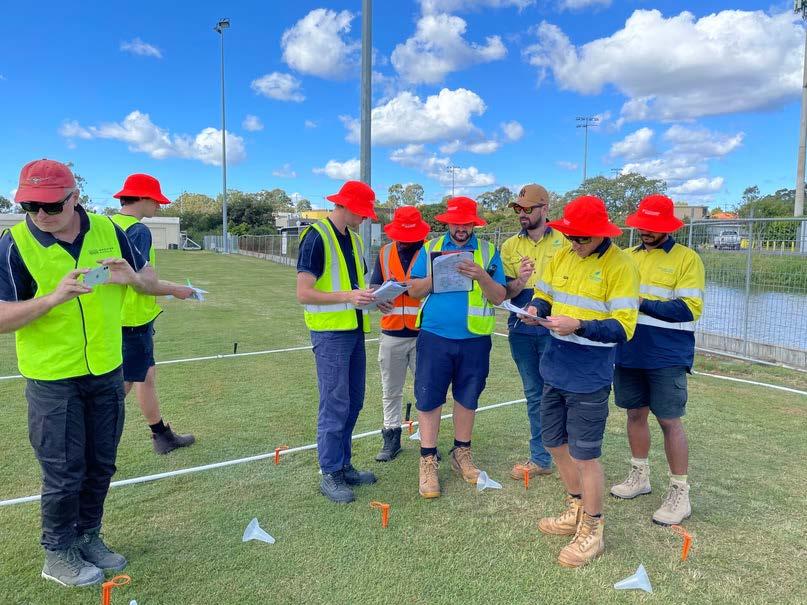
The Certificate III in Irrigation Technology remains the industry’s core qualification, equipping workers with critical skills in system installation, maintenance, and water management. This qualification has long served as a key entry point for industry training, although we’ve recently focused on a number of shorter, entry level and intermediate courses for new starters.
We’re lucky to be able to deliver training under a nationally recognised, portable training system but the funding offered by state and territory governments to support our essential skills differs significantly. At a high level, Irrigation Australia’s national training and advocacy strategy calls for:
• More consistency across state and territories – the financial burden on our Association with compliance and separate funding systems is significant.
• Fit for purpose funding - for example criteria which ensure that new employees are able to be brought on and tested before a business makes a major investment in training.
• More financial support for shorter duration courses which contribute to the core qualification – leading to stronger completion rates and a better return on government investment.
• Flexible funding options for special requirements / new or innovative training options which do not easily fit the Australian Quality Framework – it takes a lot of time to get a new qualification registered.
Currently Irrigation Australia does not have funding arrangements for NT, ACT, or Vic. Victoria has been a target for a long time but there is no appetite to support the industry.
WA has the most generous funding arrangements, but we struggle to meet requirements to get support for existing workers. Queensland provides least financial support for the Cert III qualification, but has innovative programs in the flexible options category, including micro-credentials funding.
Identify funding sources – Find the latest information on available grants and subsidies here, on the Irrigation Australia website. Consider joining Irrigation Australia to support its advocacy efforts, especially if you are in a region which is not well-supported. Consider regional committee roles – all active committees have project ideas in play to help address skilling challenges in their regions.
Plan for workforce development – Investing in skilled employees strengthens operational success and staff retention.
Familiarise yourself with valuable resources – including our new Talent Hub. Visit Irrigation Careers.
A well-trained workforce leads to greater system efficiency, fewer failures, and stronger business outcomes. Employers are supported by Irrigation Australia to develop their workforce to improve efficiency and ensure compliance with industry standards.
Skills Insight invites feedback on how to strengthen career pathways in agriculture, with a focus on enhancing visibility and identifying future qualification opportunities. This includes reviewing an Ag Qualification Career Mapping document that links job roles, sectors and AHC Training Package qualifications. Input is also sought on the potential development of an agricultural trade apprenticeship pathway. Skills Insight is exploring a trade-level qualification to support structured, hands-on learning and meet workforce needs across the sector.
Feedback will help ensure qualifications and job titles align with current industry practice and support future recruitment and retention. To provide feedback visit the Skills Insight project page here
Irrigation Australia is offering past students of the Certificate III in Irrigation Technology a streamlined pathway to become a Certified Irrigation Installer (CII) in 2025.
With a growing skills shortage in the industry, this certification enhances career prospects by listing professionals in a new Certification Directory, making it easier for employers and clients to find qualified installers.
Councils such as City of Perth, Townsville City Council, and Brisbane City Council already integrate CIIs into procurement specifications. Irrigation Australia is advocating to extend recognition nationally.
Admission criteria include:
• Automatic certification for those who have recently completed training within the past two years, with a reduced $110 annual certification fee (GST included).
• Streamlined certification for past students who completed training more than two years ago and can verify recent installation experience. Cost: $110 application fee, plus a $165 annual certification fee.
• Full assessment required for those whose training was completed longer ago, costing $470 plus annual certification fees.
• Bridging courses to update skills in line with current certification standards.
Don't miss this chance to boost your credentials – apply by emailing training@irrigation.org.au with relevant qualifications and work history and we will be in touch with next steps.
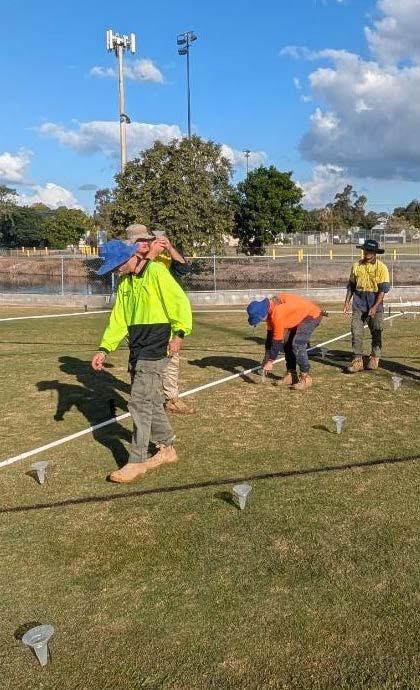
Ensure a reliable and sustainable water supply for both gravity and pressurized irrigation systems with our advanced pumping solutions. At Sulzer, we offer a wide range of vertical and horizontal pumps, specifically engineered to meet the demands of high-performance and energy-efficient irrigation. Whether your project involves large-scale agriculture or specialized irrigation requirements, our experts are ready to provide custom solutions that deliver longterm efficiency and reliability.
Discover more at sulzer.com/irrigation
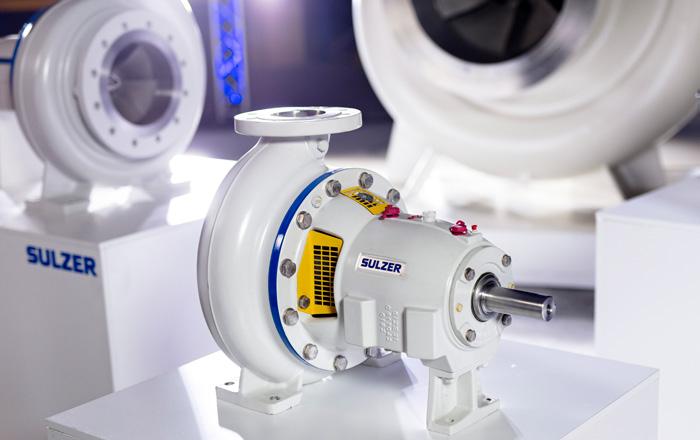
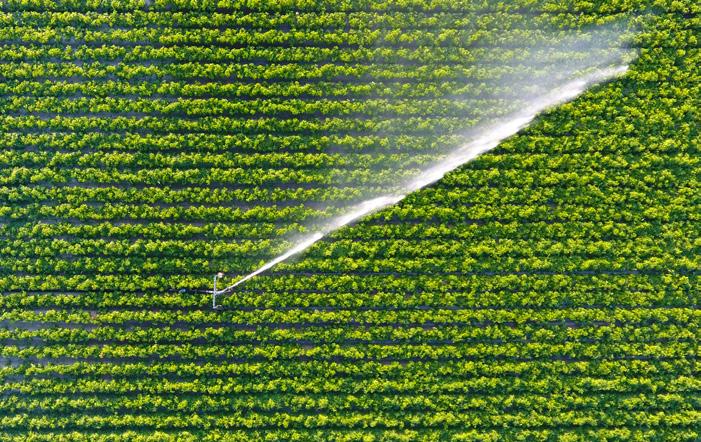
Discover the experiences of early-career professionals shaping their futures in the irrigation industry. Whether you're exploring career pathways or seeking guidance, the resources below provide information and
firsthand accounts of the benefits, challenges, and key lessons learned as new starters navigate this essential sector.
You can view more videos here.

Press play to watch the video
The My Future website outlines a range of roles across water management, agriculture, sustainability, and technology.
For those ready to enter the industry or transfer their skills, Irrigation Australia has partnered with Goheadhunt to offer free job search support through Irrigation Australia’s new Talent Hub. Explore the Talent Hub here.


Country Water Solutions WA is fostering career growth through Irrigation Australia's Certificate III in Irrigation, equipping trainees with the skills to excel in the industry.
Finn Kirkland’s journey began with mowing lawns before progressing to a Certificate III in Horticulture traineeship with Country Landscaping. His transition into irrigation was driven by a desire to build technical expertise. For Finn, the poly weld unit was the highlight of his training, reinforcing the importance of precision and professionalism. He says that completing the course has given him a competitive edge in the job market.
Michael Dickson started with Country Landscaping in 2010 before moving to Country Water Solutions four years ago. His interest
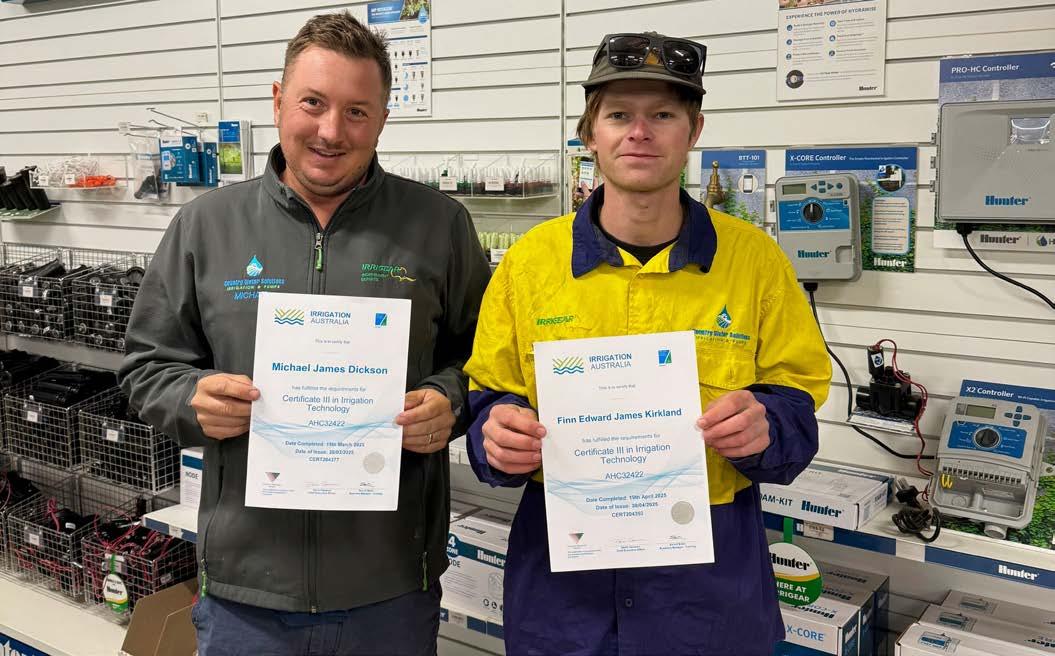
in the industry stems from its variety – travel and the opportunity to do something different every day. For him, the efficiency testing training was the most valuable aspect of the course, enhancing his technical proficiency. Michael says that completing Certificate III was a logical step in his career, preparing him for further study at Certificate IV level.
Through structured training and handson experience, Finn and Michael show a sample of the career pathways available within the irrigation sector, highlighting
the importance of accredited learning in shaping skilled professionals.
Congratulations to Finn and Michael on their achievements!

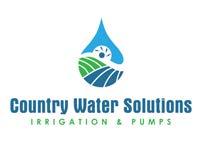



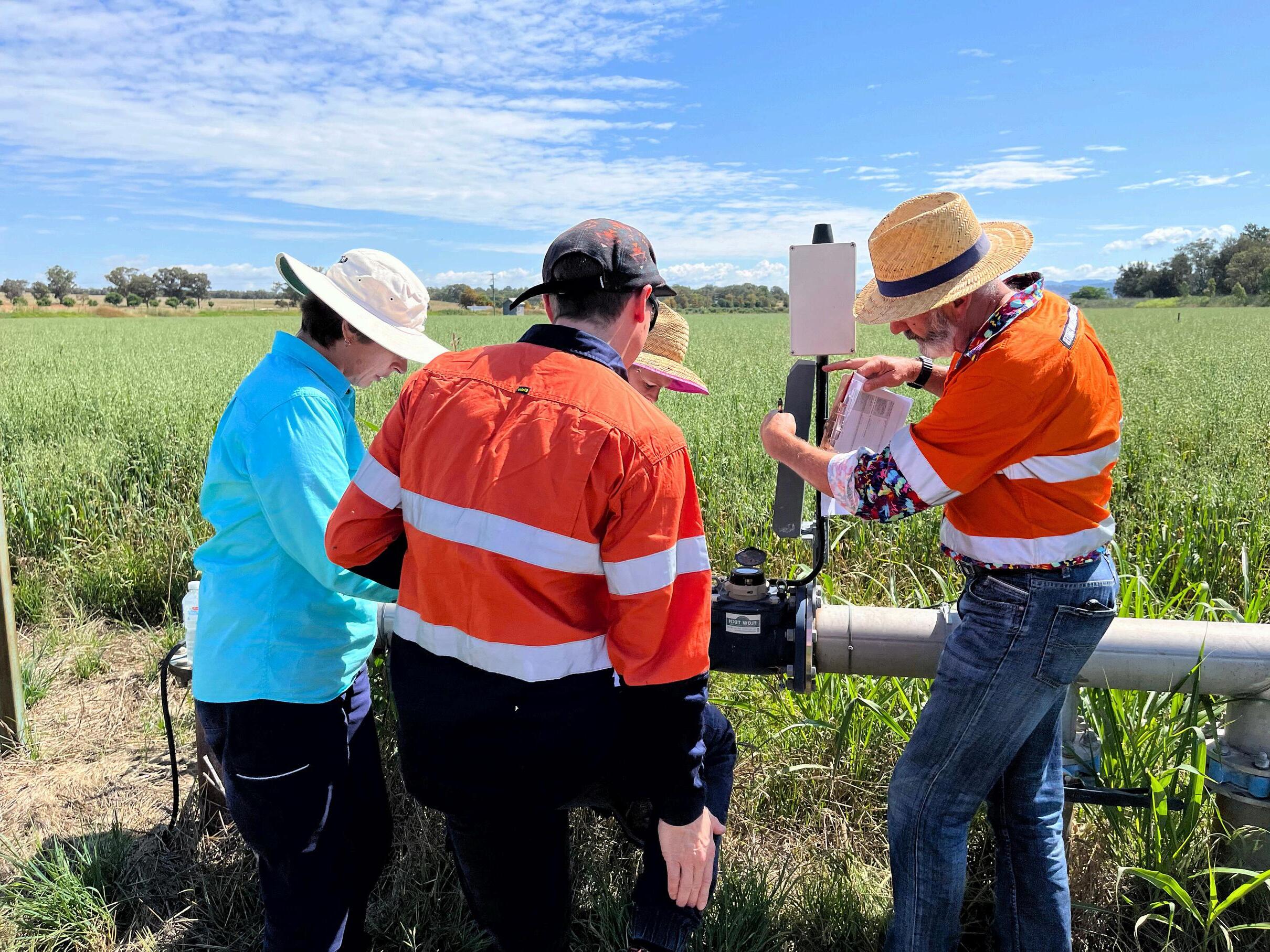
Takeactiontodayandbetheexpertyourindustryneeds!
Learn from the best with Irrigation Australia! Our range of expert-led training is hands-on, practical, and designed to get you job-ready through a unique blended learning experience
Qualifications
Certificate III in Irrigation Technology AHC32424 (18 - 24 months duration)
Certificate IV in Irrigation Management AHC41124 (12 months duration)
ShortCourses
Certified Meter Installation & Validation (3 full-days face-to-face or 4 half-days virtually)
Certified Irrigation Installer (4 full-days face-to-face)
Irrigation Systems Efficiency (3 full-days face-to-face)
Certified Irrigation Systems Auditor (4 full-days face-to-face)
Irrigation Pumps & Systems (1 half-day virtually + 1 full-day face-to-face)
Electrofusion & Butt Welding (2 full-days face-to-face)
Self-PacedOnlineCourses
Irrigation Insights
Introduction to Irrigation - Part A
Introduction to Irrigation - Part B: Landscape
Introduction to Irrigation - Part B: Agricultural
Can’t find the location or dates that suit you?
Click here to complete our easy Expressions of Interest form and our team will be in touch soon!
As Australia’s leading irrigation association, Irrigation Australia is proud to represent and support professionals across the irrigation industry In addition to delivering high-quality training, we are committed to fostering lifelong learning through our nationally recognised Certification Programs.
To ensure industry professionals remain up to date with the latest standards and requirements, we’ve recently made several important updates to specific programs Subscribe here to receive regular updates on our certification offerings, eligibility criteria, renewal requirements, and more.
From 1 July 2025, Irrigation Australia will introduce its own CID examination process, tailored to Australian conditions. Certified professionals must maintain 5 CPD points annually through training, events, or design submissions Using a CID ensures quality, expertise, and accountability in irrigation system design
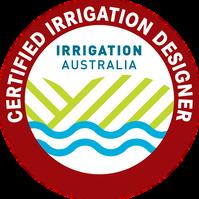

The Meter Installation and Validation Recertification Exam is now available on our new training platform Worth 2 CPD points, this short, online exam is ideal for certified professionals looking to refresh their skills, maintain active certification, and stay engaged in the irrigation industry
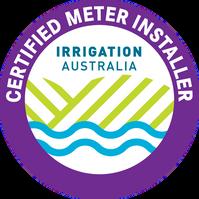
With certification renewals now annual, certified professionals are required to maintain 5 CPD points each year instead of 10 over two years. To better support individuals in regional areas, we've also introduced new CPD point categories, offering more flexible and accessible ways to meet annual requirements and maintain certification
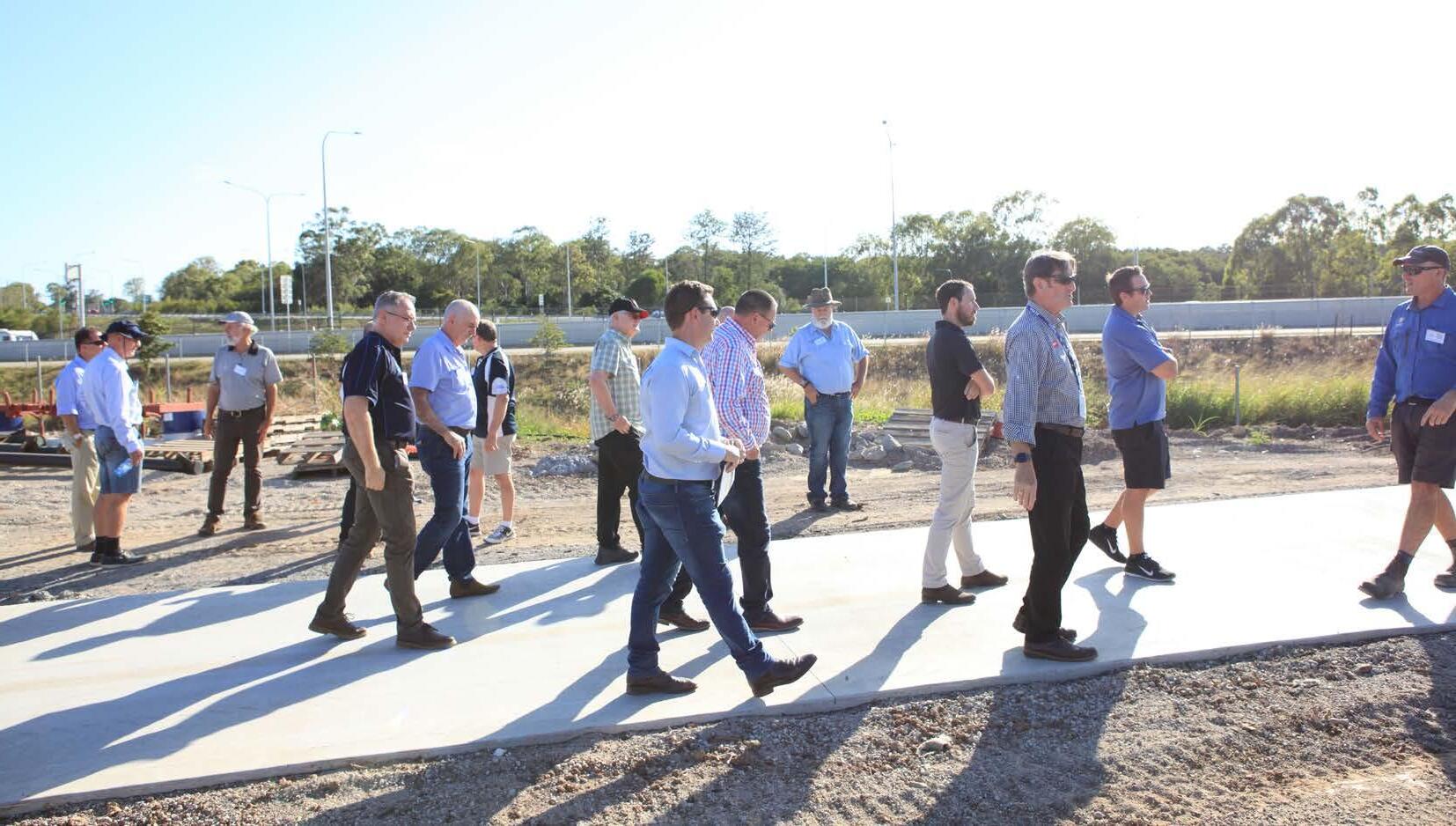
Irrigation Australia provides businesses and industry workers with exclusive discounts, resources, and networking opportunities to drive success and professional growth.
• Training and certification discounts –Businesses can access team rates on nationally accredited irrigation training. Offered in cities, regional areas, and online, these courses support staff development, enhance service quality, and keep your business aligned with the latest industry trends.
• Access to special projects and funding opportunities – Opportunities to participate in grant applications for government sponsored skills shortage and other industry growth programs.
• Access e-knowledge – Gain exclusive access to technical papers, conference resources, and a range of industry publications.
• Members-only portal – Manage your membership, register staff for training, and access industry insights and
resources for best practices.
• Advertisement and industry publication discounts – Save on advertising in Irrigation Australia Journal. Members also enjoy reduced rates on books, eBooks, and select industry resources.
• Waterwise endorsement (WA Only) –Businesses in Western Australia can access discounted training through the Waterwise Programs – tailored for domestic irrigation contractors, installers, landscapers and retailers. The program also includes marketing support to promote your services as a recognised endorsed Waterwise Irrigation Professional.
• Recruitment – Find work or recruit skilled professionals via Irrigation Australia's LinkedIn, Facebook, and e-news channels, and gain access to the Irrigation Australia Talent Hub. Company-level members can also list their business in the Find an Irrigation Specialist directory – increasing brand visibility.
Boost your business with training discounts, funding opportunities, exclusive resources and recruitment support.
• Train smarter – Save on accredited courses across Australia and online. Get connected – Access membersonly resources, funding programs and our Talent Hub
• Stand out – Promote your brand with ad discounts and specialist listings.
• Waterwise perks (WA only) –Endorsed training and promotional support for local professionals.
Join now to sharpen your skills and connect with the irrigation community.
Irrigation Australia provides industry professionals and businesses with specialised benefits, including networking, advocacy, targeted training, and promotional support – all designed to drive growth and enhance expertise.
Shape the future of the industry and access exclusive member benefits – join us today!
SUBMERSIBLE PRODUCTS

END SUCTION PUMPS
MULTISTAGE PUMPS
HIGH EFFICIENCY SYSTEMS
BOOSTER SETS
SOLAR SYSTEMS
DRIVES, CONTROL & PROTECTION


The irrigation industry is evolving, and with it, the workforce needed to power its future. To help meet this growing demand, Irrigation Australia and Goheadhunt have launched a dedicated Talent Hub designed to attract and guide new talent into meaningful careers in irrigation.
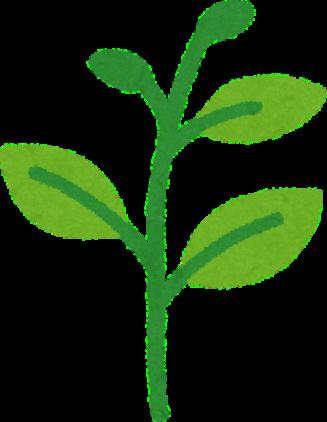
This initiative reimagines how our industry connects with job seekers. By leveraging social media and smart recruitment technology, we are:
Reaching young talent exploring apprenticeships and traineeships
Encouraging career switchers with transferable skills from construction, trades, and manufacturing
Showcasing the diversity of roles and career growth available across irrigation
Promoting training pathways and skill development alongside job opportunities
We are actively bringing new people into the industry.
This initiative is only as strong as the support behind it. We now invite all irrigation businesses and employers to stand behind the Talent Hub by:
Creating a free Employer Profile to be seen by job-ready applicants
Listing your common job roles, from sales to installation to operations
Offering opportunities, even entrylevel or shadowing experiences, to nurture fresh interest in the sector
These small actions make a big difference helping ensure our industry remains skilled, sustainable, and future-ready



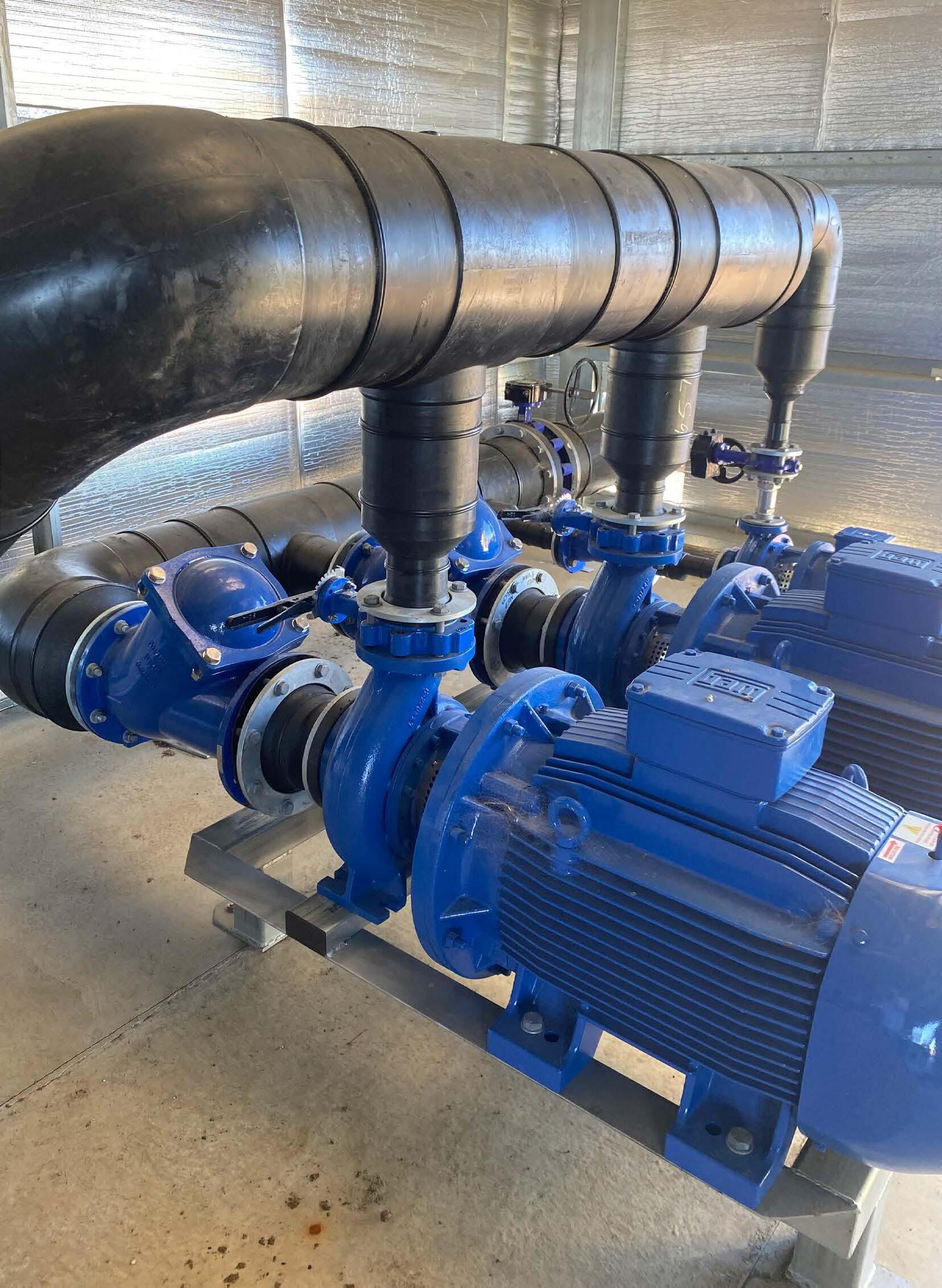

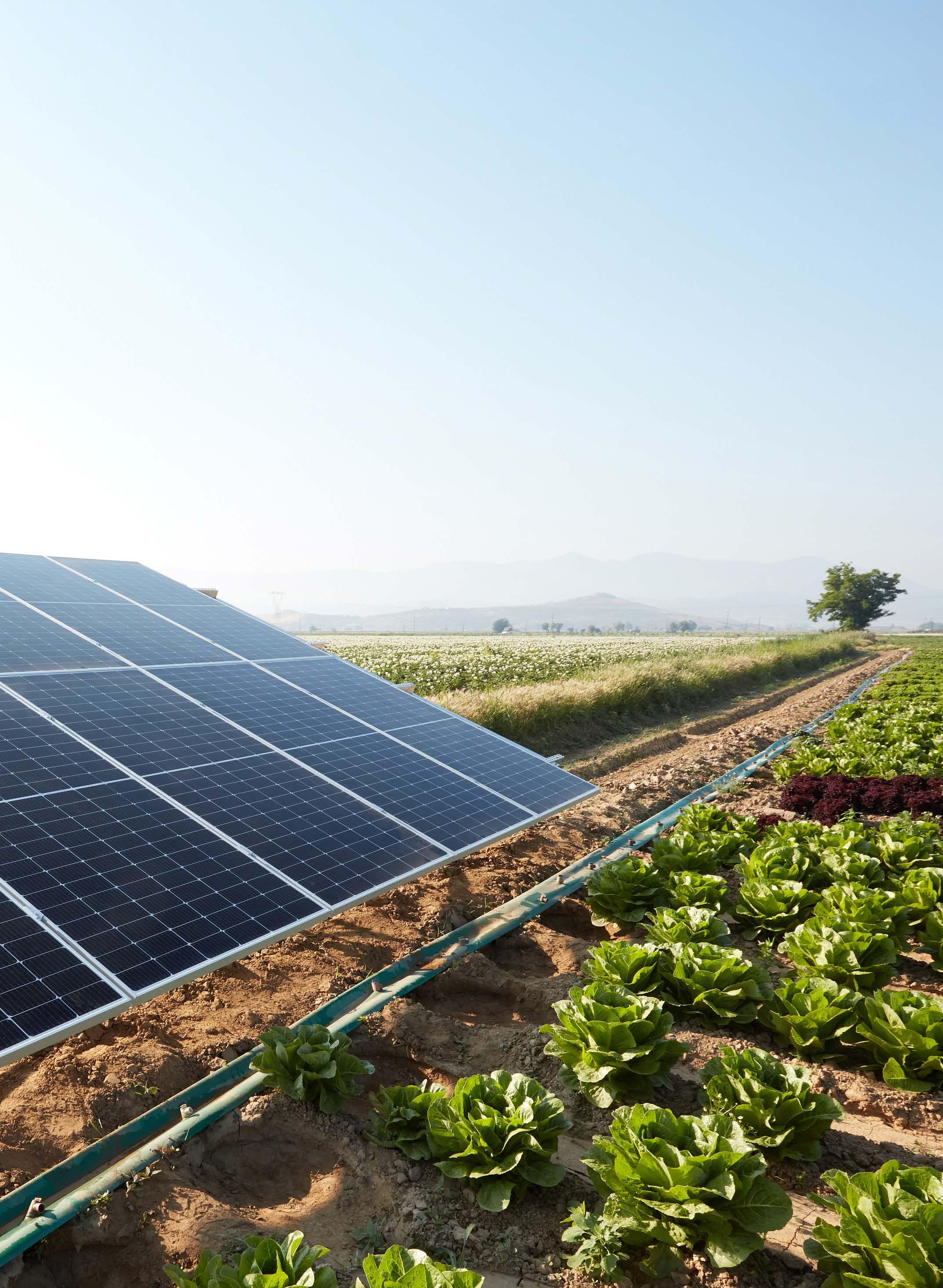
Solar irrigation is gaining traction as a cost-effective and sustainable alternative to diesel and electric pumps.
Technology choices depend on duty point, water source depth, and piping efficiency, influencing both performance and cost savings.
Hybrid systems and energy storage help ensure consistent operation, reducing dependence on diesel backup.
Advanced software and AI-driven solutions are shaping the future of solar irrigation efficiency.
Government incentives focus on power generation rather than off-grid solar irrigation, creating policy gaps.
Environmental benefits include lower emissions and improved water efficiency, but product lifecycle impacts should be considered.
Collaboration across industries is essential to overcoming regulatory and installation challenges.
Economic viability depends on ROI analysis, factoring in upfront costs versus long-term savings.
THERE’S NO QUESTION THAT SOLAR IRRIGATION IS GAINING TRACTION AS IRRIGATORS SEEK DEPENDABLE, COST-EFFECTIVE, AND ENVIRONMENTALLY SUSTAINABLE ALTERNATIVES TO DIESEL OR ELECTRIC PUMPS. WE INTERVIEWED STEPHEN JENNINGS OF FRANKLIN ELECTRIC FOR HIS INSIGHTS AS A PUMP SUPPLIER FAMILIAR WITH SOLAR IRRIGATION PROJECTS.
Selecting the right solar irrigation components
Irrigation Australia: What factors influence the selection of solar panels, pumps, and other components for a specific irrigation project?
Stephen: The optimal duty point, or daily total water required to be pumped if transferring. After that, an assessment of the pumping scenario, depth of water and suction lift to the pump location, if it’s a surface pump.
Head calculations (the height a pump can raise liquid) and efficient pipe design are next: larger piping reducing pressure loss, can have a big impact on solar panel numbers needed, and savings on initial equipment costs.
“In Australia, a PV electrician must be engaged for systems of 90 v or more.”
Stephen: This is a big challenge. Batteries are starting to make some movement, but return on investment (ROI) is long, with a large initial investment. In many cases, people are using diesel generators to operate in low-light conditions or combining solar and diesel to make up the energy needed to reduce fuel costs.
Advancing efficiency with smart solar innovations
Irrigation Australia: What are the latest advancements and innovations in solar irrigation technology that are likely to shape the future of the industry?
Stephen: The blending of different sources of power from battery, grid, generator and solar PV. The biggest thing will be software/smart technology, possibly AI, to best determine how to bring these powers together and maximise efficiencies. Even following the energy market to buy and store grid power at cheap or wholesale prices. I’ve seen this work successfully on a project by others in Gippsland, Victoria.
Irrigation Australia: What are the different types of solar-powered irrigation systems currently being implemented in Australia (e.g., submersible pumps, surface pumps, drip irrigation, sprinkler systems)? What are their respective advantages and disadvantages?
Stephen: Solar pumps are available in three types:
• Submersible pumps: Submerged in water, these pumps push water to the surface. They are typically used for deeper water sources such as wells, dams and rivers where suction lift is too high to achieve.
• Surface pumps: Installed above the water level, these pumps draw water into the system or below the water source as a flooded suction.
For solar panels, an assessment of area required and ground formation to determine the array frame is important. For example: Rammed post, strip footings or a concrete slab. Large systems need a PV electrician involved to make further site assessment. In Australia, a PV electrician must be engaged for systems of 90 v or more.
Ensuring reliability: energy storage and hybrid solutions
Irrigation Australia: How is the energy storage component (e.g., batteries) integrated into solar irrigation systems to ensure reliable water supply, especially during periods of low solar irradiance or high demand?
Battery cost is also going to be a big one going forward. As battery costs come down, we will see more utilisation – more so in power generation, not solar pumps.
and maintaining solar irrigation systems
Irrigation Australia: What are the key considerations for the installation and maintenance of solar irrigation systems to ensure long-term efficiency and reliability?
Stephen: At Franklin Electric, our considerations would be the pump type and location, and access for serviceability. Another consideration is the PV array –being able to maintain grass and trees, so as not to overgrow and shade panels.
• Solar-powered direct pumps: Suitable for smaller irrigation projects, these pumps are directly powered by solar panels and do not require batteries.
Not all systems need batteries. There is minimal use of batteries currently in the industry.
Choosing the best pump for the job will depend on the depth of the water source, the necessary water flow rate, and the size of the area to be irrigated.
Irrigation Australia: What are the key feasibility considerations when planning a solar irrigation project, particularly concerning water source, energy needs, and agricultural or urban planning requirements?
“The largest challenge we find is that clients underestimate the number of solar panels required and suitable locations to position these, as well as the space they take up.”
planning and development phases of solar irrigation projects, and how can these be mitigated?
Stephen: Key considerations are: Is it a direct solar pump that is required during daylight hours, or will it be for power generation, where the pump and other items are powered from the system and have a backup power source to ensure irrigation can occur at required times. For example, if pumping is required overnight then a solar pump would not be suitable. In that case, it would be a power saving exercise via solar and battery, or other energy source. Pumping during the day would reap the biggest benefits.
Irrigation Australia: What are the common challenges encountered during the
Stephen: The largest challenge we find is that clients underestimate the number of solar panels required and suitable locations to position these, as well as the space they take up – especially on large projects where government certification standards need to be met for larger power generation. This is a hard one to approach and I suggest a solar installation PV Certified electrical company should also be engaged early in planning.
Irrigation Australia: How do you assess the economic viability and return on investment for solar irrigation compared to traditional irrigation methods?
Stephen: We look at Return on Investment (ROI): The cost difference of solar products versus a mains grid solution, estimated from running costs. This gives a difference on ROI vs installing mains grid. We never add our costs to get AC mains power to the site. If that is required, it can dramatically reduce the ROI.
Government incentives and policy gaps
Irrigation Australia: What roles do government policies and incentives play in promoting the adoption of solar irrigation technologies in Australia?
Stephen: My personal opinion – there isn’t enough incentive from governments. Most policy applies to solar power generation overall and connection back to the grid. Totally off-grid pumping isn’t really considered well in current policy.
Navigating sustainability concerns in solar projects
Irrigation Australia: Are there any potential negative environmental impacts associated with solar irrigation projects, and how can these be addressed?
Stephen: I guess the environmental impact of creating the products used and disposal of at end of life will be a concern but does not seem to be a big issue as yet. We will see further on this from generic solar supply companies, I’m sure, in the future.
The state of solar irrigation in Australia
Irrigation Australia: What are the current trends and outlook for the solar irrigation market in Australia?
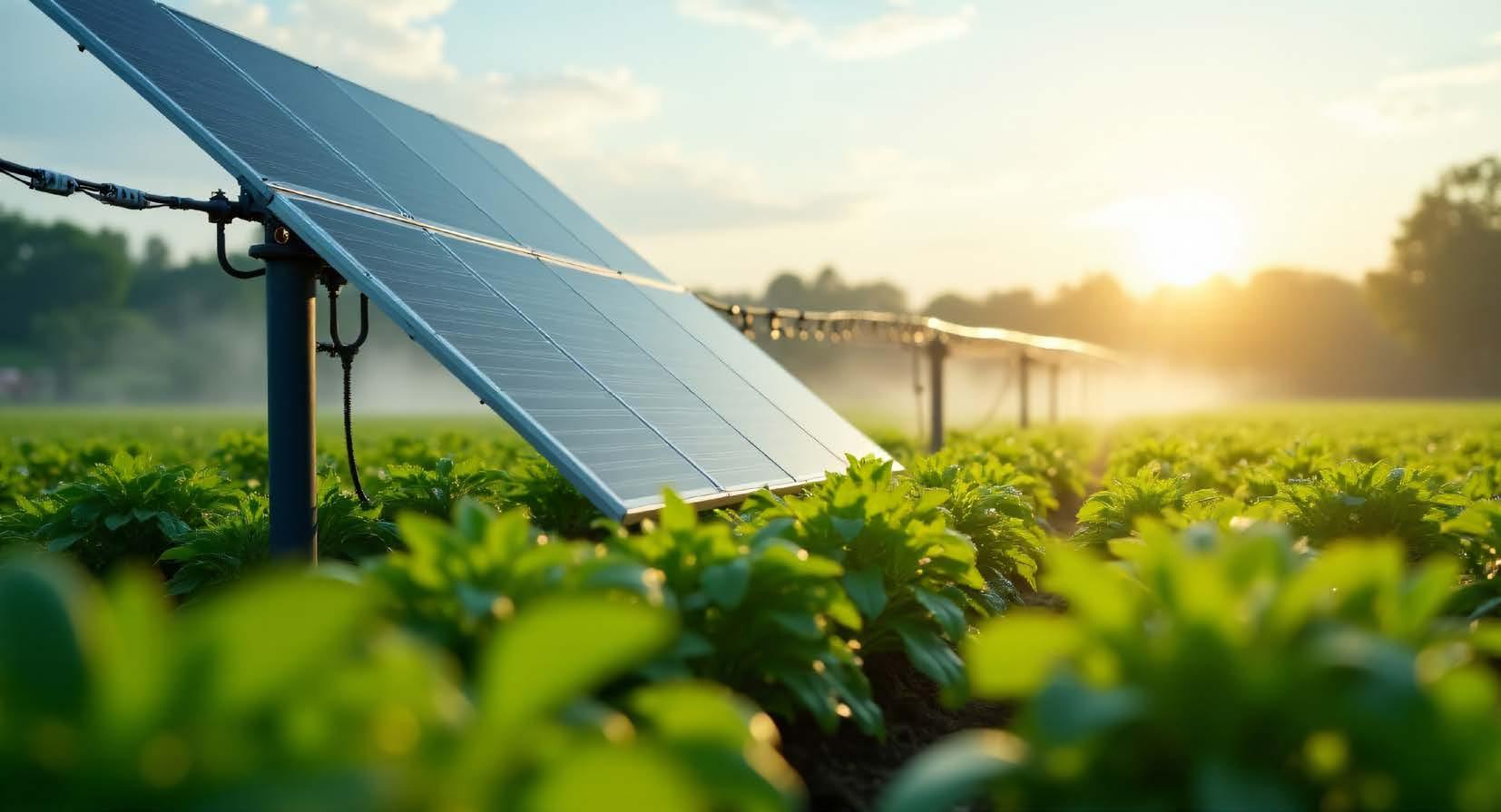
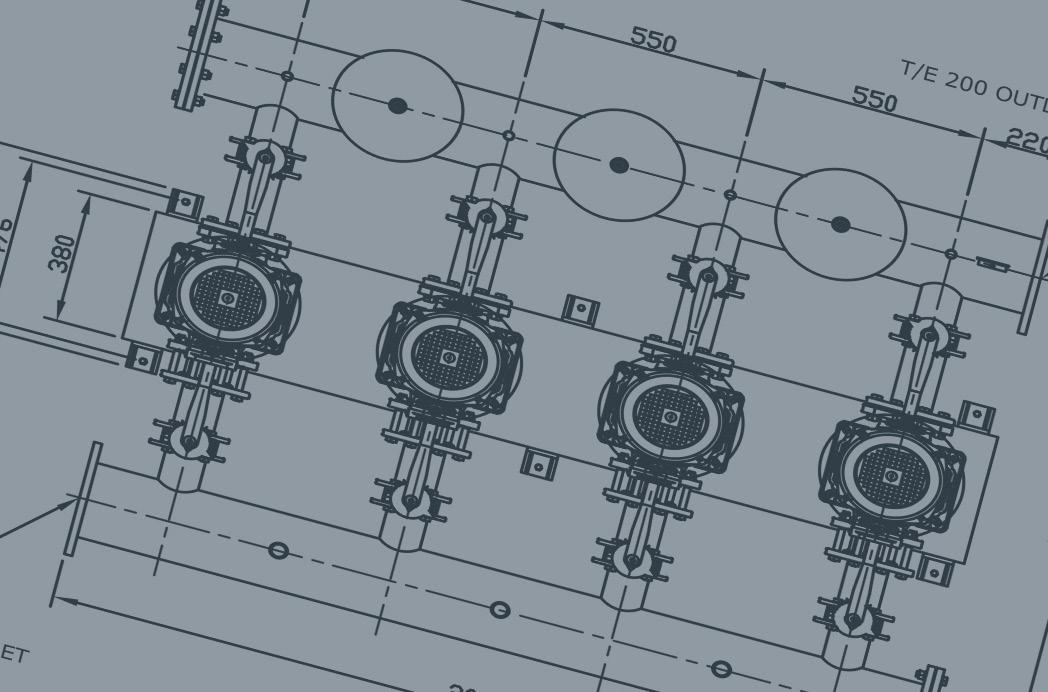
Featuring Lowara pumps and Hydrovar X for best energy efficiency and performance.
Create a booster station engineered to your individual application requirements.
• Maintain constant pressure
• Optimised pump efficiencies
• Longer lifetime and reduced lifecycle costs
• Ideal for Water Supply, Pressure Boosting, Irrigation, and Water Treatment
Lowara’s extensive pump range together with our large selection of custom control options, offer a complete line of booster systems ideally suited for the diverse requirements of irrigation.

Scan to see how Lowara and Hydrovar X reduced motor size and improved efficiency in this irrigation upgrade.
Stephen: This is gaining momentum. Delays could be initial costs –especially relating to batteries and if needing to irrigate outside of sun hours. Enquiries are increasing but large systems seem to be slow compared to small systems or water transfer to storage.
Irrigation Australia: What are the key skills and expertise required for professionals working in the solar irrigation sector and those entering the workforce?
Stephen: Collaboration required between different businesses and expertise is important. Electrical licenses and certifications are a limiting factor when it comes to larger scale installation.
How can collaboration between irrigation specialists, solar energy experts, and agricultural stakeholders be fostered to accelerate the adoption of solar irrigation?
Stephen: Much more collaboration is required as the skill sets of these industries are vastly different. This will certainly hold transition back. Bringing both industries together and ensuring successful working relationships will be key.
“If there is no mains power available and costs are high to bring power to that area – this is where solar pumping has an advantage.”
Irrigation Australia: What role does research and development play in advancing the field of solar irrigation?
Stephen: It has huge potential to demonstrate operational savings and reliable energy.
Irrigation Australia: What advice would you give to farmers or agricultural businesses considering investing in solar irrigation?
Stephen: Strongly outline your philosophy of operation and requirements of the system so that the best system can be specified to your needs. In some cases, solar power connection to grid is selected due to nearby connection. This is because of the availability of grants and the possibility to use solar power generation to offset running costs, other than irrigation, when not in use. This is where rigorous assessment is required. If there is no mains power available and costs are high to bring power to that area – this is where solar pumping has an advantage.

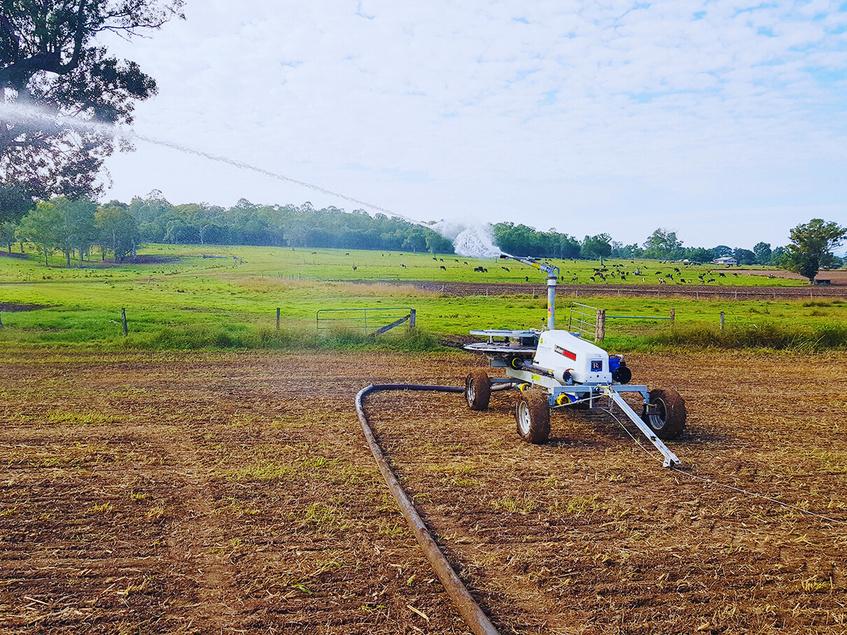

Funding pathways for solar irrigation: grants, rebates, and government support
As solar irrigation continues to evolve, the need for clear regulation, fit-for-purpose incentives, and cross-sector collaboration will be crucial in driving adoption. Farmers and industry specialists can explore available funding programs to support their transition to sustainable irrigation solutions.
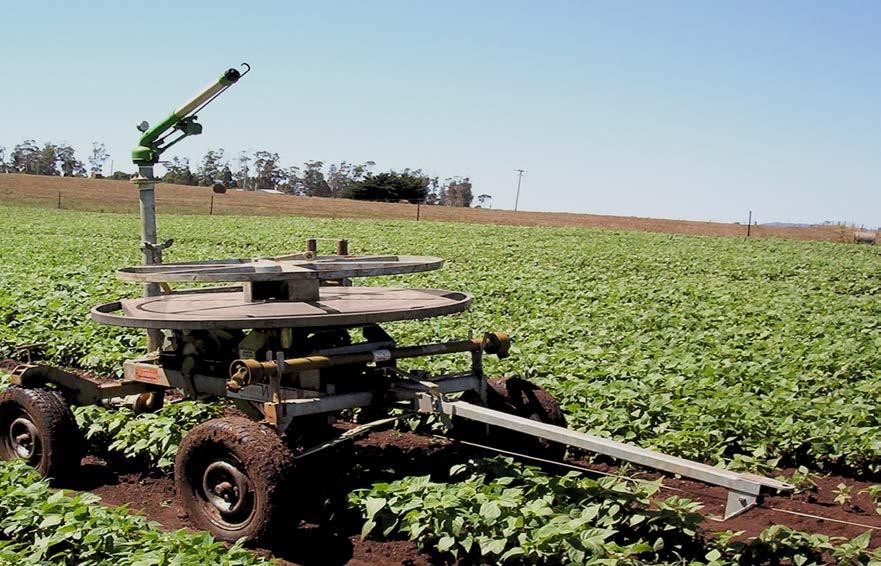
Funding programs currently available for solar irrigation:
• Climate-Smart Agriculture Grants – Supports farmers in adopting climate-smart practices, including solar irrigation. Read more here.
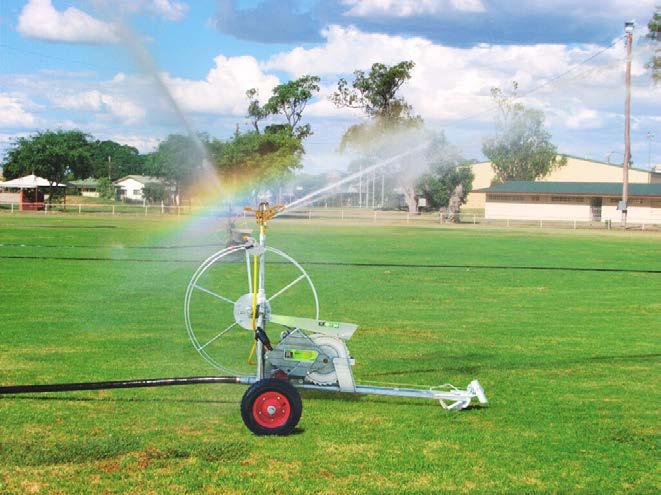
• Government Rebates & Loans for Solar – Provides financial assistance for solar installations, including irrigation systems. Details here.
• Agriculture Victoria Grants & Programs – Offers various funding opportunities for Victorian farmers, including sustainability initiatives. Explore them here.
Note: This list is not exhaustive. Check the state and territory websites relevant to you.
In 2018, Deacam Industrial Engineering partnered with Sprinkler Fix and Franklin Electric to develop a groundbreaking solar-powered irrigation system, pumping water 3.5 kilometres to the Giant Steps vineyards in the Yarra Valley. Originally projected to achieve a return on investment (ROI) within 5 to 6 years, Franklin Electric reports that the ROI was realised in half that time. Watch this 2018 video for the project's backstory.

Client: Giant Steps vineyards, Yarra Valley, Victoria.
System design: Deacam Industrial Engineering (with input from Sprinkler Fix and Franklin Electric).
Installation: Deacam Industrial Engineering.
Main water supply before and after: Yarra River feeding dams at Giant Steps, Sexton and Treasury Wine Estate in the Yarra Valley.
Challenges:
Distance – 3.5 km from the water source to Giant Steps vineyard, with 280 m separating the pump and variable speed drive.
Power – the client required a net zero emissions power solution.
Upgraded pump system: The new system delivers 11 litres per second using a 22 kw high efficiency, permanent magnetic motor.
Water management: Pooling their resources, the system feeds dams at Giant Steps, Sexton and Treasury Wine Estates from the Yarra River.
You can count on our expert and committed team specialising in irrigation. We have the ability to source unique and specific industry products.
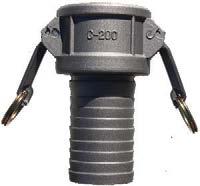
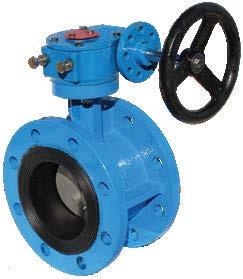
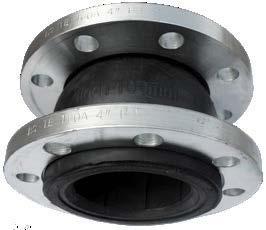
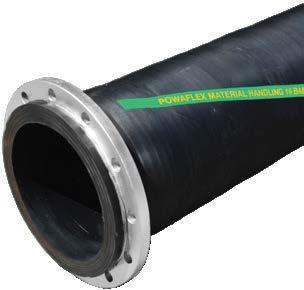
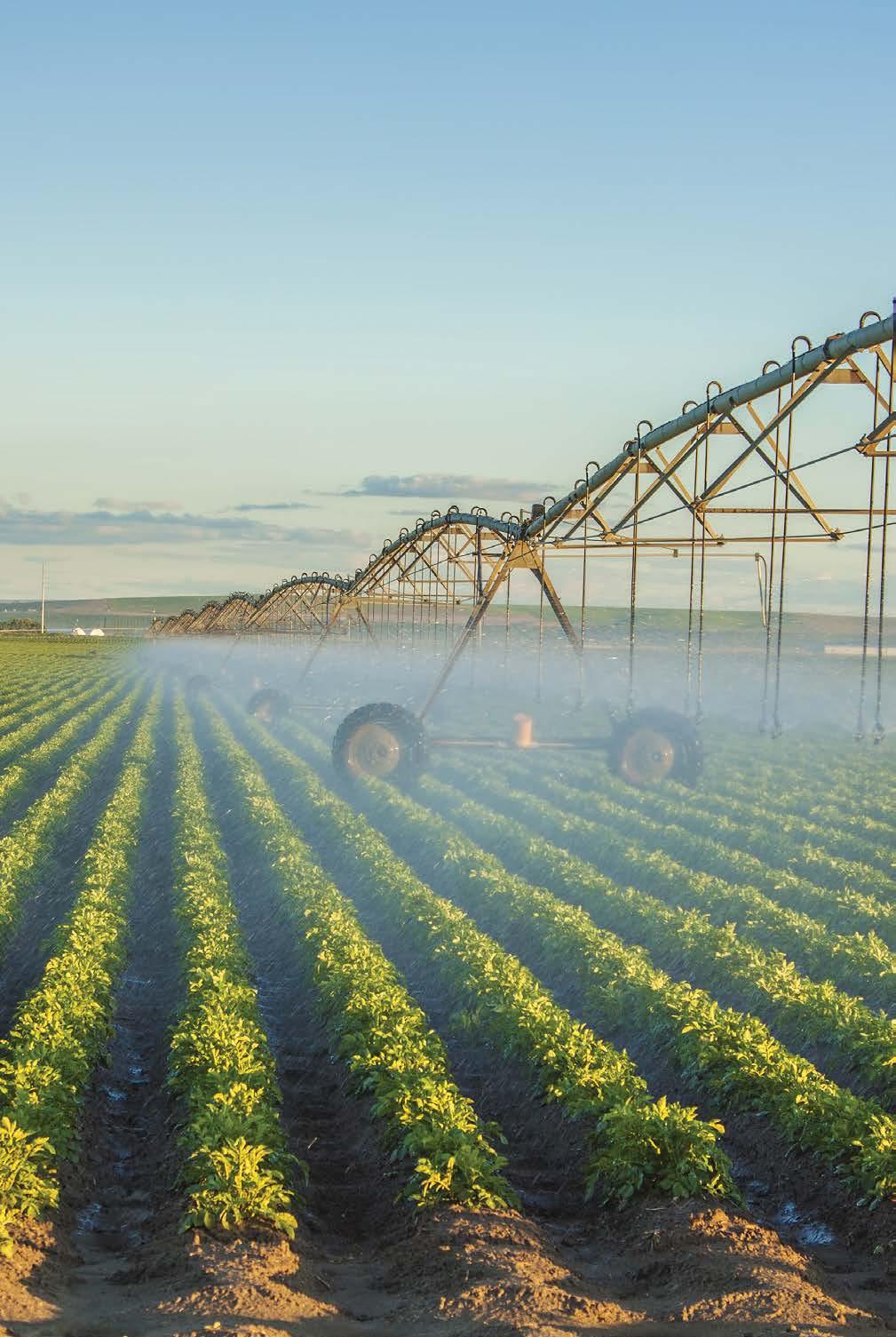
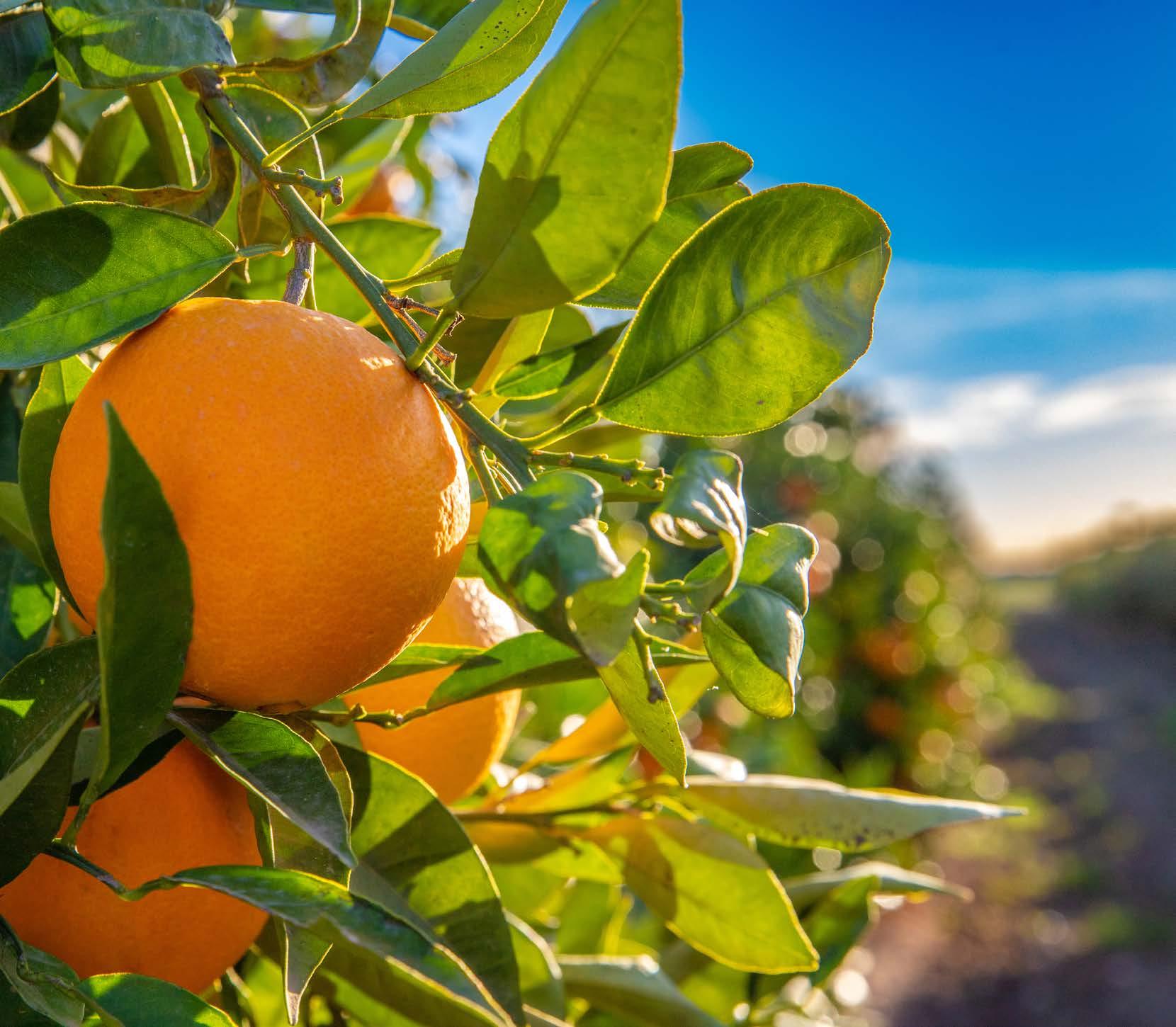
Client:GunniblePastoralCompany, Gunnedah,NSW
Systemdesign:LorentzAustralia/ Lambert&TorrensGunnedah
Installation:LorentzAustralia/Lambert &TorrensGunnedah
Challenges:Runningahigh-capacity irrigationpumpwithoutaccessto 3-phasepower.
Adiesel-poweredalternativeoffered lowerinitialinvestmentbutproved uneconomicalduetofueland maintenancecosts.
Upgradedpumpsystem:LORENTZSolar PumpSystem.
Watermanagement:Netafimdripsystem withremotecontrol
Whilethesolarsystemrequiredasizable upfrontinvestment,itwascheaperthan installing3-phasegridpower,requiring fewerongoingcoststhanadiesel alternative.Maintenanceisalsominimal, fuelexpensesaresignificantlyreduced, andthefarm’scarbonfootprinthasbeen markedlyreduced.
"In 2024, representatives from Lorentz Global Headquarters in Germany, along with the local installer, joined us for a site visit at Gunnible, where we met with Robert to seek feedback on his system and discuss future developments. We believe this is a critical step in ensuring continuous improvement and delivering solutions that meet the evolving needs of our customers and the broader industry." Pat Lee, ReAqua

“We made the shift to solar irrigation back in 2019 as early adopters, looking for the most costeffective and sustainable solution. The initial system had reliability issues, which made things a little difficult. In 2021, we upgraded to a Lorentz solar pumping system and the improvement was immediate. Since then, any unforeseen issues have been quickly resolved thanks to the support from Lorentz Australia and Lambert & Torrens – both of whom have been excellent to deal with. Looking back, the move to solar pumping has proven to be a great decision for us –both commercially and operationally.”
Robert
Hoddle, Gunnible Pastoral Company
In the heart of New South Wales' fertile Namoi Valley, the Gunnible Pastoral Company (Gunnible) is blazing a sustainable trail for Australian agriculture. Owned and operated by the Hoddle family, the 1,800-hectare enterprise spans two properties within the Gunnedah Shire and features a thriving 50-hectare citrus orchard, home to 25,000 trees. The farm also supports Angus cattle and cereal grain production. With abundant underground water and long sunny days, the region offers ideal conditions for citrus cultivation – and now, it’s also the perfect environment for a solar-powered irrigation revolution.
The Hoddles faced a common challenge among rural farms – powering a highcapacity irrigation pump without access to the electricity infrastructure needed. The
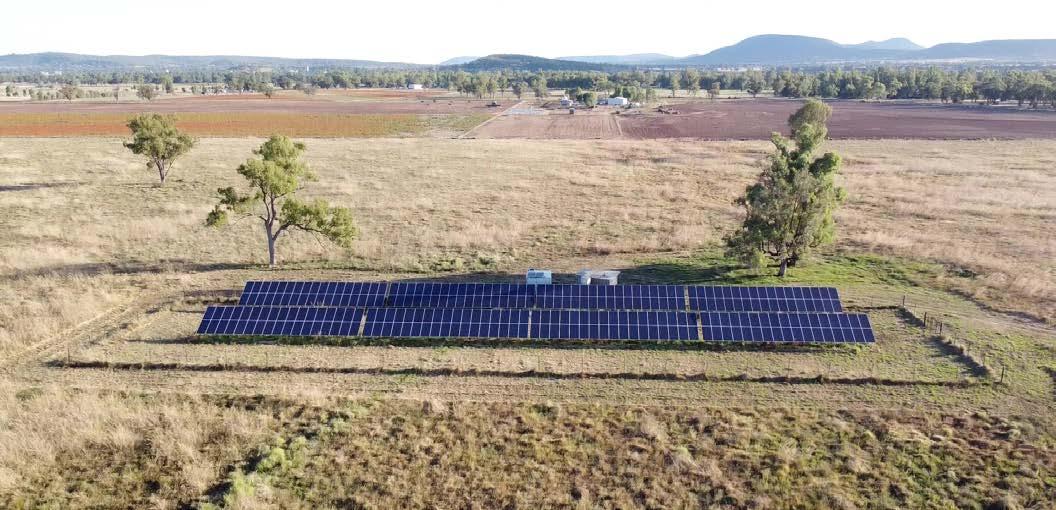
scale of the citrus operation demands a large 3-phase pump to meet water supply needs. Unfortunately, 3-phase power is not available on-site, and extending the grid to the property would have required a substantial upfront investment, not to mention the burden of high ongoing electricity bills.
The alternative, a diesel-powered system, came with its own drawbacks. Although the upfront capital investment was more manageable, ongoing fuel and maintenance costs rendered this option uneconomical in the long term.
Estimates showed a potential saving of around $80,000 per year by eliminating diesel and grid power reliance.
With these considerations in mind, the decision to invest in solar power was clearly the best solution. Not only did solar offer a way to bypass the costly installation of grid power, it aligned with Gunnible’s sustainable farming goals. The system can also be integrated with a backup generator to guarantee water delivery, regardless of weather conditions.
The system installed at Gunnible is both robust and sophisticated in capability, yet simple to operate. Designed specifically to meet the irrigation demands of their citrus orchard, it includes:
• LORENTZ Solar Pump System comprising:
- PSk2-70 solar pump controller, managing the power delivery to the submersible bore pump.
- Smart Power Blending Unit, allowing seamless integration between the pump controller and a backup generator as required. Prioritising the available solar power, the SmartPSU uses all available solar power and blends in the required generator power to TOP UP the solar as required.
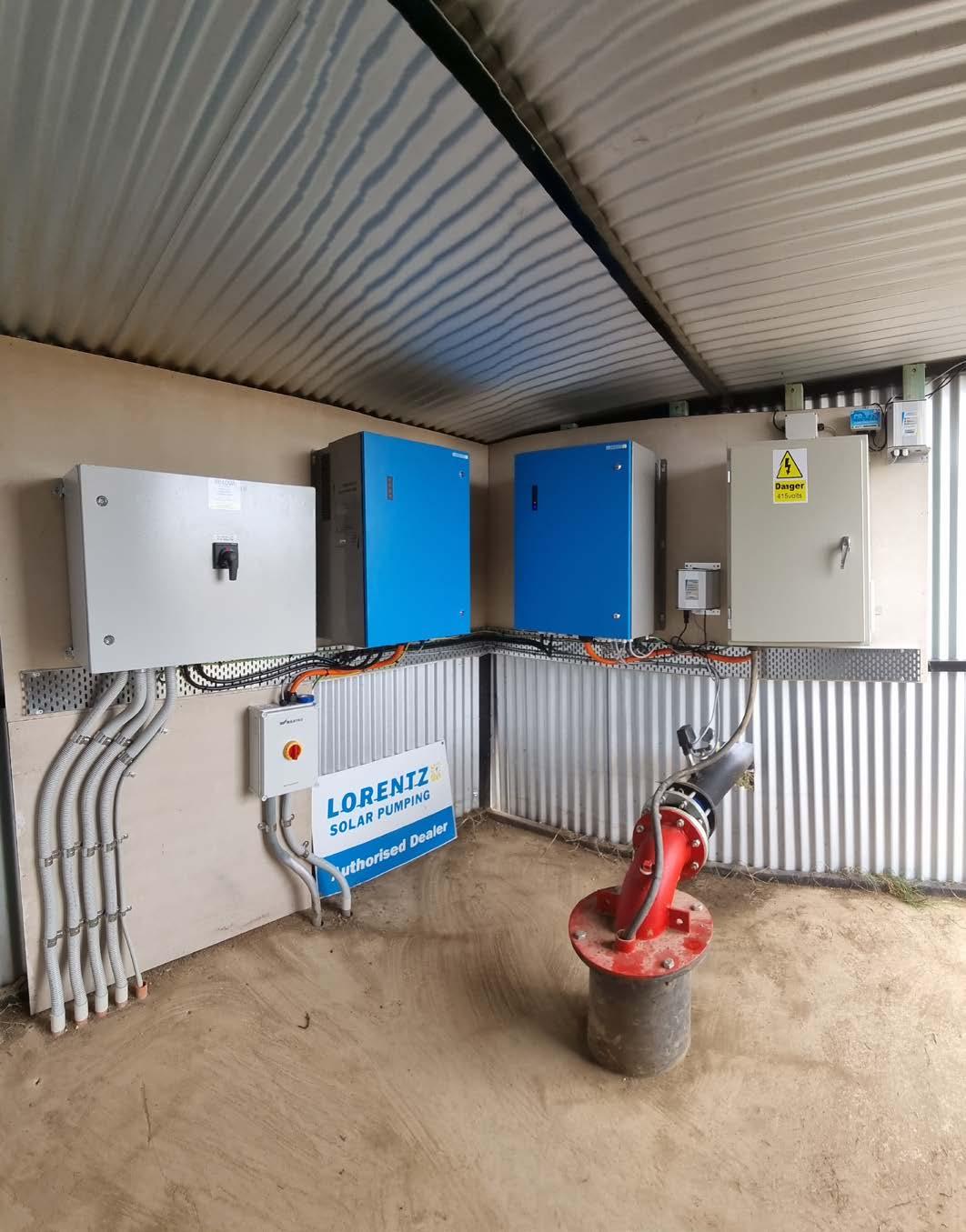
- SmartStart Automatic Remote Diesel Generator Switch. The pump controller is fitted with a sun sensor which provides a continuous measurement of the sun’s irradiation. If the irradiation drops below the required intensity to run the pump within the required specifications, the pump controller will then signal the SmartStart to start the backup generator.
- PS Commander Unit providing remote management and monitoring of the pump system through the LORENTZ Global online platform.
• 90 kW of solar capacity, generated through 272 high-efficiency 330 W solar panels.
• Caterpillar 110 kVA 3-phase diesel generator.
• A 45 kW 3-phase submersible motor, coupled with a 6-stage centrifugal pump.
• This setup delivers an impressive 30 litres per second to 130 psi of pressure – sufficient to meet the farm’s peak irrigation needs.
The LORENTZ solar pump system is controlled remotely via the Netafim irrigation control platform. When water is required, the Netafim controller automatically switches the pump on, ensuring precise and efficient operation. During periods of low solar output or night-time irrigation, the backup generator steps in to maintain water supply without disruption.
Estimates showed a potential saving of around $80,000 per year by eliminating diesel and grid power reliance.
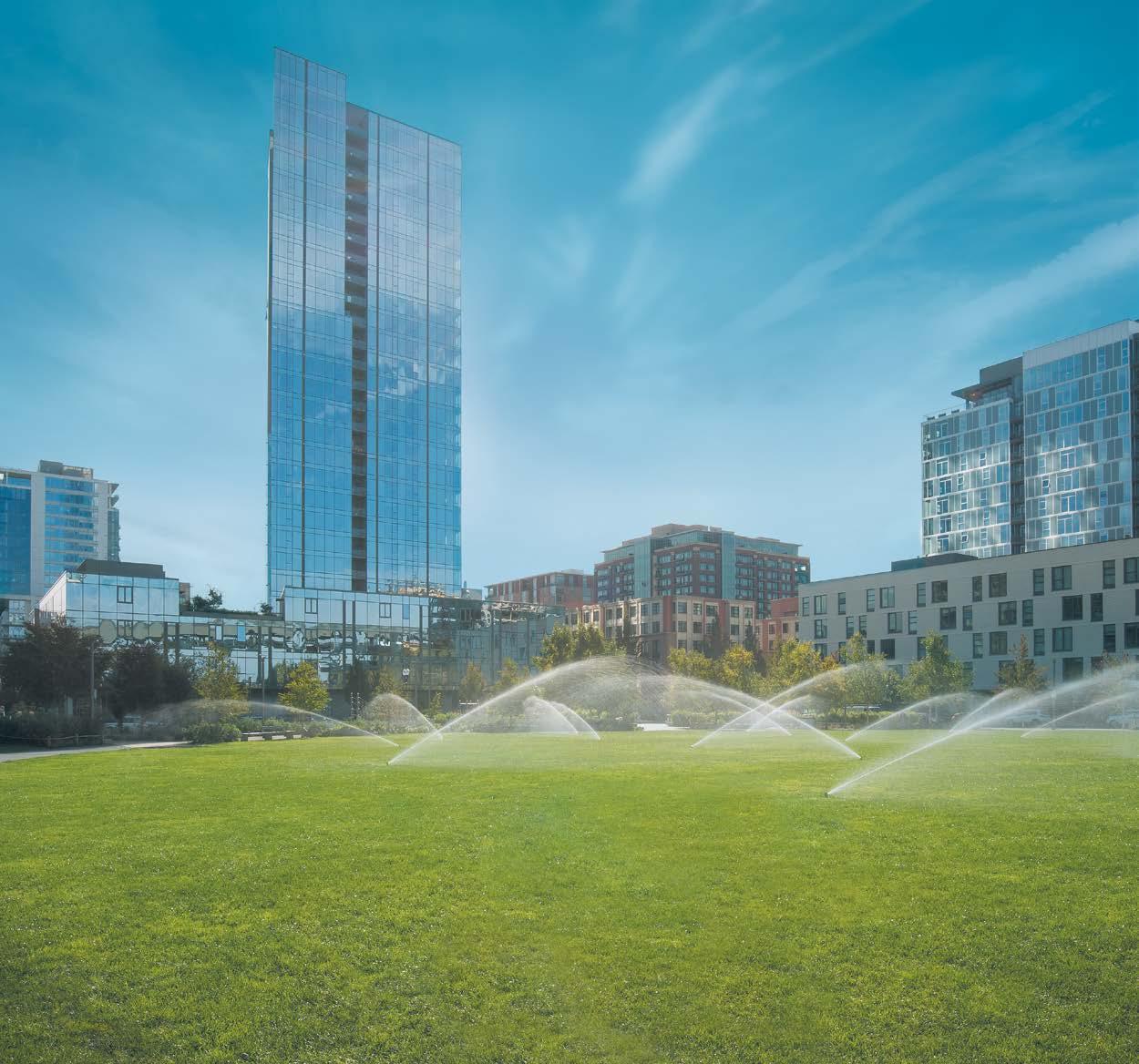
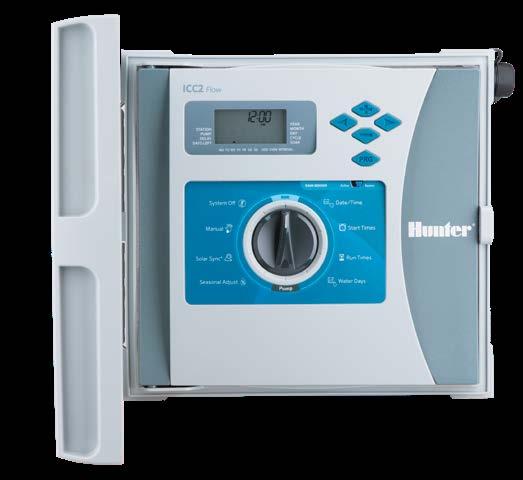
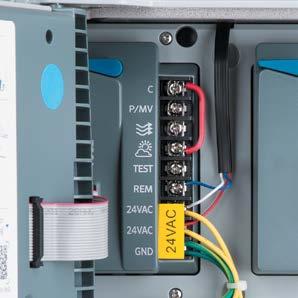
PRECISION WATERING WITHOUT THE WASTE. Now featuring stationlevel flow monitoring plus two sensor inputs, the updated ICC2 Controller ensures smooth system operation, substantial water savings, and seamless irrigation control — without extra plug-ins, add-ons, or internet connection.

National Free Call: 1-800-HUNTER Toll-Free Fax: 1 -800-651-680 www.hrproducts.com.au hrsales@hrproducts.com.au
LANDSCAPE IRRIGATION | Built on Innovation® Learn more. Visit hunterirrigation.com
Tel: 1-300-856-368 Fax: 1-300-856-369 www.nelsonirrigation.com.au info@nelsonirrigation.com.au

Water conservation and efficiency are paramount in modern farming, particularly in Australia where water resources are finite and climate variability is a constant challenge. Gunnible has addressed this by choosing a Netafim drip irrigation system, known for its precision and sustainability.
Each tree is serviced by eight drippers fed from laterals running down each side of the row of trees. These drippers are strategically placed beneath the canopy, in the shade, to minimise evaporation and deliver water directly to the root zone. This targeted approach not only ensures healthy tree growth but optimises water use.
The system also integrates fertigation –delivering fertiliser directly through the irrigation lines. This ensures nutrients are supplied precisely where and when they are needed, further boosting efficiency and plant health.
Since installing the solar-powered irrigation system, the Hoddle family has witnessed significant cost reductions and operational efficiencies. While the solar system required a sizable upfront investment, it was still less expensive than installing 3-phase grid power and comes with far lower ongoing costs than a diesel alternative. Maintenance is minimal, fuel expenses are significantly less, and the farm’s carbon footprint has been markedly reduced.
This forward-thinking approach supports long-term sustainability, both environmentally and economically. It also sets an example for other agricultural enterprises considering how best to adapt to rising energy costs and growing climate challenges.
A model for the future
Gunnible Pastoral Company’s solar-powered irrigation system is more than just a farm upgrade – it’s a blueprint for sustainable agriculture. By leveraging renewable energy and precision irrigation, the Hoddles have maximised productivity while reducing costs and environmental impact.
It’s a testament to what’s possible when traditional farming wisdom meets modern technology, all under the reliable power of the Australian sun.
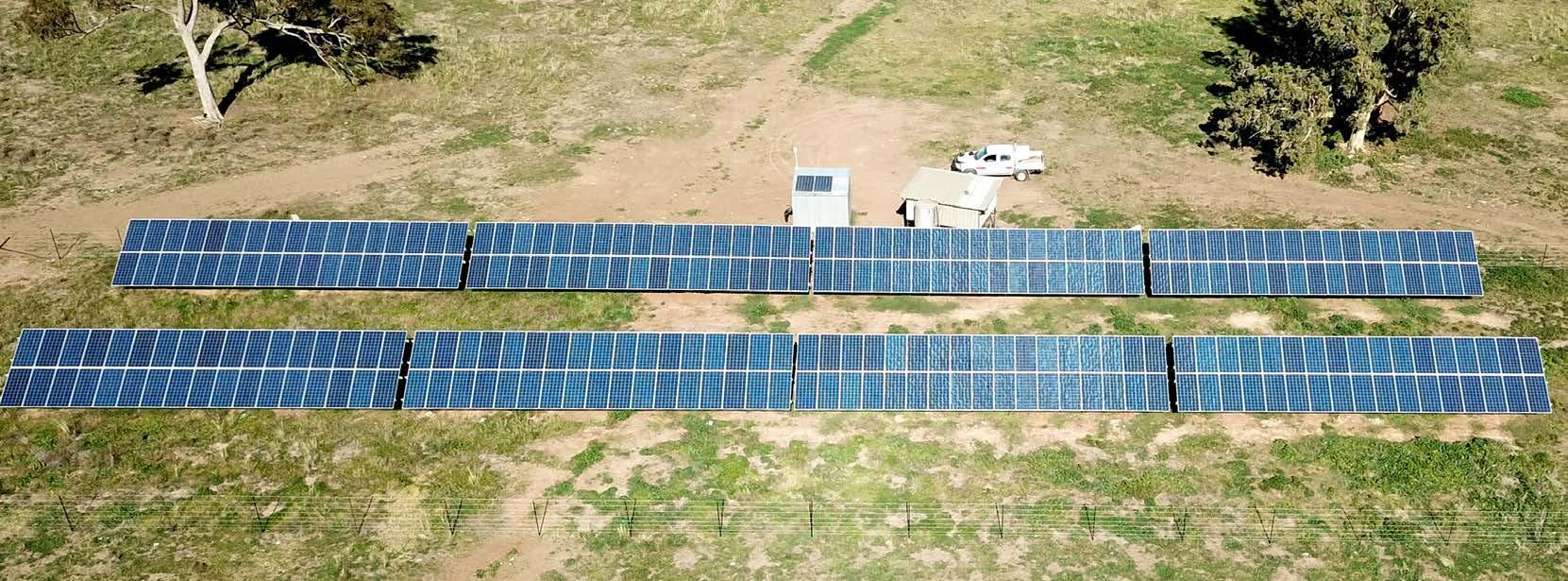

BY EVE WHITE AND GEMMA NARDONE
Digital technology is developing quickly and is transforming irrigation with realtime data, analytics, and automation.
Tools vary widely in function, but most fall into two broad categories: those that monitor conditions (like sensors and weather stations) and those that support or automate irrigation decisions.
Choosing the right tool depends on the operation’s size, budget, and specific irrigation challenges.
Many tools are now more affordable and user-friendly (even for small-scale farmers) but mastering them still takes time.
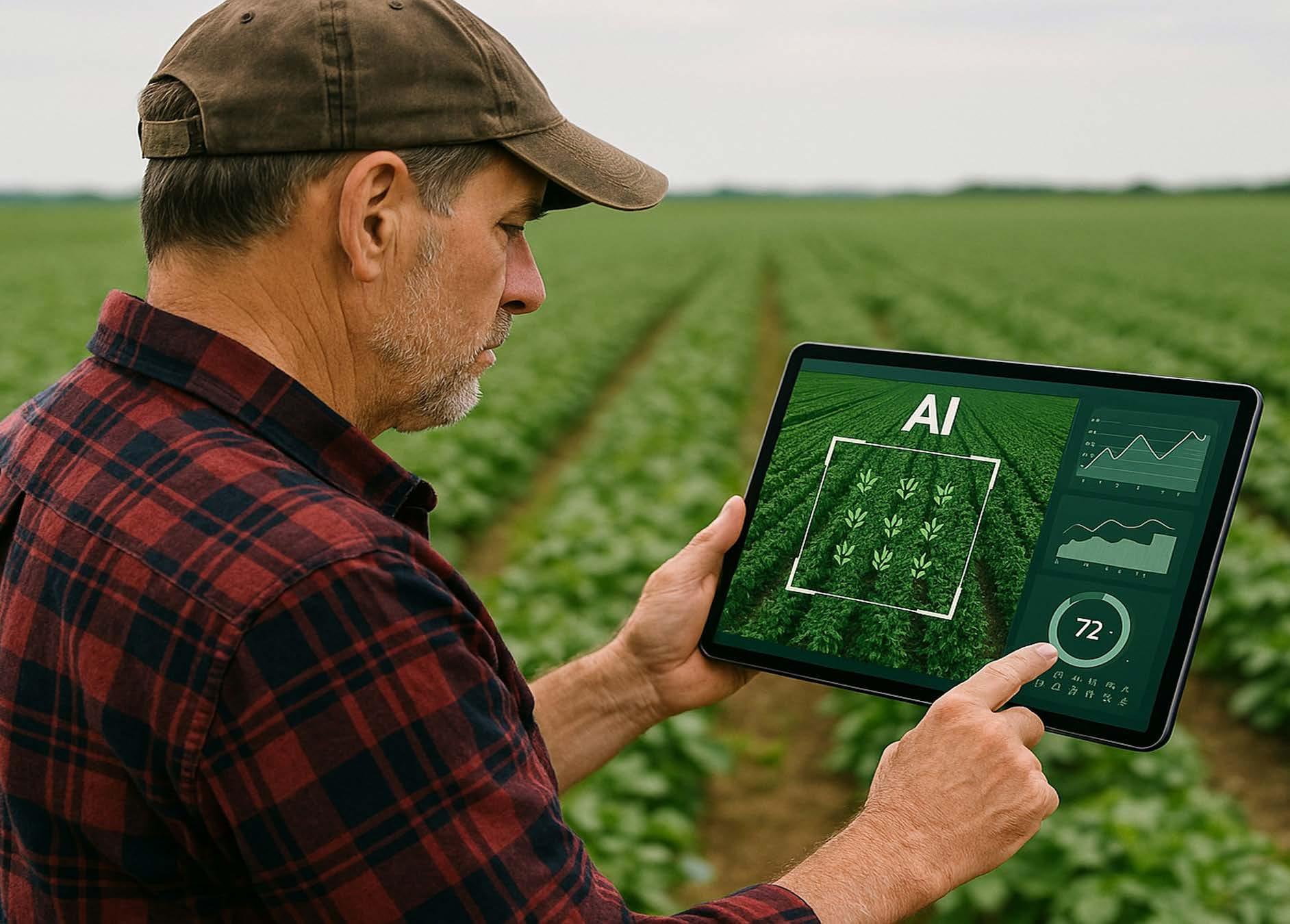
Reliable and affordable internet and power supply are essential for real-time sensor data, automation and equipment performance.
AI will increasingly reduce manual labour, but for now, human oversight remains important for decision-making.
One Basin CRC is undertaking targeted research towards accelerating irrigation technology integration and adoption across Australia with Project Advisory Committees that enable involvement.
IRRIGATION HAS MOVED WELL BEYOND VISUAL CHECKS AND MANUAL SCHEDULING. IN THE PAST, GROWERS RELIED ON EXPERIENCE, HISTORICAL WEATHER PATTERNS AND AN UNDERSTANDING OF SOIL AND CROP CYCLES TO GUIDE THEIR DECISIONS. TODAY, DIGITAL TECHNOLOGY IS CHANGING THE GAME, PROVIDING REAL-TIME DATA, FORECASTS AND AUTOMATION TO HELP USE WATER MORE EFFICIENTLY AND MAKE BETTER DECISIONS.
With so many options available, where should growers and irrigation professionals begin? According to Grant Gilmour, Director of Beanstalk AgTech – a company that helps farms and agribusinesses make better use of technology – the starting point is a clear goal. “Is it reducing water use, increasing yields, or managing labour?” he says. “Only once you know that, can you accurately assess which digital tools fit best with your existing infrastructure and farm practices.”
Understanding expectations is also important. “We’re not at the stage where systems are fully automated – anywhere in ag,” says Grant. “Digital tools are mostly assistants, not workers. Like any new piece of equipment, there’s a learning curve – but the benefits are real, especially if the tools come with a process and culture change to get value from them.”
Digital irrigation solutions tend to fall into two main categories:
1. Data collection and monitoring tools –These gather information from the field but don’t directly control irrigation.
2. Irrigation control and automation systems – These use data to support or automate irrigation actions.
These tools can be used independently or in combination, depending on the needs, scale and resources of the operation. While integration often enhances accuracy and efficiency, it’s not always necessary or practical for every context.
TABLE 1: Examples of irrigation products currently in use in Australia (June 2025)
Aglantis Aglantis Smart Irrigation Data & automation
1. Data collection and monitoring
• Weather stations and other atmospheric sensors measure climate variables like temperature, humidity, wind speed, and solar radiation.
• Soil moisture sensors provide real-time soil moisture levels at different depths.
• Plant-based sensors track plant water stress via canopy temperature, sap flow, or stem diameter changes.
• Remote sensing uses drone, plane, and satellite optical and radar sensors to assess crop health and irrigation needs.
• Flow and pressure sensors monitor water movement through pipelines and irrigation networks to prevent inefficiencies and losses.
All of these collected data inform critical models including evapotranspiration.
All crop types and irrigation systems Full automation driven by real-time data and adaptive scheduling.
CropX Vertex 4 Data collection & decision support Any crop type or irrigation practice. Partial integration with automation via API. Agronomic software platform providing decision support for irrigation management and disease control.
HTM Complete Farm in ONE Data & automation Horticulture, broadacre, tree crops, nurseries.
MAIT Industries iNTELLiTROL Data & automation All crop types and irrigation systems.
Netafim GrowSphere Data & automation
Optional automation – user-guided or autonomous.
Full automation and integration with third-party decision support systems via API.
All crops and all irrigation systems. Full automation via crop models and real-time data
Rivulis and Goldtec Dream 2 Data & automation All crop types and irrigation systems.
Sentek Drill & Drop Data collection Shallow to deep-rooted crops; vegetables, fruit trees.
SWAN Systems SWAN Systems Decision support Horticulture, turf, pasture; drip, pivot, flood, sprinkler.
Wildeye Wildeye Data & limited automation Large-scale irrigation fleets; any irrigation system.
For more products visit AgTechFinder.com
Full automation and integration with third-party decision support systems via API.
Data only - manual interpretation.
Decision support - integrates with automation.
Remote monitoring of any crop/pasture, and operation of any irrigation systems, large or small, concentrated or distributed.
Disclaimer: Table1 presents a selection of irrigation technologies currently available in Australia. Inclusion does not imply endorsement by Irrigation Australia Journal, Irrigation Australia, or the article’s authors, nor has any payment been received for product placement. Readers are encouraged to conduct their own research to determine the suitability of these technologies for their specific needs.
2. Irrigation decision and control systems
• Decision-support software (using AI and cloud-based analytics) helps plan irrigation based on real-time and historical data. While many systems still rely on manual implementation, some can integrate with automated controls for more seamless operation.
• Automated irrigation control automatically adjusts irrigation timing and flow based on pre-set parameters and sensor feedback.
• Integrated irrigation networks and smart water delivery optimise large-scale irrigation infrastructure for efficiency and water conservation.
Grant says the biggest benefits of adopting digital technology include water savings, yield increases, labour efficiency, and reduced erosion and energy use. “I’ve heard of cases with up to 25 per cent water savings,” he says. “And when you prevent overwatering, you often improve yields too.”
Despite the benefits, common myths remain:
• "It will be too expensive" – Digital systems are becoming more affordable and easier to use, even for small farms.
• "I can automate it all" – Full automation isn’t here yet. Human oversight is still critical.
• "It’s plug-and-play" – Like any equipment, digital tools require learning and time to use well.
The One Basin CRC is playing a central role in accelerating irrigation technology integration across Australia. This national consortium of over 85 partners is focused on developing smarter, more efficient water management systems that support both agricultural productivity and long-term sustainability.
Its work focuses on:
• Diversifying economic opportunities – Strengthening resilience in the face of increasing water scarcity.
• Transitioning irrigated agriculture for a drier future – Supporting adaptation strategies that align with evolving digital solutions.
• Designing smart connected water infrastructure –Developing systems that maximise efficiency while meeting multiple demands.
Visit the One Basin CRC (1BCRC) website.
Industry input, including from Irrigation Australia, helps guide the 1BCRC's research and ensures new technologies are scalable and practical.
“AI will play a bigger role, using real-time data and historical patterns to make better decisions about when, where, and how much to irrigate.”
When deciding whether to invest in digital irrigation, it’s important to weigh both practical considerations and strategic planning. Here are key points to guide decision-making:
• Cost vs return – Upfront costs may be offset by long-term gains in water, labour, and productivity. Conduct a quick cost-benefit analysis using: (expected benefits – costs) / costs.
• Learning curve – Digital tools require training and time to use effectively. Like any new equipment, there’s an adjustment period.
• Connectivity and power – Real-time systems depend on reliable networks and energy. Failures can limit effectiveness, so backup options may be needed.
• Ongoing costs – Subscription models vary. Review pricing terms, caps, and support provisions to ensure financial sustainability.
• Software updates and compatibility – Ensure updates are included in contracts and remain compatible with your existing systems.
• Support availability – Check if technical support is available in your region, especially for tools with a hardware component.
• Start small – Trialling new tools at a small scale reduces risk and allows time to evaluate compatibility and results.
• Collaborate and learn from others – Work with other growers, networks and industry groups to share insights and accelerate adoption.
• Build strong foundations – Effective use of AgTech depends on having the right processes, training, and digital literacy to interpret data and act on it.
According to Grant, we’ll see smarter, more precise tools in the next five years. “AI will play a bigger role, using real-time data and historical patterns to make better decisions about when, where, and how much to irrigate,” he says.
As an example, Grant points to plant-based sensors, which can reduce water use by 40 to 60 per cent without affecting yield or quality. Unlike soil sensors, these measure water stress directly from the plant. “That makes them especially valuable for perennial crops,” he says.
Looking further ahead, Grant expects we’ll start to trust AI to make more decisions on its own. “When that happens it will be the big unlock of value. It’s not just about better tools; it’s about building trust in the tools to make the right call in the paddock.”
Sources
Grant Gilmour, Director of Beanstalk AgTech
One Basin CRC (Website)
TAS Farm Innovation Hub, Tasmanian Institute of Agriculture, University of Tasmania (Website).

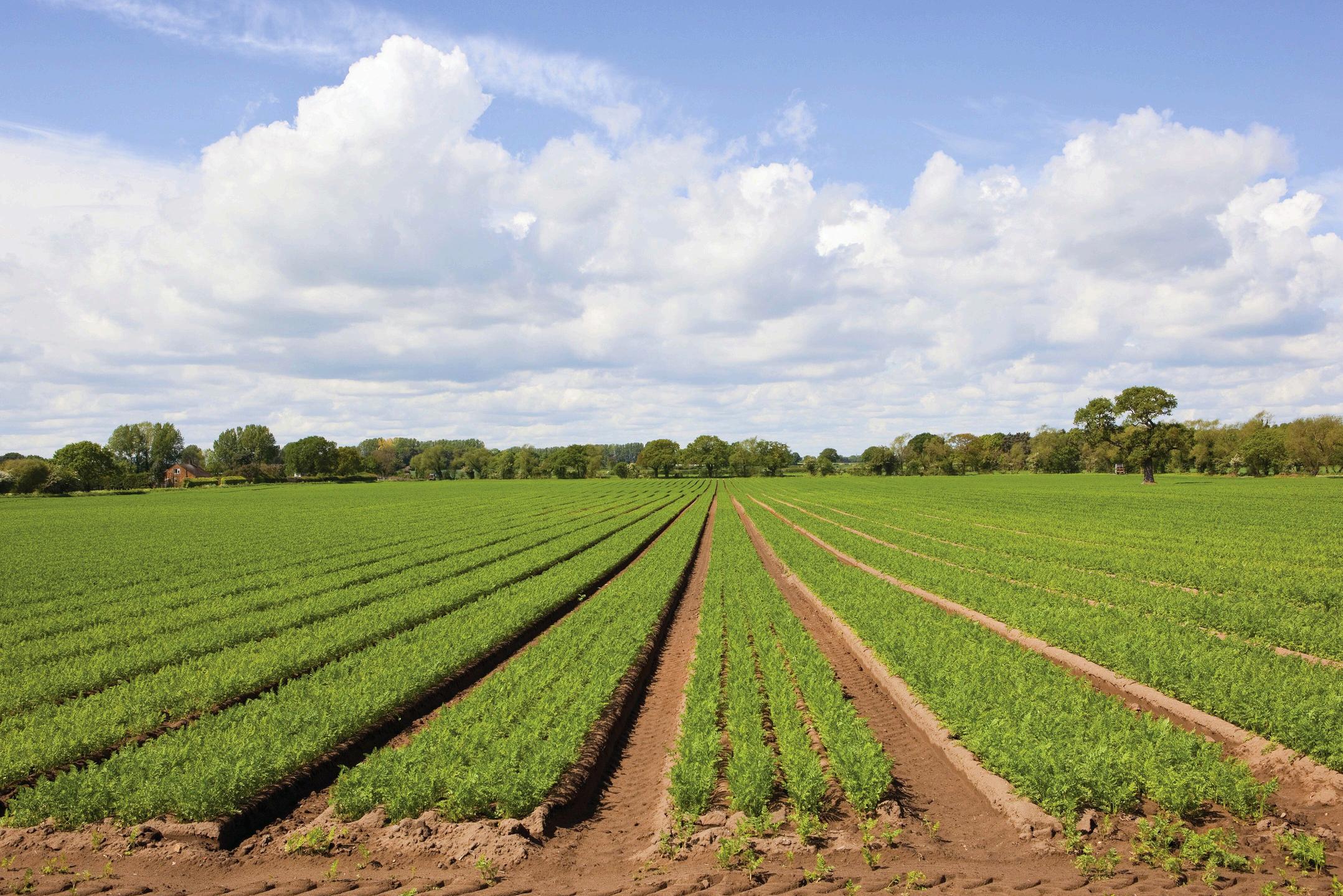
The newly revamped Irrigation Australia Journal stands as the premier publication for professionals across both agricultural and urban irrigation sectors Distributed digitally, it reaches over 8,000 members, including industry managers and users, retail and wholesale professionals, consultants, designers, manufacturers, rural water service providers and more!
Engage with a dedicated readership deeply embedded in the irrigation industry. We offer a variety of advertising packages tailored to your goals, including multi-edition discounts With two editions still to come in 2025, now is the perfect time to position your brand at the forefront of Australia’s irrigation sector!

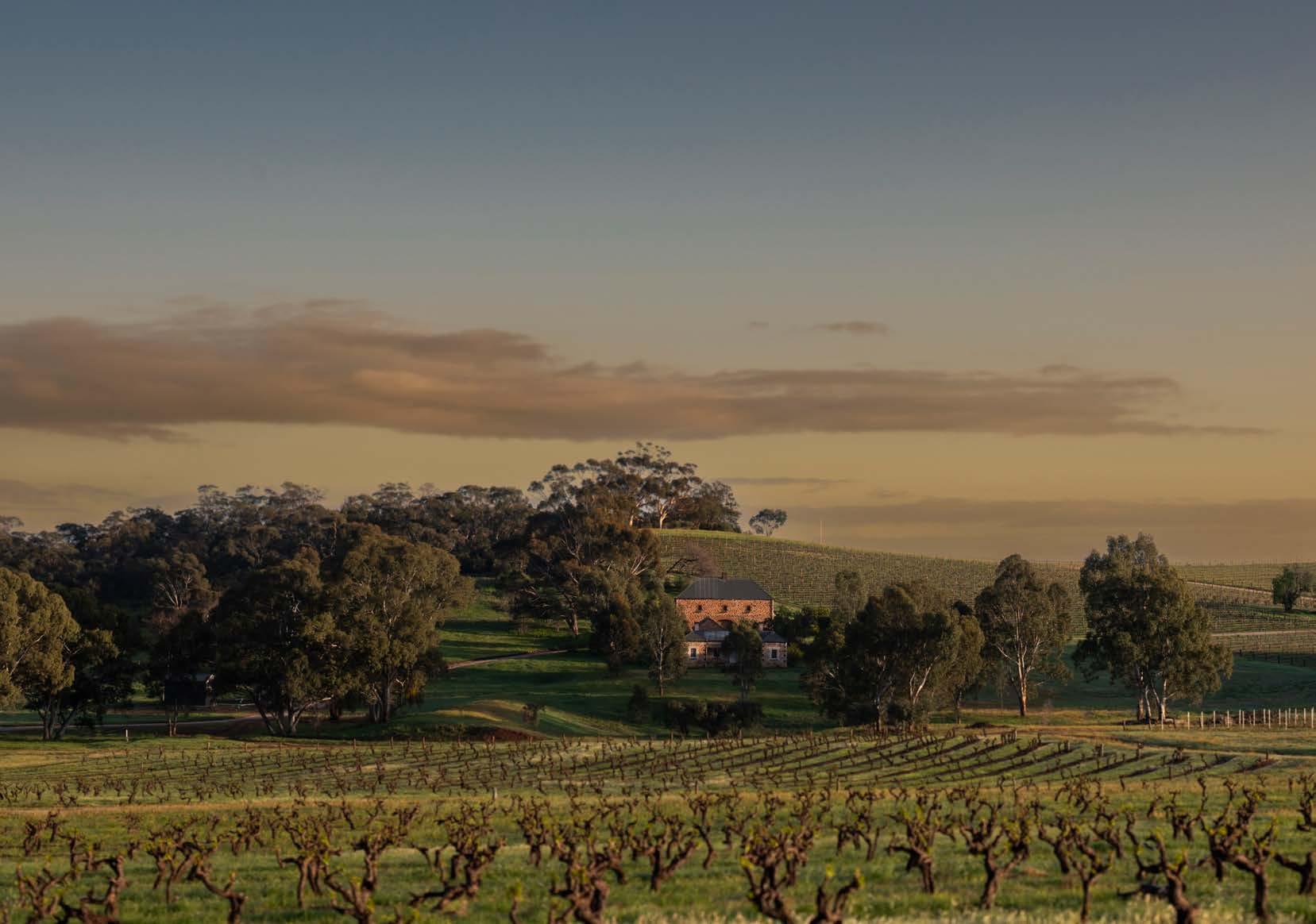
Background
Torbreck Vintners, a renowned producer of premium wines in South Australia’s Barossa Valley, is home to some of the world’s oldest Shiraz, Grenache, and Mourvèdre vineyards. With wines ranging from $30 to $850 per bottle, quality is paramount. However, managing vineyards in an environment with just 520 mm (21 inches) of annual rainfall presents unique challenges, particularly as climate variability intensifies.
“The SWAN system allowed us to monitor how the vines were performing and predicted when we were going to need to irrigate. So this allowed us to use the data that we were collecting and make really good management decisions around irrigation.”
Nigel Blieschke, Chief Viticulturist, Torbreck Vintners
Nigel Blieschke, Chief Viticulturist at Torbreck, has spent nearly a decade refining irrigation strategies to combat water stress, improve vine health, and elevate wine quality.
When Blieschke joined Torbreck in 2015, several vineyards were struggling with premature defoliation due to inconsistent irrigation management.
“If we lose canopy to water stress, that is definitely a failure,” he explains. “We had a number of vineyards that were defoliating prematurely before harvest.”
Traditional irrigation methods often relied on intuition and reactive decision-making, which could either result in overwatering – compromising grape quality – or under-watering, leading to vine stress. The challenge was to develop an irrigation approach that balanced vine health with the high standards required for Torbreck’s premium wines.
Data-driven decision making
To refine irrigation practices, Torbreck partnered with SWAN Systems to take a
more analytical approach. By integrating soil moisture data, crop coefficients, and predictive modelling, Blieschke and his team were able to track vine performance with greater precision.
“The block that we were struggling with was making a $30 bottle and often wasn't quite good enough for that. Our aim was not to potentially use more water but was to try and improve the wine quality,” Blieschke says.
With improved irrigation scheduling, Torbreck was able to maintain better canopy cover, mitigate heat stress, and create the conditions necessary for higher-quality fruit.
Success in viticulture takes time. While early improvements in canopy health were encouraging, the true test was in the wines themselves.
“It's a slow process. You grow the grapes and make the wine, but we don't generally release it until 12 months after. So it's a bit of a waiting game,” says Blieschke.

The impact became clear: one of the vineyards that had struggled to meet the $30 price point is now producing fruit for a $150 bottle of wine.
“We've achieved our goals, which was to again make our vineyards healthier and produce the quality grapes that we wanted.”
With climate change driving more unpredictable weather patterns – including mini droughts and heat waves – having a responsive, data-driven irrigation strategy is more critical than ever.
“One of the difficulties of being a vineyard manager is actually being able to react quickly to these events and understanding how to manage them,” Blieschke explains.
For Torbreck, this approach is not just about improving individual vintages – it’s about ensuring long-term sustainability.
“SWAN allowed us to still maintain quality and also vineyard health… Because of its predictive ability, it worked very well for us in getting the quality outcome we required while maintaining vine health and yield.”

Deakin University is leading a research project investigating how virtual energy networks (VENs) could support more affordable and flexible access to renewable electricity for households and small businesses/farms that do not have solar panels.
The study is open to energy buyers located in the eastern states, including Victoria, Tasmania and South Australia, as part of the National Energy Market (NEM).
Using peer-to-peer digital trading, the study will explore how community energy exchange can improve value for customers and support grid efficiency. Participants will be connected through a platform that enables them to access renewable energy generated by others – such as neighbours or local businesses – at rates that may be cheaper than traditional retail plans.
Researchers are particularly seeking to recruit energy buyers (off-takers), as energy generators are already well subscribed. Eligible participants must:
• have a smart meter
• be on a plan with a participating energy provider.
Trials will run for approximately six months. Findings will be published in the first half of 2026. Registrations are open and will close once participation targets are met, expected by late July.
To register or find out more, visit deakin.edu.au or contact the project team at venproject@deakin.edu.au.
Funded by Energy Consumers Australia, the VEN research study is led by Deakin University in partnership with QuantumNRG, ReThink Sustainability and WinZero.
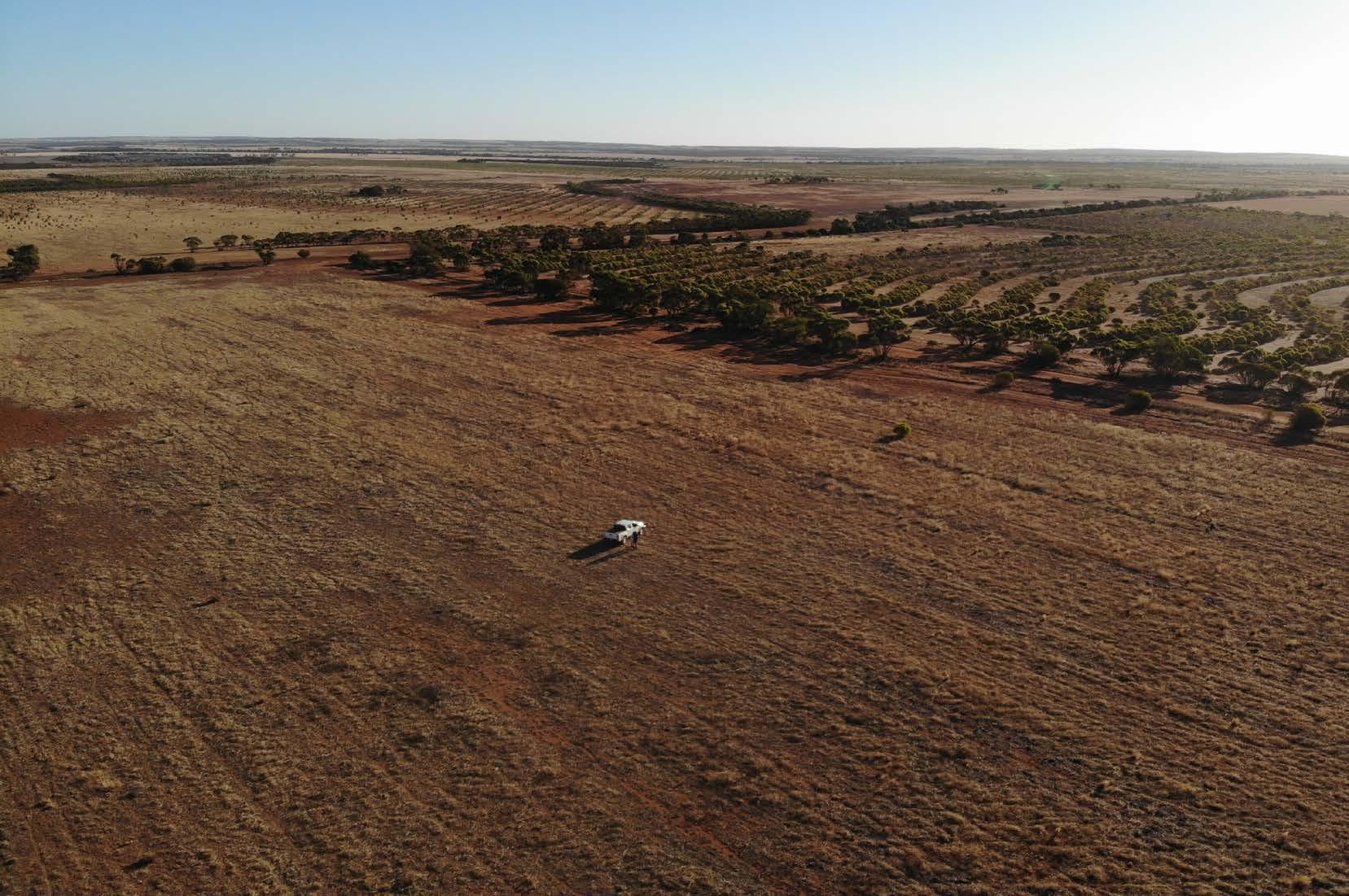
Soil carbon farming is a recognised method for improving soil health while earning Australian Carbon Credit Units (ACCUs).
The value of ACCUs could rise to AU$75 by 2035.
Efficient irrigation design enhances microbial activity, improving soil’s ability to store carbon and retain water.
Precision irrigation in low-rainfall climates can boost soil carbon levels, farm resilience, and access to ACCUs.
The Soil Carbon Method recognises new irrigation as an eligible practice, but regulatory restrictions limit excessive water use.
In 2023 a soil carbon project in Qld earned 94,666 credits.
Introduction
Soil carbon farming is gaining attention as a way to improve soil health while generating revenue through Australian Carbon Credit Units (ACCUs).
The Soil Carbon Method recognises irrigation as an eligible practice, with potential to enhance soil carbon storage and farm productivity. This article outlines the role of irrigation in soil carbon projects, key considerations for implementation, and regulatory needs under the ACCU Scheme.
In a recent report¹ by the Carbon Market Institute, RepuTex (a leading provider of price information and analysis), noted that the value of the ACCU traded market achieved a new high of $1.1 billion in 2024 – up 31 per cent on 2023. At the time of writing this article, Coremarkets.co reported the ACCU spot price as AU$35. Analysis by EY Net Zero Centre suggests that the value of ACCUs could rise to AU$75 by 2035.²
Interestingly, the Carbon Market Institute website says that in 2023, the largest award of ACCUs made to a carbon farming project – of any type – was a soil carbon project in Queensland. The project, on a grazier’s property, successfully sequestered 126,222 tonnes of greenhouse gas across 5,275 hectares of land, earning 94,666 ACCUs³.
Irrigation design and management can directly influence both a farm’s crop yield and the soil’s carbon storage capacity. Irrigation methods vary depending on land, soil, ecological factors, crop selection, and what stock you have. When low natural rainfall limits crop productivity, irrigation becomes an essential tool in soil carbon improvement.
Basically, when irrigation is designed and managed efficiently, soil becomes more conducive to microbial life, increasing microbial activity – resulting in greater carbon storage and water holding capacity.
In low-rainfall climates particularly, adding precision irrigation can be the key to increasing soil carbon – resulting in carbon credits in the bank, better crop performance and overall farm resilience.
Soil carbon storage and irrigation –what the research says
Importantly, research has shown that soil organic carbon stocks tend to increase in shallow soil layers, while the effects of irrigation on deep soil carbon storage are still being researched.
What does the ACCU Scheme say about the Soil Carbon Method?
According to the ACCU Scheme’s Soil Carbon Method, undertaking new irrigation is considered an eligible practice for your farm (you can see the full list of eligible practices here). It involves applying new or additional irrigation to a property by improving the efficiency of on-farm infrastructure or management practices within the project area.
It is important to note that there are some restrictions around the application of irrigation. For example, the amount of annual or five-year irrigation over a carbon estimation area (CEA) – or the project area – cannot increase by more than 20% of the
amount used during the five-year baseline period. So, you cannot simply purchase an additional water licence and start ramping up your water use to increase carbon.
Steps to take and irrigation techniques to consider for soil carbon projects
Connecting with the Carbon Farming Foundation (CFF) could be a valuable first step in assessing whether a soil carbon project is suitable for your land. You can book a free introductory call with CFF to receive guidance on feasibility, project setup, and access to relevant experts and resources.
If you have made an informed decision to proceed with a soil carbon project, your next step might be to implement precision irrigation technologies to ensure that only the necessary amount of water is used, minimising waste and improving efficiency.
By engaging Certified Irrigation Designers, farms can optimise irrigation systems to align with management plans and comply with Soil Carbon Method eligibility requirements.
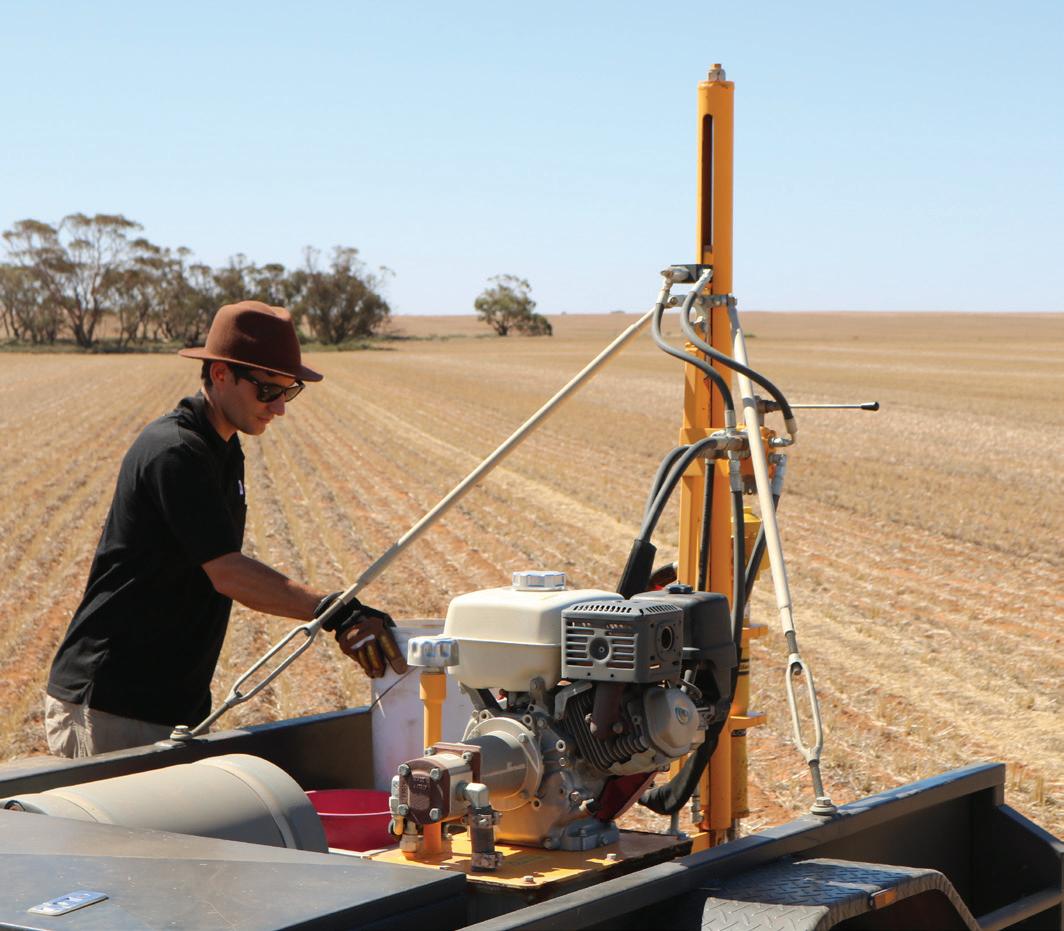
Other activities to enhance the hydrology of the landscape
Landscape activities
Techniques such as leaky weirs or chain-ofpond streams, contour banks, and erosion control techniques can improve landscape hydrology by slowing water movement and increasing infiltration rates.
Strategic planting of deep-rooted trees and shrubs can slow water movement underground, improve water access during dry periods and assist in salinity control.
With increasing pressure to reduce carbon emissions – driven by extreme climate events and economic imperatives – soil carbon projects are becoming a relevant consideration for landowners and irrigators. Understanding their potential benefits, including revenue opportunities through carbon credits, can support decision making.
Further information and resources about soil carbon farming can be found on the education hub of the Carbon Farming Foundation website, including the guides below:
• Soil Carbon 101
• Soil Carbon Guidebook
If you are seeking a Certified Irrigation Designer (CID), you can view Irrigation Australia’s directory of CIDs here. Once you are on the page, click the button that says, ‘Certification Type’ and select Certified Irrigation Designer from the drop-down menu.
If you are a consultant who would like to be assessed as a CID, visit this page on the Irrigation Australia website.
All photos supplied by Carbon Farming Foundation.
Sources
1 Report charts progress on Australia’s Net Zero Challenge - Carbon Market Institute (Website)
2 Australia’s carbon market is changing gears. Are you ready? | EY - Australia (Website)
3 Bonnie Doon Soil Carbon Project, – Carbon Market Institute (Website)
Understanding the Role of Irrigation in Soil Carbon Projects - Carbon Farming Foundation (Website).
ARTICLE PROVIDED BY ARUP
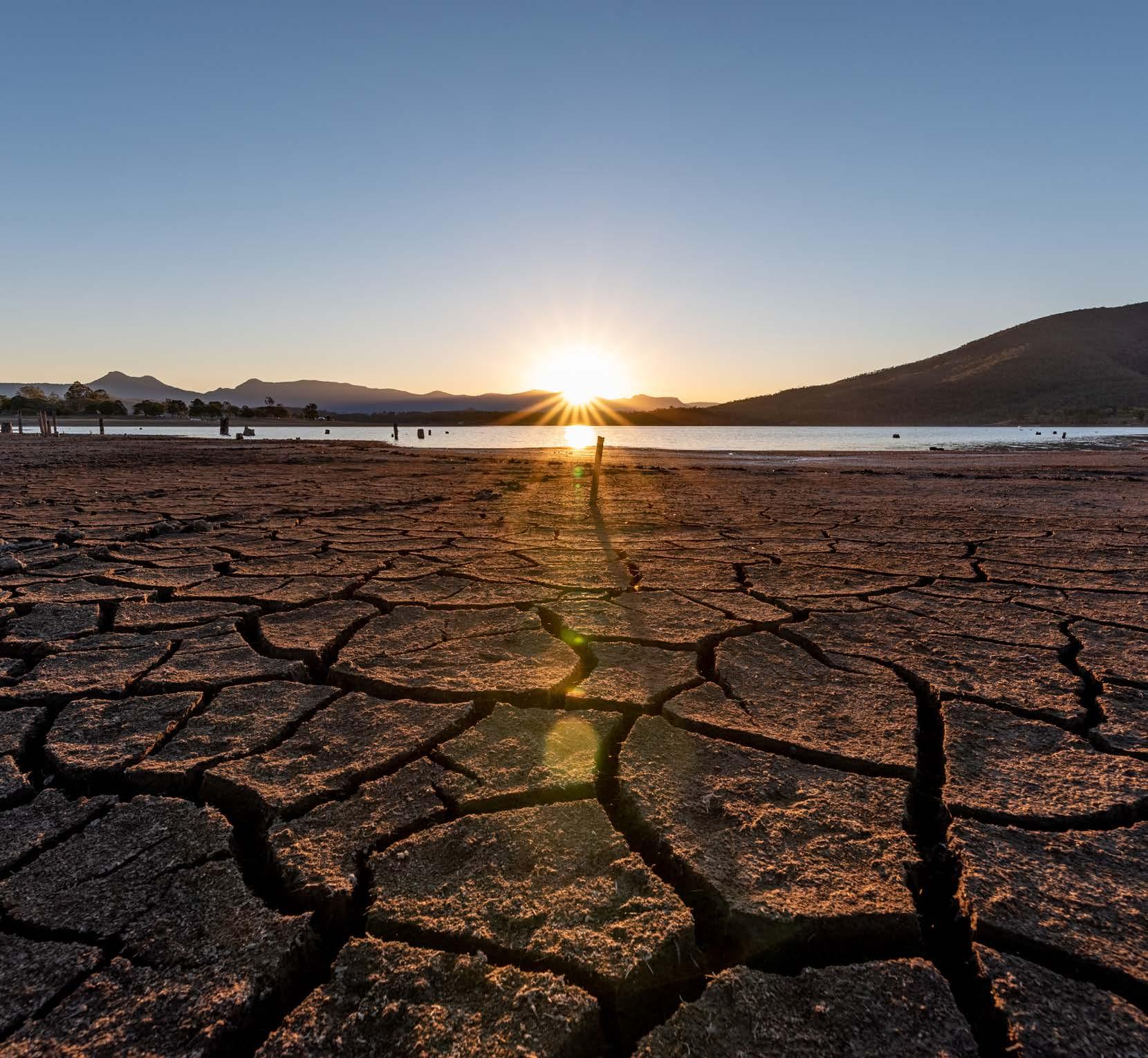
Water at a crossroads
Water is essential to life, underpinning human well-being, ecosystems, and economies. It influences climate patterns and sustains biodiversity. Yet human activities − land use changes, pollution, and unsustainable consumption − are placing unprecedented pressure on global water systems. Climate change and biodiversity loss are manifesting through water crises, from extreme droughts to catastrophic floods, making water central to both the challenges we face and the solutions we must implement.
Recognising this urgency, international conversations on climate and biodiversity increasingly place water at the forefront. The UN’s first Water Conference in nearly
five decades highlighted the need for water to be at the centre of global policymaking. Yet, progress on Sustainable Development Goal 6 − clean water and sanitation − is falling short. The Global Commission on the Economics of Water warns that decades of mismanagement have pushed global water cycles out of balance, calling for a radical shift in how water is governed, managed, and valued.
Organisations worldwide are already rethinking their relationship with water, exploring solutions that emphasise sustainability, resilience, and collaboration. This article identifies nine essential characteristics that future-facing organisations must adopt to help secure a better water future.
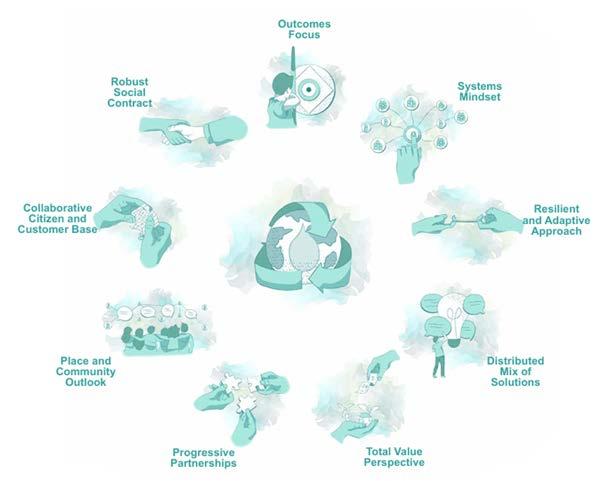
Outcomes-focused approach
Historically, water management has prioritised organisational outputs − specific projects or infrastructure developments − rather than broader societal and environmental outcomes. Future-facing organisations must instead align their goals with shared outcomes, such as restoring river health or improving water equity, and work collaboratively to achieve them.
Why it matters. A narrow focus on isolated outputs leads to inefficiencies, duplication of efforts, and missed opportunities for systemic improvements. By shifting towards an outcomes-based approach, organisations can drive meaningful, long-term change and ensure resources are allocated effectively. For example, an organisation aiming for "healthy rivers" must not only improve its own operations but also engage with stakeholders − farmers, industries, and regulators − whose actions impact water quality.
2. Adopting a systems mindset
Water issues are interconnected with broader environmental, social, and economic systems. Future-facing organisations must embrace systems thinking, recognising interdependencies and working across sectors to drive holistic solutions.
Why It matters. Water governance remains highly fragmented, often treating individual issues – like water supply, pollution, or flood control – in isolation. A systems perspective ensures solutions consider upstream and downstream impacts, enabling better
water resource management. For example, integrating urban drainage planning with natural floodplain restoration can prevent downstream flooding while enhancing biodiversity.
3. Building resilience and adaptability
In a world of increasing climate volatility, organisations must embrace adaptive planning to ensure resilience against unpredictable water-related challenges.
Why It matters. Traditional water infrastructure was designed for stability, assuming past conditions would persist. However, extreme weather events, changing precipitation patterns, and rising sea levels demand flexible strategies. Organisations should implement scenario planning, continuously monitoring and adjusting their approaches to remain effective in an uncertain future.
4. A distributed mix of solutions
Relying solely on large-scale, engineered solutions is no longer viable. Future-facing organisations must integrate traditional ‘grey’ infrastructure with catchment-based and nature-based solutions, alongside behavioural changes in water use.
Why It matters. Expanding the range of water management solutions ensures resilience, cost-effectiveness, and environmental benefits. For instance, wetlands can naturally treat wastewater while providing biodiversity benefits, and green infrastructure in cities can mitigate flooding while improving air quality and urban cooling.
5. A total value perspective
Decision-making must account for the full range of social, environmental, and economic impacts rather than relying solely on conventional cost-benefit analyses.
Why It matters. Water-related investments often prioritise financial returns, neglecting wider societal and ecological benefits. Future-facing organisations should adopt multi-capital frameworks that incorporate natural, social, and human capital into decision-making. This ensures resources are allocated to solutions that deliver longterm value, such as restoring wetlands for water purification instead of investing in costly treatment plants.
6. Progressive partnerships
Water challenges require collaboration between governments, businesses, communities, and individuals. Futurefacing organisations must actively build partnerships to co-design, deliver, and fund innovative solutions.
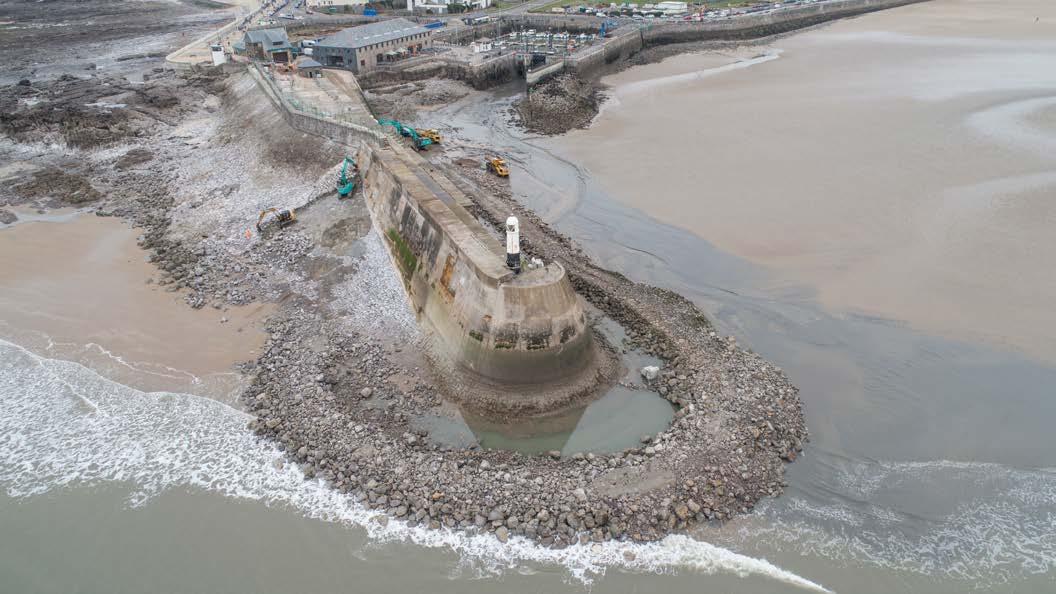

Why It matters. Water management has traditionally been siloed, with public utilities, private industries, and communities operating independently. However, achieving sustainable outcomes demands cooperation. Effective partnerships can unlock new funding models, such as public-private initiatives or market-based mechanisms for pollution reduction, while leveraging community knowledge and participation.
7. A place and community outlook
Solutions must be tailored to the unique characteristics and priorities of local communities, integrating Indigenous and community-driven water management perspectives.
Why It matters. Water challenges vary greatly by location, requiring localised approaches. Engaging communities ensures solutions are socially equitable, culturally appropriate, and more likely to succeed. For example, Indigenous water governance practices – rooted in deep ecological knowledge – can offer valuable insights into sustainable water stewardship.
8. Collaborative citizens and customers
Water users must transition from passive
recipients of services to active participants in water management, contributing to conservation efforts and responsible water use.
Why It matters. Individual actions – such as reducing water waste, preventing pollution, and supporting community-driven conservation – aggregate into significant impacts. Organisations should implement behavioural change initiatives, leveraging technology, incentives, and education to encourage responsible water use. Citizen science initiatives, where individuals contribute data collection, also play a growing role in monitoring and protecting water resources.
9. A robust social contract
For people to support and engage with water management initiatives, there must be trust and accountability between water institutions and the communities they serve.
Why It matters. Public distrust in government agencies, utilities, and private water providers undermines cooperation. Strengthening transparency, accountability, and stakeholder engagement is essential to securing public buy-in for necessary behavioural and policy changes. Social contracts help create shared responsibility,
ensuring all stakeholders play their part in water stewardship.
The path forward
These nine characteristics offer a roadmap for organisations seeking to transition towards sustainable, resilient water management. However, transforming the water sector requires more than just strategic intent – it demands action.
Organisations must assess their current maturity against these characteristics, identifying strengths, gaps, and opportunities for improvement. This might involve shifts in governance, investment strategies, or technology adoption. Crucially, it requires a cultural shift towards collaboration, long-term thinking, and an unwavering commitment to valuing water as a shared resource.
The question is no longer whether change is necessary, but how quickly organisations can adapt to ensure a future where water systems are resilient, sustainable, and equitable for all.
Source. This article is an edited excerpt from Arup’s publication, A new future for water, which you can download from the Arup website
WHAT’S GOING ON IN THE REGIONS BY REBECCA NEW, IRRIGATION AUSTRALIA’S NATIONAL MEMBERSHIP MANAGER.

Congratulations to Lauren Dealy from BD Water, John Baker from Rockingham Mobile Mowing, and Brett Waters, who have each won a gift card for completing our survey this quarter.
Thank you to everyone who shared their insights. Your feedback is invaluable and continues to reflect the ongoing challenges many in our industry face – particularly around limited time and resources.
The responses revealed strong support for Irrigation Australia’s efforts to provide more flexible training delivery options, while also highlighting the varying levels of engagement with events and networking opportunities in different regions. Interestingly, the survey also flagged technical issues with our phone system –now resolved! Thank you. We know that widespread information overload is making communication harder, with growing fatigue around oncepopular formats like webinars. We are innovating to suit your preferences.
As always, your feedback matters. Email info@irrigation.org.au to get in touch!
Excitement is building for the 2025 Waterwise Irrigation Expo – Western Australia’s leading irrigation industry event – taking place on Wednesday, 13 August at the Novotel Vines Resort in Perth.
A massive effort has gone into organising this year’s Expo, and it’s shaping up to be an
One booth left!
Interested in exhibiting? Don’t miss your final chance to showcase your brand alongside industry leaders and engage directly with professionals from across WA. Find out more here
Program highlights


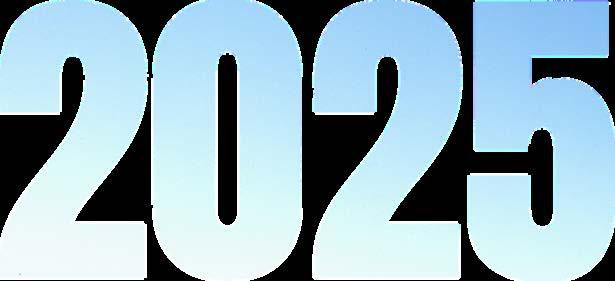

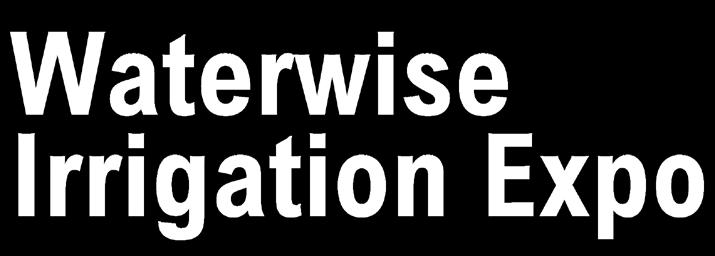
Advocacy
Micro-credential funding: Irrigation Australia’s funding application for Irrigation Efficiency and Practical Skills training was successful! This course equips participants with essential foundational skills to confidently begin fieldwork or engage with customers under supervision.
Education department linkages: Following the success of a collaborative careers presentation to Queensland schools (more below), Irrigation Australia is investigating similar opportunities with other education departments.
Rodney Industries: The first Queensland event of 2025 was held on Friday, 23 May at Rodney Industries. One of Australia’s leading manufacturers and suppliers to the irrigation, mining, and civil sectors –Rodney Industries provided attendees with a guided tour showcasing their commitment to innovation and quality craftsmanship. The event also featured valuable networking opportunities, complimentary refreshments, and presentations from Rodney Industries and Irrigation Australia.
Irrigation Efficiency and Practical Skills course: With a focus on water, pump systems, and energy efficiency, the training includes practical maintenance techniques to help reduce waste, improve productivity, and lower operational costs. Delivered online over two half-day sessions by our Senior Trainer & Assessor, the course also offers participants the chance to discuss pathways for future career development. The first delivery happened on 20/21 May, with some spectacular feedback from participants. For more information, click here
Careers in irrigation webinar: On 13 June, Dave Cameron and Natalie Morris from Superior Irrigation (and a committee member) delivered a webinar to representatives from Queensland schools, promoting careers in the irrigation industry.
Irrigation Australia’s upgraded website now features a streamlined, userfriendly business directory – designed to help customers and industry professionals connect with you quickly and easily.
4 Send your business logo and a company bio to info@irrigation.org.au
4 A completed JotForm for privacy compliance – Click here to access the form
Important: Without these details, we won’t be able to include your business in the directory. Don’t miss this opportunity – submit your information today! Please note: This listing is available exclusively to company members and is not included in individual memberships. Certified Professionals can list in the Certification Directory by completing the form here

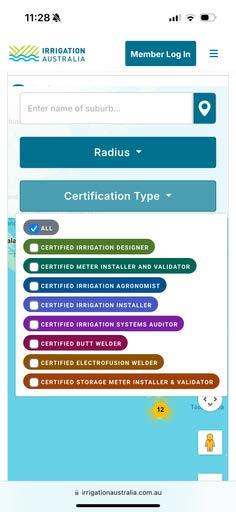
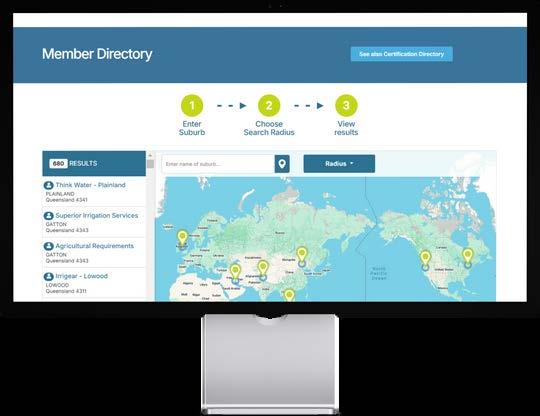
Survey – Irrigation technician trade apprenticeship: Irrigation Australia is supporting the Food, Fibre and Timber Industries Training Council proposal to establish a trade apprenticeship pathway for irrigation technicians – an initiative designed to address critical skills shortages across Western Australia. Elevating the Certificate III in Irrigation Technology from a traineeship to a trade apprenticeship could raise industry standards, create more secure regional career pathways, and support a more sustainable future. Whether you're in the field, employ technicians, or simply care about responsible water use, your input counts. Respond to the survey here, before it closes Friday, 25 July 2025.
Department of Training and Workforce Development: Engagement continues to explore a new Launch into Work program aimed at addressing skills shortages for WA members.
Water Corporation and the Department of Water and Environmental Regulation: Collaboration is underway to deliver exclusive training for Waterwise Councils in
the new financial year, following the success of the inaugural course held in May 2025.
Water Corporation: Discussions have commenced regarding the 2025/26 Waterwise Irrigation Rebate Program. Further details will be shared in due course.
Waterwise Programs on Ammonite: Programs have now transitioned to the new learning management system, Ammonite.
“Definitely a lot more user-friendly, and I found it easier to jump in and out at my own pace.” Course participant.
University of Western Australia (UWA), Western Irrigation, and Aquamonix: The first WA event for 2025 was held at UWA on Thursday, 29 May, attracting over 40 attendees. Guests enjoyed networking over coffee and breakfast while listening to presentations from UWA, Western Irrigation, and Aquamonix. The session focused on an integrated system, combining treated effluent and groundwater to irrigate an 18-hectare site – managed by upgraded controllers for efficient water source management.
Advocacy
Irrigation Code of Practice: National-level discussions are in progress with the aim of advancing toward the establishment of an Australian Standard for the industry.
Events
August Field Day: Preliminary discussions are underway to visit suitable orchard and irrigation sites.
Greening Communities: Conversations are taking place to develop and coordinate the upcoming event, ensuring alignment with shared goals and community engagement.
Annual Irrigation Professionals Breakfast: Planning is progressing for the event in November 2025, bringing together industry
Advocacy
Skill shortage solutions initiative: An expression of interest has been submitted to the South Australian Government proposing a number of employment places supported by the delivery of SA-specific short training courses. If successful it will be a great collaborative opportunity for the region.
Events
SA Committee and SAGE Automation: Watch out for details of an industry event July 2025!
Advocacy
WaterNSW and DCCEEW: Interactions are ongoing regarding metering issues.
NSW Fair Trading and ministerial engagement: Correspondence has been initiated regarding major changes to licensing requirements in New South Wales and poor industry consultation. These changes include the addition of plumbing units to training requirements and revised criteria for assessing the competency of licence holders. While the department has agreed in principle to a broader meeting with key stakeholders, discussions continue to achieve a balanced and practical outcome.
For more information, contact Rebecca New, Membership Manager, at rebecca.new@irrigation.org.au
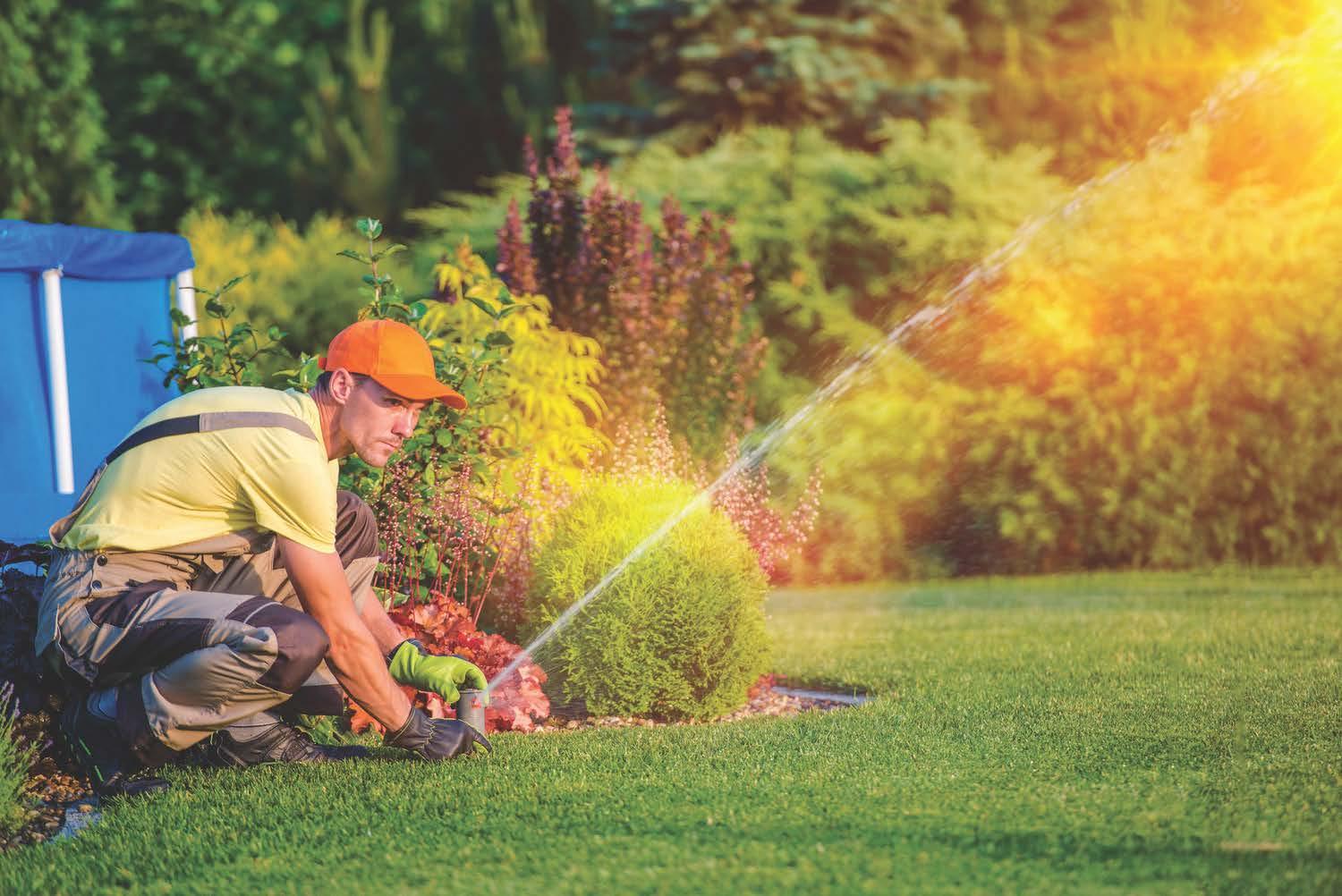
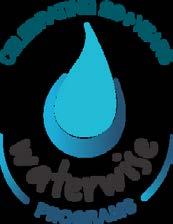
We post endorsed member spotlights, tips and tricks and any upcoming events weekly on Facebook and LinkedIn We encourage you to like, follow and share our posts throughout your network!

The International Commission on Irrigation and Drainage (ICID) is a leading scientific, technical, and professional not-for-profit organisation dedicated to irrigation, drainage, and flood management, promoting and advancing sustainable agricultural water management. It is headquartered in New Delhi, India. Irrigation Australia contributes to ICID objectives through the Irrigation Australia Committee on Irrigation and Drainage (IACID).
IRRIGATION AUSTRALIA'S COMMITTEE ON IRRIGATION AND DRAINAGE (IACID)
Momir Vranes (Chair)
Dave Cameron P: +61 7 3517 4001, E: dave.cameron@irrigation.org.au
Naomi Carragher P: +61 7 3517 4002, E: naomi.carragher@irrigation.org.au
Peter Hayes
Eddie Parr
Carl Walters
Richard McLoughlin
Karlene Maywald
Michael Scobie
Claire Miller
Andrew Ogden
Zara Lowien
A selection of international water management headlines covering research, challenges, and pivotal moments across industries and regions from the ICID e-bulletin – subscribe here
World sees second-hottest May on record as Europe faces rising drought concerns Rosie Frost, 11 June 2025
Parts of northwestern Europe saw their lowest precipitation and soil moisture levels since at least 1979. And persistent dry conditions have led to the lowest spring river flow across Europe since records began in 1992.
Source: Euro News (Website).
Nitrogen could help mitigate the impact of drought on soybeans
9 June 2025
One of the most outstanding findings of the study was that, “the drought during grain filling reduced the yield by 71%, with respect to the irrigation condition, regardless of the availability of nitrogen.
Source: Seed World (Website).
Water insecurity in Central Asia
7 February 2025 | Ariel Cohen, Wesley Alexander Hill, Wilder Alejandro Sánchez
the Tian Shan mountains, and the alarming shrinking of the Caspian Sea are reminders of how natural and man-made disasters have destructive consequences on Central Asia’s strained water resources.
Source: Atlantic Council (Website).
The role of digital and climate-smart agriculture in climate change mitigation: a systematic mapping protocol for South Asia and Sub-Saharan Africa Gardezi, M., Yu, X., Carcamo, P. and Kumari, S. 2024.
Climate-smart agriculture is a key global policy priority due to its potential to support climate change adaptation, mitigation, and food security through innovative practices and technologies. Recent advancements in digital agriculture technologies, such as precision agriculture and data analytics, are enabling its implementation.
Source: CGIAR Climate related Systematic Review Series. Montpellier, France: CGIAR
The report looks at how much nations must promise to cut off greenhouse gases, and deliver, in the next round of Nationally Determined Contributions (NDCs), due for submission in early 2025 ahead of COP30. Cuts of 42 per cent are needed by 2030 and 57 per cent by 2035 to get on track for 1.5°C.
Source: UN Environment Program (Website). For more information visit the ICID website.
The 2021 Central Asia drought, the loss of the Aral Sea, the evaporation of glaciers in
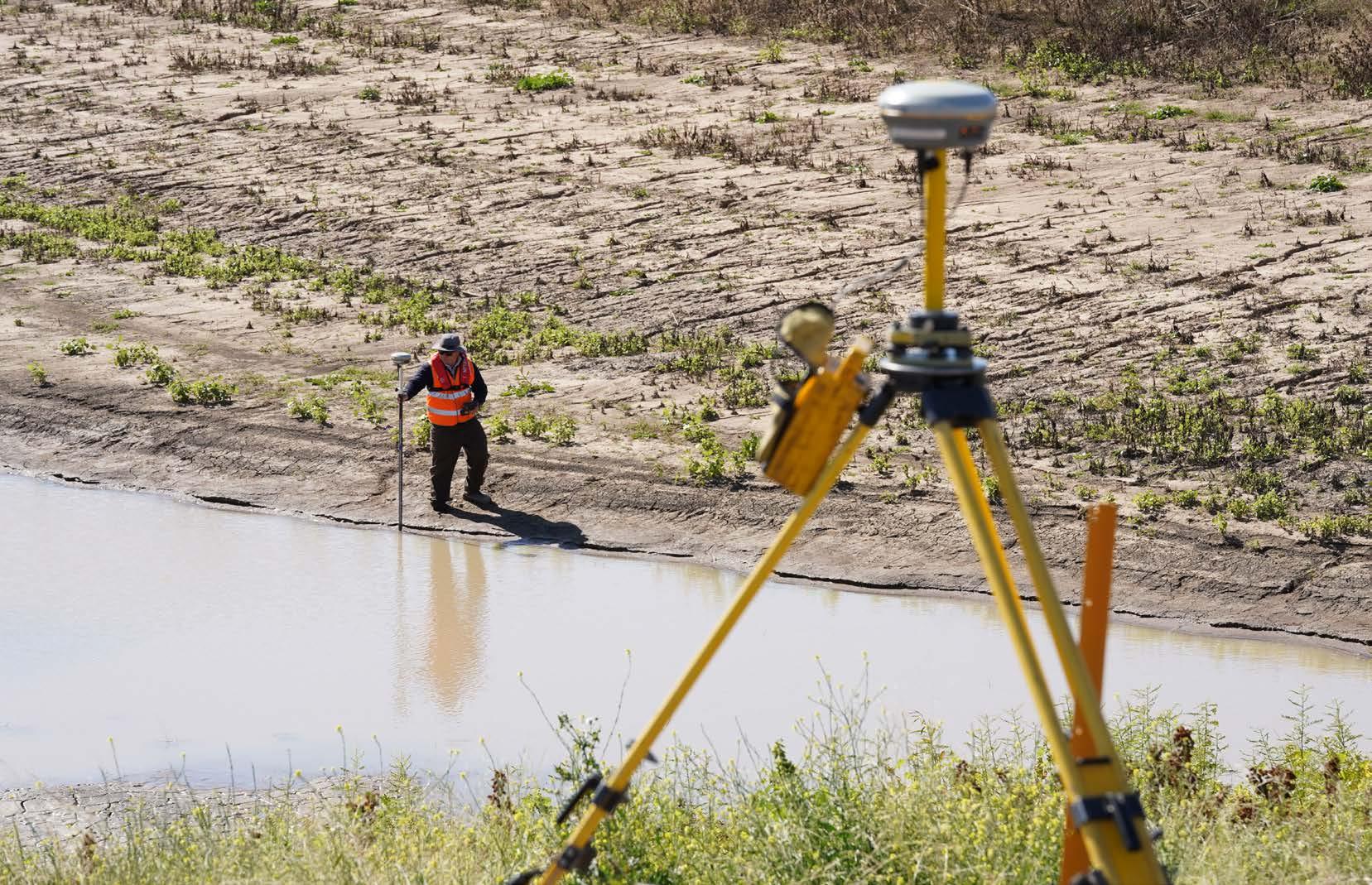
BY DAN CONNOR, DIRECTOR OF METERING AND LICENSING, NSW DEPARTMENT OF CLIMATE CHANGE, ENERGY, THE ENVIRONMENT AND WATER (NSW DCCEEW).
As it stands, only 63% of licensed water extraction across the state is accurately metered – the NSW Government is working to get this to 95% by the end of 2026.
NSW has launched into a new era of better water resource management thanks to landmark changes to fast-track non-urban metering and deliver big wins for water users, regional communities, and the environment.
In March this year, we streamlined the state’s water regulations, creating clearer and more practical ways for water users to be compliant with metering rules, and ensure licensed water extraction is fairly measured and managed.
The changes also mean it’s never been quicker, easier or cheaper for water users to comply with the rules – and now is the time to act.
So, what are we doing? It all boils down to the Big 4, a quartet of key initiatives we’re implementing now to significantly boost metering rates over the next 12 months.
We are:
• Working to ensure the 400 largest water licenses in the state are brought into compliance as a priority. This group represents only one per cent of licenses, but together accounts for more than 65 per cent of all licensed water extraction in NSW.
• Rolling out the Telemetry Uplift Program, which offers free telemetry equipment and installation for larger water users in inland NSW. To opt in, visit our website now.
Working directly with all water users to ensure metering obligations are placed only on works being used to take water and accurately reflecting this in licensing records.
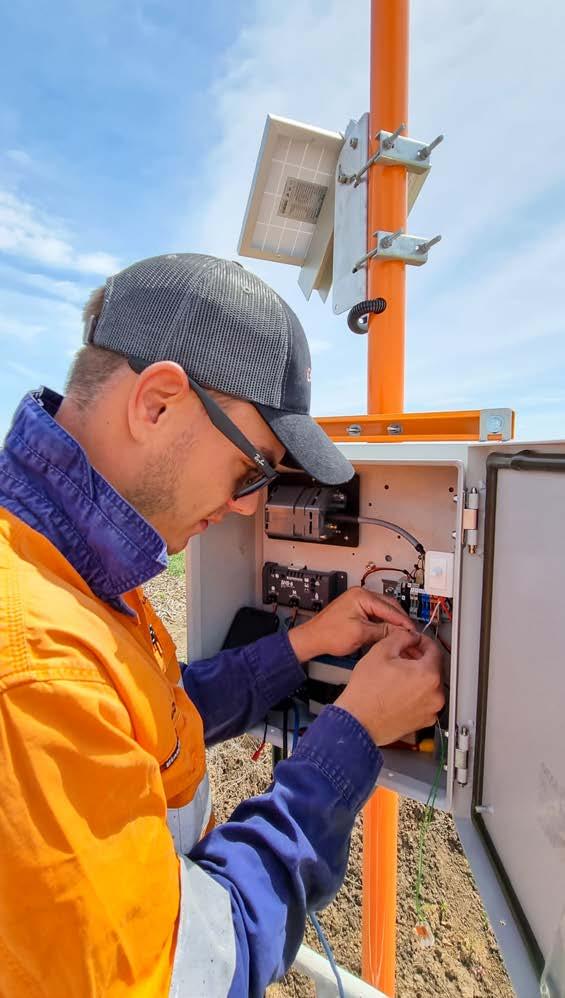
• Engaging with water users to ensure they understand what metering equipment they need to have installed and by when, and its benefits.
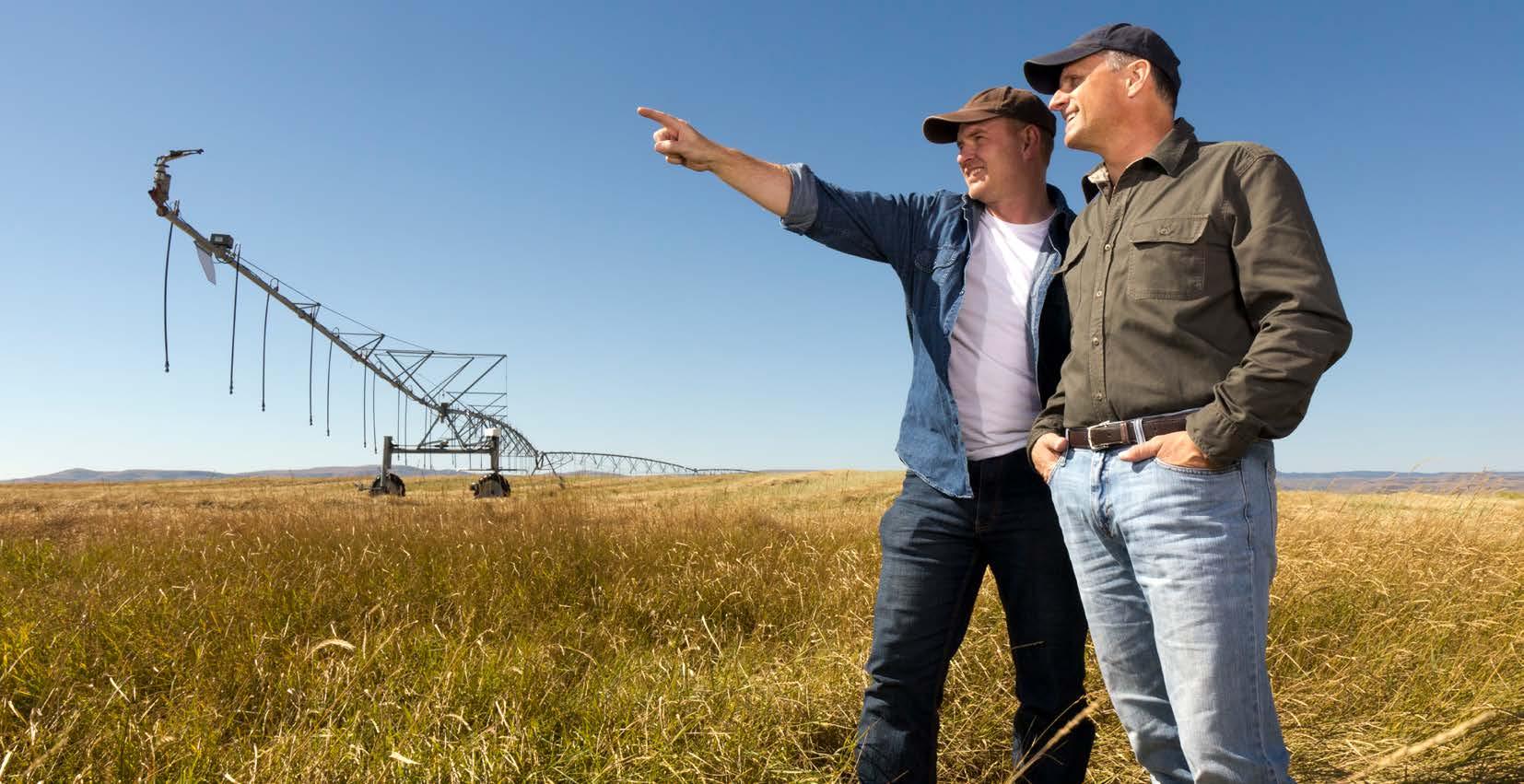
The streamlined regulations come after we held a comprehensive review of the state’s metering rollout in 2023 and 2024 and consulted extensively with hundreds of stakeholders including farmers and irrigators, residents, local governments, agencies, and community, Aboriginal and environmental groups.
They shared their valuable insights, feedback, experience, and expertise, which helped us pinpoint the roadblocks to metering installations and determine how we could make the most effective improvements going forward.
It was clear we needed to sharpen our focus on larger water users, while making it faster and cheaper for smaller users to comply. Because a relatively small number of larger water users make up most of NSW’s licensed extraction, it made the most sense to concentrate our efforts on this group.
But why is accurate metering so important? It's simple: responsible and effective water resource management absolutely hinges on it.
In NSW, water entitlements have been independently valued at $41 billion dollars. Water is an enormous economic driver for our state.
Accurate metering ensures water taken from our rivers, waterways and aquifers doesn’t exceed sustainable and legal limits and that the accuracy of water allocations can be improved.
Moreover, metering means that water users are able to maximise the benefits from their licenses and easily adhere to the rules and it boosts the ability of the regulator to take strong enforcement action when water users do the wrong thing.
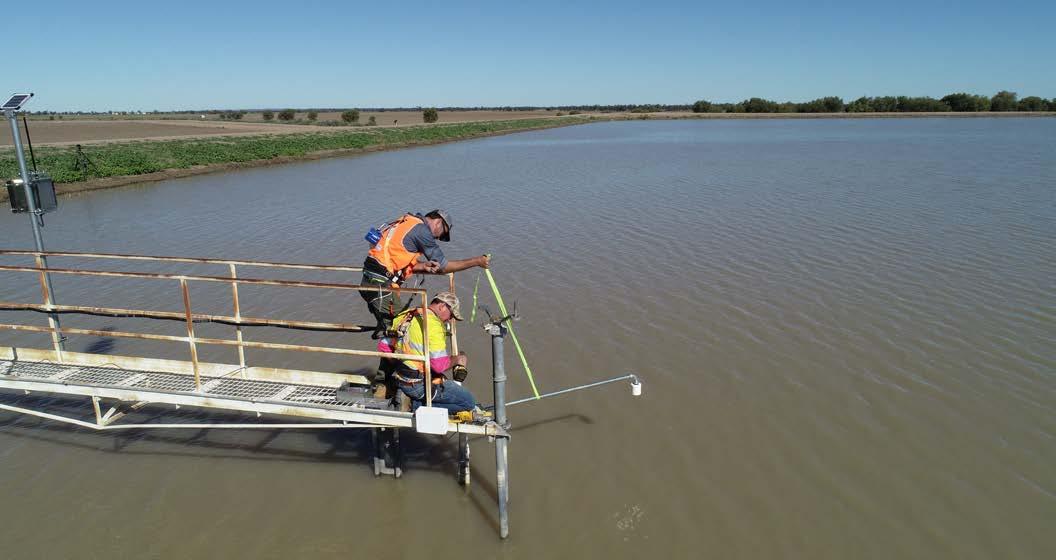
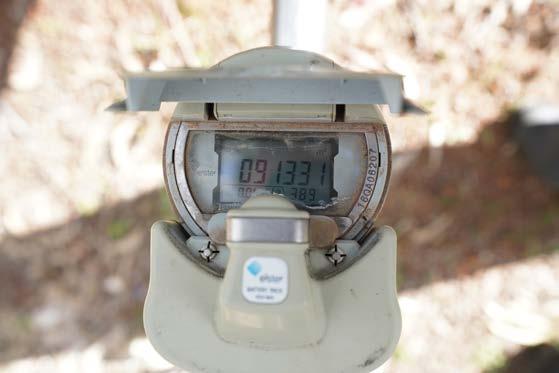
As it stands now, only about 63 per cent of licensed water extraction across the state is accurately metered. We know we can’t afford to waste time, especially as we face a drying and more variable climate where every drop of water counts.
By accurately measuring extraction, we support the integrity and effective operation of water markets, including social and economic values throughout regional communities.
Metering also protects environmental water and ensures it can be used to improve the health of our catchments. It adds to our knowledge of how river and groundwater systems operate, improving our ability to manage them.
As we implement these critical changes, the whole water sector is working together with water users to accelerate the metering rollout and improve the standard, scope, and transparency of NSW's metering network.
WaterNSW has launched its DQP Concierge Program, a service available to meter installers who may need support or guidance while in the field. Customers can book an online appointment with a WaterNSW metering expert or by calling 1300 662 077.
Meanwhile, the Natural Resources Access Regulator (NRAR) has engaged with most of the top 400 licence holders and will progress actions to ensure their compliance.

These collective efforts will help us meet our goal of 95 per cent of all licensed water extraction metered by the end of 2026 –about a decade sooner than previously thought possible.
That’s a huge step forward. As it stands now, only about 63 per cent of licensed water extraction across the state is accurately metered. We know we can’t
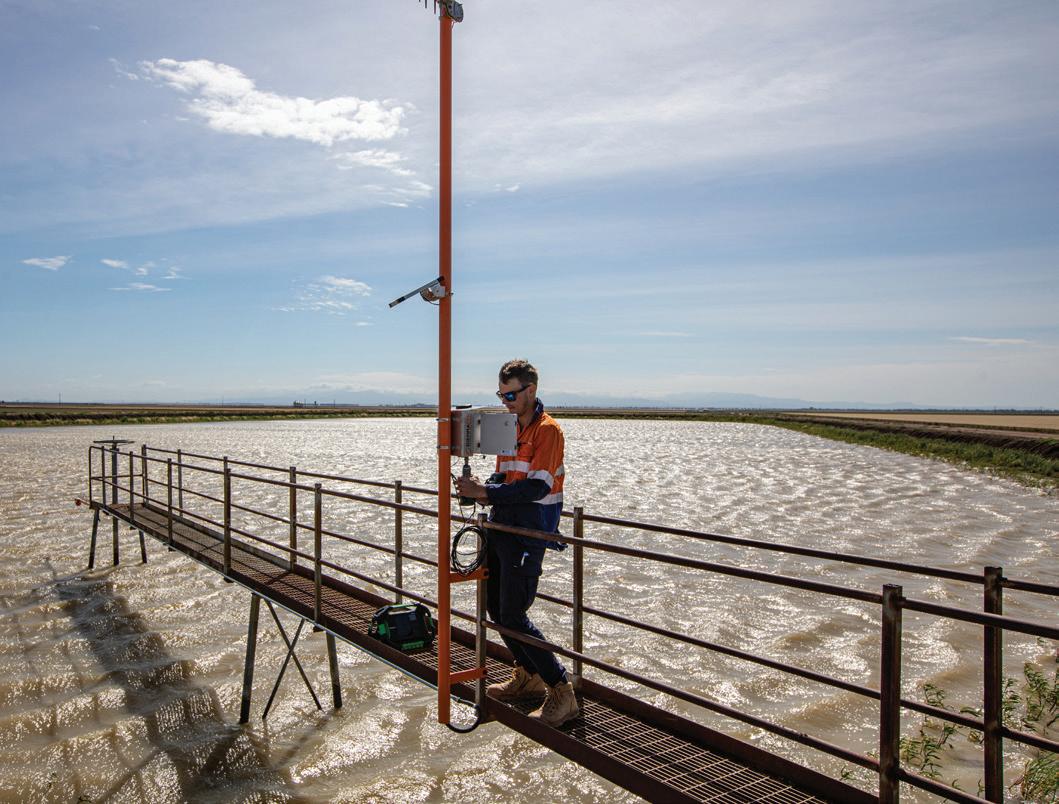
afford to waste time, especially as we face a drying and more variable climate where every drop of water counts.
As these changes take hold we’re committed to transparently reporting on our progress, with quarterly updates available on our website
Make no mistake; we’re charging full steam ahead to implement a faster, more efficient metering rollout for the benefit of the entire state. It's part of our firm commitment to fair and sustainable water resource management, ensuring NSW leads sustainable water use –now and into the future.
I urge all water users to understand their metering obligations and act now to get compliant – and thanks to these changes, it’s never been easier to get on board.
Free telemetry for large water users in the NSW Murray-Darling Basin – get compliant and save money. Visit: NSW Telemetry Uplift Program.
All photos supplied by NSW DCCEEW.
Disclaimer – This opinion piece has been written by a representative of the NSW Department of Climate Change, Energy, the Environment and Water. The views and opinions expressed are those of the author and do not necessarily reflect the official policy or position of any other individual or organisation.

The Minns and Albanese Labor Governments are doubling incentives for NSW small businesses and households to install solar batteries and connect them to Virtual Power Plants (VPPs), offering up to $5,000 in upfront benefits for a typical system.
Under the $2.3 billion Cheaper Home Batteries Program, the Australian Government will reduce the cost of a typical installed battery by around 30 per cent, effectively doubling existing incentives for NSW consumers.
On 1 July 2025, the Minns Government increased its VPP connection incentive to up to $1,500, stacking with the Commonwealth's battery incentive to provide extra financial support. For example, a 27 kWh battery (costing just over $30,000) will receive around $10,000 in Commonwealth support, plus $1,500 from NSW if connected to a VPP.
VPPs allow solar battery owners to sell excess energy when demand is high, contributing to grid stability and preventing price fluctuations.
With more than 11,400 battery installations in six months, the NSW scheme has seen widespread uptake. Consumers with eligible batteries installed since November can access the doubled VPP incentive from 1 July 2025.
The Clean Energy Regulator oversees battery installation under the Commonwealth scheme, continuing Australia’s solar expansion with over four million rooftop installations.
The NSW Government will engage with stakeholders to explore future opportunities under the Peak Demand Reduction Scheme.
Source. Media release, the Hon Chris Bowen MP, Minister for Climate Change and Energy and the Hon Penny Sharpe MLC, NSW Minister for Climate Change and Energy.
Irrigation Australia has made a submission to the Building Commission NSW to attempt to address some significant challenges raised by members due to the introduction of new processes and training requirements to become a Water Plumbing – Urban Irrigation licence holder in the state. The current changes see an additional 7 plumbing units of competency introduced over and above the existing Certificate III in Irrigation Technology, as well as some concerns around supervisory and signoff requirements. The department has been responsive to these concerns to date and invited the submission.
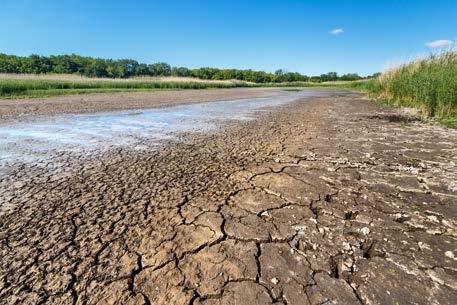
The Albanese Labor Government is providing an extra $2 million to the Rural Financial Counselling Service (RFCS) to expand access to free financial counselling for farmers and small businesses facing hardship. This funding will allow RFCS to hire more counsellors and reduce wait times in highdemand regions.
This investment follows a $36 million commitment to help farmers and producers prepare for and respond to drought, along with an $800,000 allocation in May for RFCS providers in South Australia and Victoria. Growing demand for financial counselling due to extreme weather underscores the need for expanded services.
Additionally, the Government will convene the 2025 National Drought Forum in Gawler, South Australia, in partnership with the National Farmers’ Federation. These measures build on the Government’s $1 billion in rural support and drought resilience funding to help farmers adapt to ongoing challenges.
Source. Media release, the Hon Julie Collins MP
The $120 million Wamuran Irrigation Scheme is now supplying Class A recycled water to horticultural farms near Brisbane. The project diverts treated effluent from the Caboolture River, reducing nutrient discharge into waterways while supporting drought resilience. Farmers growing pineapples, berries and turf are among the first to benefit from the scheme, which will provide over 2.6 gigalitres of recycled water annually.

The initiative is led by Unitywater, a statutory authority managing water supply and sewage treatment in the region. A 22-kilometre pipeline transports treated wastewater from the South Caboolture sewage treatment plant to a storage facility at Moodlu Quarry, before distribution to farms. The Scheme is expected to improve water security while reducing environmental impacts on Pumicestone Passage and Moreton Bay.
Source: Jennifer Nichols, 2 April 2025, ABC News. Accessed June 2025.
Australia’s Queensland Regional Committee hosted a tour of the Scheme in 2023.
The Victorian Government has ordered 50 gigalitres of desalinated water to address ongoing drought conditions, following recordlow rainfall this year. Melbourne’s water storages have declined by 12.6 per cent since last year, with Geelong’s reservoirs hitting a six-year low of 42.2 per cent.
The Victorian Desalination Plant can supply up to one-third of Melbourne’s annual water demand, helping to stabilise storage levels and reduce reliance on rainfall. The government’s decision follows expert advice from Melbourne Water and other water authorities, aiming to prevent severe water restrictions.
Source: Melbourne Water (Media Release)
The 2025–26 South Australian State Budget includes $159.1 million in new environmental measures, with several initiatives related to water security and river management:
• $71.1 million over three years for River Murray constraints measures which remove barriers to the delivery of environmental water to floodplains and wetlands.
• $20.9 million over three years for councils to reduce the reliance on River Murray water by investing in alternative water resources and infrastructure.
• $5 million over four years to continue the delivery of the Great Artesian Basin Water Security Program, extending capping of uncontrolled bores and piping
Irrigation Australia has lodged a Skills SA funding application under the Skills Shortage Solution program, which, if successful will see 20 new staff training as Certified Irrigation Installers in the region, along with a number of other employment support initiatives. The application has progressed through the EOI phase, and while there is no guarantee of funding, it means a departmental officer has been assigned to the project team to develop a full proposal.
The WA Residential Battery Scheme launches on 1 July 2025, offering rebates and loans to support home energy storage. The program provides up to $1,300 for Synergy customers and up to $3,800 for Horizon Power customers, with additional federal support bringing total rebates to $5,000–$7,500.
Households can also access interest-free loans of up to $10,000 to install batteries and upgrade solar equipment. Participants must connect their battery to a Virtual Power Plant (VPP), allowing them to sell excess energy back to the grid. The initiative aims to improve grid stability and support solar-powered irrigation systems.
Source: Western Australian Government (Website)
open bore drains to reduce water loss and recover groundwater pressure.
• $3.3 million over three years will be spent modernising the planning, forecasting and delivery processes for environmental water across the Southern Connected Basin.
$2.4 million over four years for drainage and infrastructure upgrades in South Australia’s South East to ensure the sustainability of the local community, emergency services, agribusiness and tourism industries.
• $1.7 million over three years for the ongoing position of Commissioner for the River Murray, who will continue to fight for essential outcomes to protect the river.
Source: Government of South Australia (Media Release)
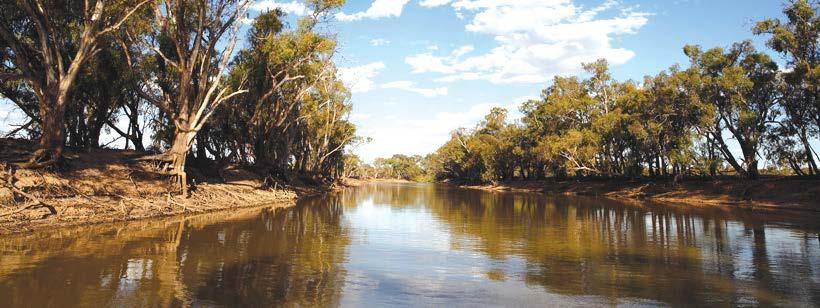
The Northern Territory Government will invest $25.1 million over four years to deliver clean, reliable water to remote communities across the Territory.
This funding will help unlock a further $100.4 million from the Australian Government’s National Water Grid Fund (NWGF), supporting critical upgrades to water systems in high-need areas.
Minister for Housing, Local Government and Community Development Steve Edgington said secure water is essential to economic growth and community wellbeing.
The re-development of the Numbulwar’s water supply system will be the next project submitted to the NWGF.
A new, higher-quality water source has already been located through bore drilling under a successful Phase 1 submission, with Phase 2 focused on supporting a proposed new subdivision.
Source: The Hon Steve Edgington, Minister for Housing, Local Government and Community Development, and The Hon Bill Yan, Minister for Logistics and Infrastructure (Media Release)

Recent research from the University of Melbourne indicates that artificial grass can lead to skin burns.
In summer 2024, the research compared artificial grass to both irrigated and unirrigated natural grass, measuring all surfaces against the 48 °C skin burn threshold established by the International Organization for Standardization (ISO 13732-1, 2006).
Tests were conducted in Melbourne in a controlled setting and four private gardens.
Artificial grass exceeded 48 °C several times, whereas both irrigated and unirrigated natural grass stayed below temperatures that could burn skin.
The highest measurement of 72 °C was an artificial grass surface, a temperature that can burn skin within 10 seconds of direct contact (ISO 13732-1, 2006).
Mulch, wooden decking, and artificial grass can cause skin burns by exceeding 48 °C.
Introduction
Artificial grass is being used in more and more parks and gardens in Australia. This is because people think plastic surfaces are easier to maintain, last longer, and may be better for the environment, since they do not need water or fertilisers. However, artificial grass becomes hotter than irrigated natural grass on very warm days. As the use of artificial grass increases, and the climate heats, concerns are growing around the risk artificial grass holds for skin burn and heat stress. The risks are greatest in private backyards where children, the elderly, and pets are exposed to high-risk surfaces.
To understand the ground surface temperatures and skin burn risk of artificial grass as compared to irrigated and
BY DR PAUL CHEUNG*, PROFESSOR STEPHEN LIVESLEY, SCHOOL OF AGRICULTURE, FOOD AND ECOSYSTEM SCIENCES, BURNLEY CAMPUS, FACULTY OF SCIENCE, UNIVERSITY OF MELBOURNE. *E-MAIL: CHEUNG.P@UNIMELB.EDU.AU
unirrigated natural grass, researchers at the University of Melbourne established a controlled field experiment at Burnley Campus and at four private backyards in northern Melbourne.
Nine plots in the controlled experiment (Figure 1) were fenced to mimic a 36 m2 backyard, with three plots for each surface type (artificial grass, irrigated and unirrigated grass). A climate station was installed at the centre of each plot to measure air temperature and other data. The plots were continuously measured using infra-red temperature sensors (SI111-SS, Apogee, accuracy: ±0.3 °C). Natural grass areas were mowed every two weeks and irrigated plots were watered daily at 1:00 pm, receiving 4mm of water from Hunter MP1000-90 Rotators positioned in each corner and a Hunter MP1000-360 Rotator at the centre.
The controlled field experiment ran for 51 days from January 28 to March 18, 2024. To assess the risk of skin burn, surface temperature was compared against the skin burn temperature threshold (48 °C), as defined by the International Organization for Standardization [1]. This standard states that at 48 °C, solid material can cause permanent skin burn to human adult skin, after ten minutes of contact.
Ground surface temperatures and skin burn risk
The artificial grass was hottest from 10:00 am to 4:59 pm, with an average temperature of 49.9 °C, compared to irrigated natural grass which averaged 29.9 °C and natural grass without irrigation, which averaged 31.7 °C (see Table 1).
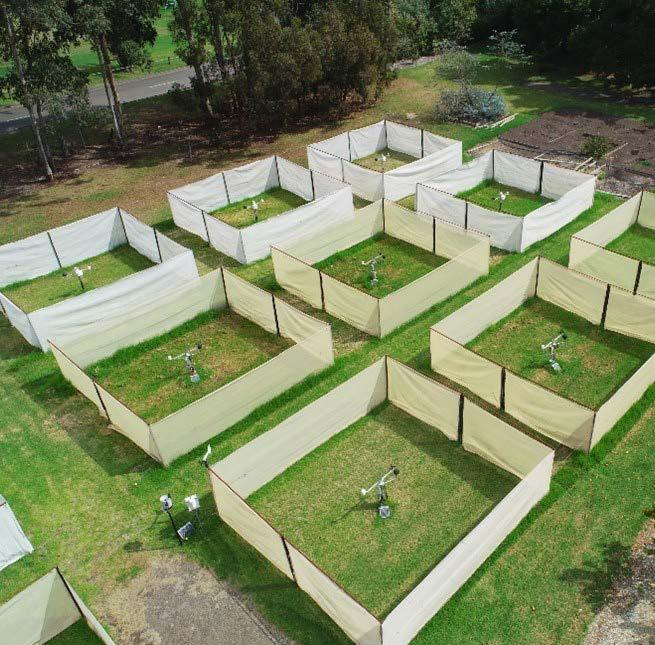

1 EXPERIMENTS
ON
The average and highest temperatures (from 10 am to 5 pm), measured in a single hour for artificial grass, unirrigated natural grass, and irrigated natural grass, across 51 days.
The highest temperature recorded for any surface type in a single hour was artificial grass. It peaked at 71.6 °C one hot sunny day when the air temperature reached 39.5 °C. The researchers say that just 10 seconds of skin contact at temperatures over 70 °C can cause permanent burns – a dangerous situation for humans and pets. By contrast, irrigated grass (maximum 38.8 °C) never reached 48 °C.
In the study, it was observed that the average surface temperature of artificial grass exceeded 48 °C for about four hours in the afternoon (Figure 2). The highest average temperature recorded for one hour was 56.4 °C at 3:15 pm local time, while irrigated natural grass was approximately 20 °C cooler at that time.
Figure 2 shows the average and range (shaded area) of surface temperatures for artificial grass and irrigated natural grass over 24 hours. The temperature of artificial grass in Melbourne was above 48 °C, the point where it can cause skin burns, for about four hours each day during the experiment. The surface temperature of irrigated natural grass never rose above the level that can cause adult skin burns.
Do we see the same results in real private backyards?
The researchers measured the ground temperatures in four private backyards of a new housing development off Donnybrook Road in northern Melbourne on two hot sunny days –February 4 (37.4°C) and February 11 (32.7°C), between 2:00 pm and 4:00 pm. They used the same equipment as for the controlled experiment.
Four types of ground surfaces were measured: 1) irrigated natural grass, 2) artifical grass, 3) mulch, and 4) wood (Figure 3).


Artificial grass, mulch, and wood all reached temperatures above the skin burn threshold of 48 °C. The highest temperature recorded for artificial grass in these experiments was 53.5 °C (a high skin burn risk), while the irrigated natural grass reached 41.6 °C.
Conclusion
This research shows that artificial grass in backyards can cause skin burns due to high temperatures that can persist for several hours on summer afternoons. Children are more vulnerable because their skin is at least 25 per cent thinner than adults', and they often play unsupervised in backyards deemed ‘safe.’ Pets are also at risk.
Artificial grass gets hotter than irrigated natural grass because it absorbs about 20 per cent of the sun’s energy, whereas natural grass absorbs only 10 per cent. This raises the temperature of artificial grass far more than natural grass under the same weather conditions. The trials also showed that irrigated grass was noticeably cooler than unirrigated grass, yet both surfaces remained within safe limits for adult skin burn.
The study did not investigate if irrigating artificial grass could reduce the risk of heat and skin burn, presenting opportunities for further research.
In summary, the research shows that artificial grass poses a real risk of skin burn to vulnerable adults, children and pets throughout summer. As Australia gets hotter, these risks will rise.
References
[1] ISO 13732-1:2006 - Ergonomics of the thermal environment — Methods for the assessment of human responses to contact with surfaces — Part 1: Hot surfaces
Detailed results and findings of this study were published in: Cheung, P. K., & Livesley, S. J. (2025). The microclimate, surface energy flux and human skin burn risks of artificial turf as compared to natural turf. Building and Environment, 112679. https://doi. org/10.1016/j.buildenv.2025.112679
Funded through Hort Innovation Frontiers GC2100: “Demonstrating the benefits of increasing available green infrastructure in residential homes”, with coinvestment from South East Water, Greater Western Water, Yarra Valley Water, Department of Energy, Environment and Climate Action (Victoria), Department of Planning, Housing and Infrastructure (New South Wales), The University of Melbourne, and contributions from the Australian Government. Hort Innovation is the grower-owned, not-for-profit research and development corporation for Australian horticulture.
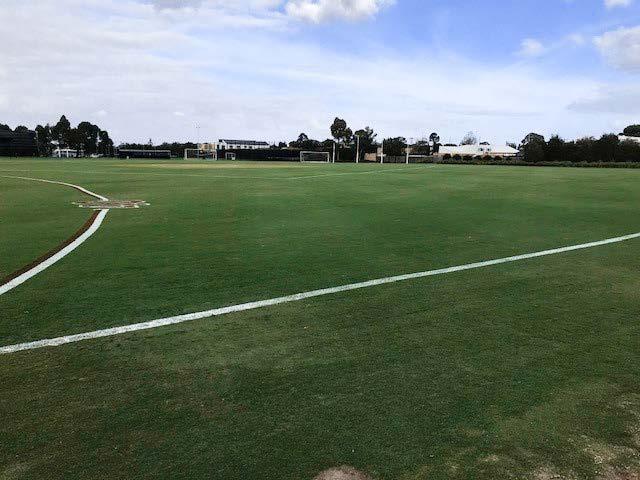
ARTICLE PROVIDED BY BROWN BROTHERS ENGINEERS AUSTRALIA.
A private school in Melbourne faced an outdated and inefficient irrigation system.
The system, linked directly to the school’s potable cold-water supply, did not have enough flow and pressure for effective irrigation, resulting in uneven coverage and long watering times. It was wasting water and not servicing the natural grass on their sports field properly. A modern pump system was necessary to improve performance and sustainability.
The project team created a smart, compact irrigation system that can be accessed remotely, operates quietly, and delivers enough water in a shorter watering time.
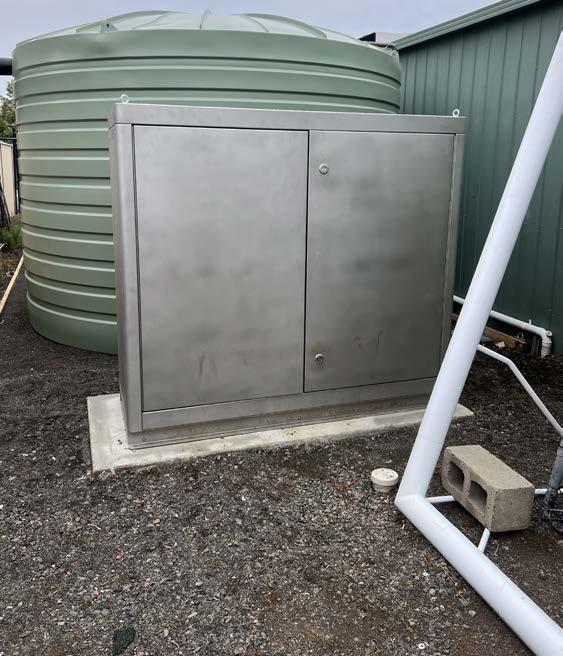
System design: Cadsult
Installation: Redline Irrigation
Water supply: Potable drinking water
• Challenge: The previous system lacked sufficient flow and pressure, leading to uneven irrigation and water wastage.
• Upgraded pump system: The new system delivers 7.5 litres per second at 650 kPa, using a Lowara 22SVX05HPS Hydro-Pac unit with Hydrovar X variable speed drive (VSD) for improved energy efficiency.
• Water management: Water is redirected to refill two above-ground tanks with backflow prevention, and a flooded suction system ensures consistent pump operation.
• Noise reduction and compact design: Sound-absorbing materials in the pump cabinet minimise disturbances, while the side-mounted Hydrovar X reduces overall system size by 24 per cent.
• Sprinkler system: 93 Hunter I-25 sports field rotors provide uniform coverage, allowing up to eight sprinklers to operate simultaneously without overloading supply.
• Smart remote access: The system integrates Hunter's Centralus Central Control software, enabling grounds staff to monitor and adjust irrigation settings remotely.
“We’ve seen a 100% improvement. There are no more dry patches or ‘donuts’ like we had with the previous irrigation system, and the turf is looking great. ”
A compact, intelligent solution
The new system provides 7.5 litres per second at a pressure of 650 kPa, which satisfies the needs of the area. Three-phase power was already available on-site for field lighting, so there were no supply issues. Water supply was redirected to automatically refill two above-ground tanks, with proper backflow prevention to keep the zones contained. The new pump station received water from a flooded suction system.
A Lowara 22SVX05-HPS Hydro-Pac unit was supplied by Brown Brothers Engineers Australia (BBEA). These units combine Lowara pumps with Hydrovar X variable speed drive (VSD) technology, delivering a compact, energy-efficient solution that comes pre-wired and ready to install.
‘The Hydro-Pac pump station makes it very easy for contractors to supply and install, with all parts mounted to a solid base plate ready for pipe connections’ said Damian Cullen, Principal Consultant from Cadsult.
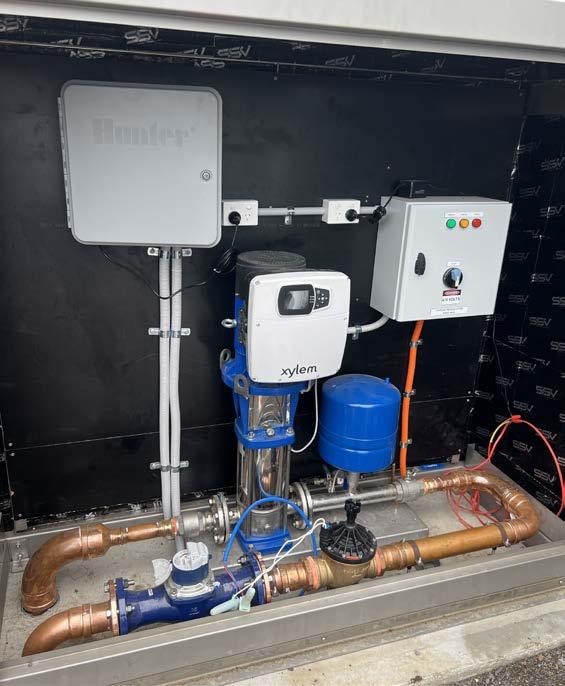
‘BBEA also provide CAD drawings of every Hydro-Pac build, simplifying the design and installation process.’
To protect the system’s electrical components, an INCA Control Surge Protection Panel was also installed.
Noise control was important in this project because the pump cabinet was close to residential homes. Fitted with soundabsorbing material, there have been no noise complaints since.
Additionally, the Hydrovar X’s pipe fill mode gradually fills pipes to minimise noise and prevent sudden pressure changes that could cause disruptions or damage. The device changes the pump's output to meet demand, saving energy while keeping the necessary pressure.
Another challenge was the cabinet’s internal space. The Hydrovar X’s new side-mounted design and user-facing screen reduced the overall size by 24 per cent compared to previous models. ‘This was a huge positive,’ said Damian. ‘Without the Hydrovar X, the pump would have needed an 11 kW motor instead of 7.5 kW, and 8-stages instead of 5-stages.’
The new irrigation system, includes 93 Hunter I-25 sports field rotors, positioned to cover the entire field evenly and efficiently.
It can run two areas simultaneously, controlling up to eight sprinklers at once. This means that watering can be completed more quickly, without overloading the water supply or pump.
The sprinklers are connected to underground pipes for watering, so the ground above remains undisturbed. A Hunter ACC2 decoder, with decoder units set up in the field controls each valve. A main valve and flow metre monitors how well the system is working. Benefitting from fewer cables, the decoder is easier to install and fix.
Integrating with Hunter's Centralus Central Control software, staff can access the system from their smartphones or computers. Grounds staff have full control thanks to real-time performance monitoring, alerts, and the ability to make remote adjustments.
The new system is now fully operational, with positive early feedback.
‘The difference is like chalk & cheese,’ said Damian. ‘Grounds staff can apply 8mm of water across the entire ground in just over six hours. Distribution uniformity is excellent, with consistent coverage across the field.’

‘Grounds staff can apply 8mm of water across the entire ground in just over six hours. Distribution uniformity is excellent, with consistent coverage across the field.’


A partnership between the City of Melbourne and the Victorian Government has turned 1 Treasury Place into a green roof showcase, highlighting the environmental and urban benefits of rooftop greening through collaborative research.
The Green Our Rooftop project boosts City of Melbourne and the Victorian Government’s strategic objectives through vibrant plantings of grasses, flowers, and native species. Together, these frameworks champion greater investment in green infrastructure to enhance the quality and sustainability of urban spaces.
Demonstration green roof at 1 Treasury Place
The $2.5 million project at heritage listed 1 Treasury Place in East Melbourne marks a major leap forward in integrating green roof technology into the city's built environment.
Officially launched in February 2025, the initiative leverages in-depth research, industry expertise and strategic planning for lasting environmental benefits.
The Green Our Rooftop project aims to:
• Demonstrate how to retrofit a high-quality, ecologically diverse and thriving green roof in an urban centre
• Provides education and guidance to support public and industry adoption of green roofing, particularly in privately owned urban buildings
• Establish research partnerships to study green roof performance and environmental impact
Provide cooling benefits, enhance biodiversity, and reduce stormwater runoff to tackle the challenges of urban living.
“Green rooftops have the potential to provide enormous environmental benefits to our city, while reducing energy costs for businesses.”
Councillor Davydd Griffiths, City of Melbourne
Collaboration with industry experts and researchers guarantees the evaluation of diverse planting mixes, green roof systems, installation methods, maintenance needs, and a cost analysis for each system.
This project will offer valuable local insights for developers, landlords, and construction professionals, empowering the design and delivery of successful, cost-effective green roof retrofits. Findings aim to bridge industry knowledge gaps and boost green roof adoption across Melbourne.
Essential design elements:
• Research shows that rooftop gardens can significantly extend the lifespan of uncompromised waterproof membranes.
• Engineered rooftop soil, designed for optimal planting.
• Existing rooftop drainage was seamlessly integrated into the design, eliminating the need for extra drainage.
• A tailored sprinkler irrigation system, featuring 150 mm high fixed risers, was designed to ensure water is effectively dispersed above the plants – an essential choice for seed plantings.
Clients: Department of Transport and Planning (landlord), City of Melbourne and the Department of Energy, Environment and Climate Action (co-funding partners).
Lead Project Manager: SEMZ
Lead Construction: Harris HMC
Irrigation specialist: G & M Connellan Consultants
Installation: Evergreen Infrastructure
Maintenance and data collection: Practical Ecology
Monitoring and Evaluation: Green Infrastructure Research Group at the University of Melbourne.
Main water supply before and after: Potable drinking water.
> Urban green roof retrofit – A demonstration project at heritage listed 1 Treasury Place, Melbourne, showcases the benefits of rooftop greening.
> Research-driven approach – Industry collaboration informs best practices for green roof adoption.
> Climate adaptability – Local data helps refine future rooftop greening strategies for Melbourne property owners.
> Smart irrigation system – Sprinkler irrigation, moisture sensors and integrated drainage support plant health.
This case study is drawn from the Green Our Rooftop Project, City of Melbourne.
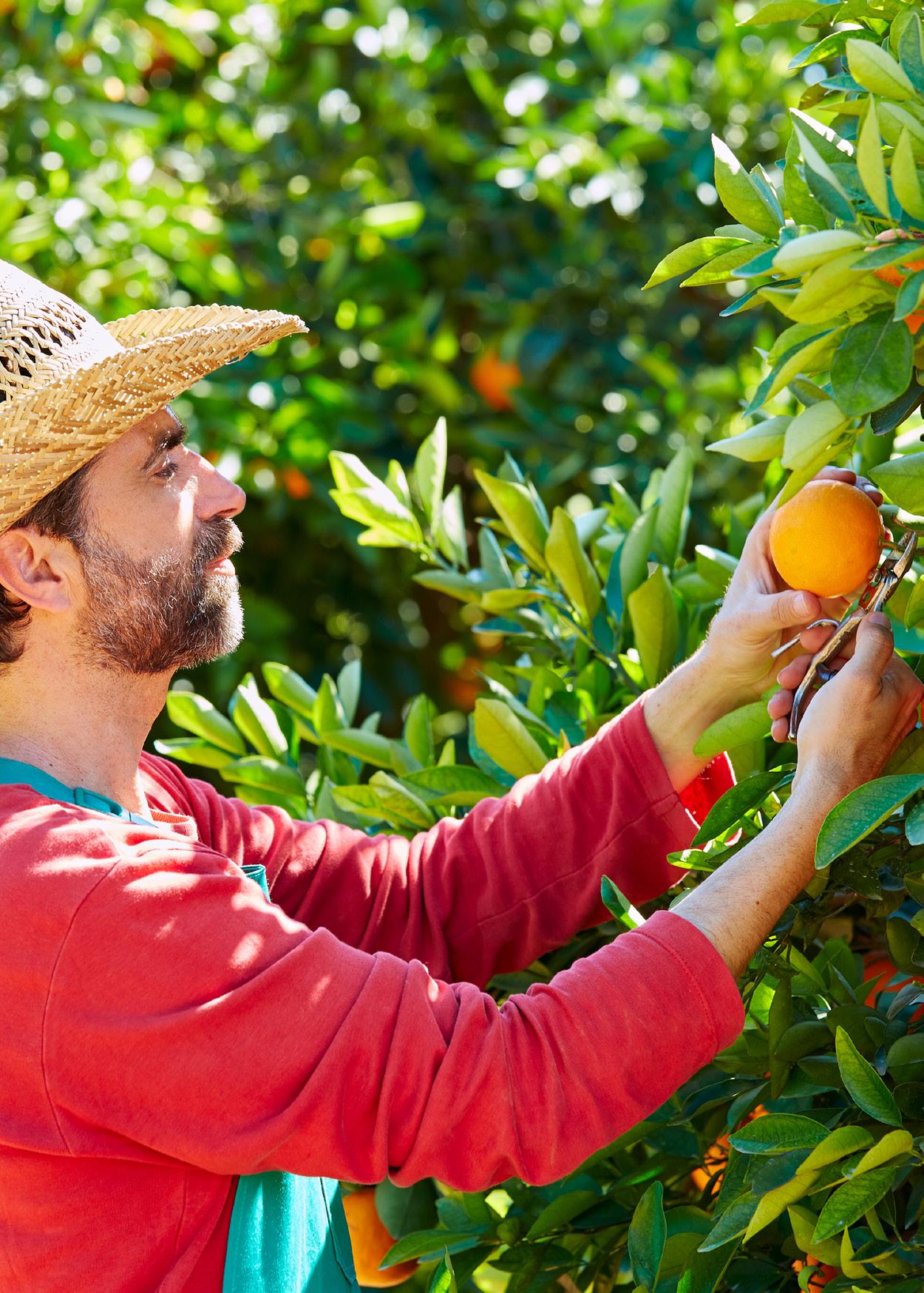

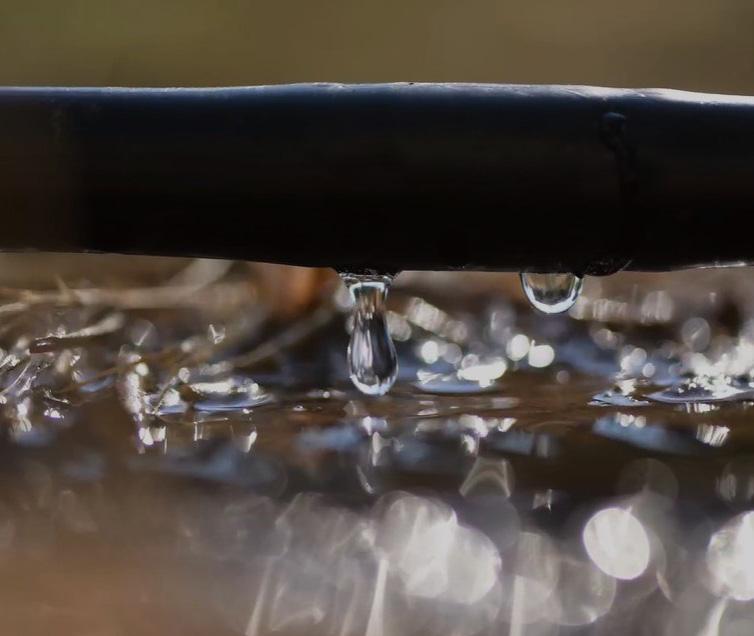
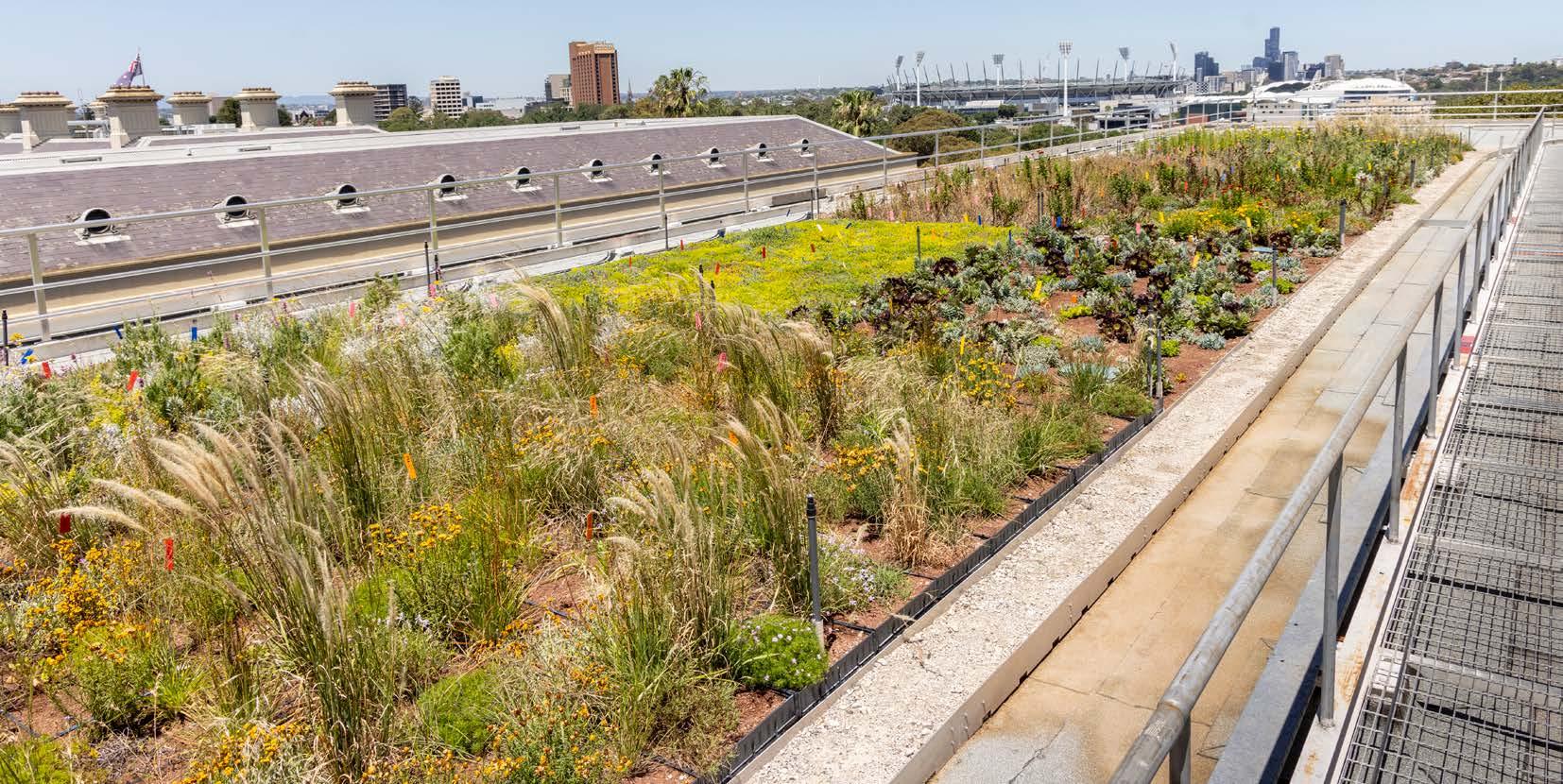
• The garden blends rainfall and potable water, featuring four ephemeral ponds that capture and temporarily hold water. Installing rainwater tanks or greywater and wastewater systems was unfeasible due to weight loading limits.
• The eastern garden bed has remotely managed plots with irrigation tailored to plant needs. The western bed is watered uniformly for larger tube stock and proven species.
• Flow sensors enable irrigation monitoring via the building management system, with manual checks ensuring proper function.
• Two roof-top weather stations send live data to Melbourne's open data platform.
• During heavy rainfall, the irrigation system can be disabled, as has occurred.
The rooftop garden features two distinct sections:
• The eastern garden bed showcases research plots that test diverse planting mixes, installation techniques, and green roof systems, including both layered and modular approaches.
The western garden bed highlights effective landscaping techniques, showcasing how research transforms into functional, attractive green infrastructure.
To guarantee resilience in tough rooftop conditions, the project team chose noninvasive, climate-compatible plants that deliver year-round beauty and ecosystem benefits. Off-limits to the public, the garden is overlooked by towering high-rises.
The University of Melbourne’s Green Infrastructure Research Group is assessing green roof build and maintenance costs, while evaluating long-term performance.
Research garden plots will be monitored for at least 21 months after planting to assess how the rooftop will perform over two summers. Findings will close industry knowledge gaps and promote the wider adoption of green roofs in urban areas.
Three First Nations groups teamed up on the Green Our Rooftop initiative, focussing on green roof maintenance, culturally significant plants, and knowledge sharing to deepen connections to Urban Country.
A diverse team of experts – project managers, landscape architects, green infrastructure specialists, horticulturists, waterproofing and irrigation consultants, engineers, and contractors – collaborated to deliver the project. View a full list of contributors on the Green Our Rooftop project webpage
a blueprint for sustainable urban landscapes
This initiative could tackle industry challenges and demonstrate the viability of retrofitting green roofs in dense urban landscapes, paving the way for widespread adoption throughout Melbourne and beyond. Ongoing monitoring and evaluation will sharpen best practices, making green roofs integral to sustainable urban planning.
“With massive greening and cooling potential, we hope the Green Our Rooftop project will lay the groundwork for retrofitting existing buildings and integrating green roofs into new developments following the success seen in cities like New York, Singapore and Munich.” Lord Mayor Nick Reece, City of Melbourne
Robust irrigation systems are crucial for the lasting success of rooftop gardens, especially in areas with inadequate natural rainfall. Smart irrigation solutions make rooftop greening a powerful ally in achieving environmental and economic benefits, advancing sustainability goals throughout the built environment.
Australia’s varied climates, tropical to arid, make locally relevant data essential for green infrastructure planning. Climatespecific solutions will ensure that urban landscapes are made resilient and sustainable.
Sources
City of Melbourne
Melbourne rooftop gets the green treatment (Media Release).
ARTICLE PROVIDED BY BROWN BROTHERS ENGINEERING
In the rolling green hills of Echunga, a small town in South Australia’s Adelaide Hills, time seems to move a little slower. For nearly 50 years, a single pump hummed quietly beneath the earth, pulling bore water to the surface to sustain a hobby farm. Installed in 1977, this Grundfos SP10 wasn’t just equipment: it powered the place through decades of hard work, running strong even as the farm split from one property into three.
Echunga has no mains water, a fact that makes reliable groundwater a lifeline for anyone living off the land here. Back when the SP10 was first dropped into the bore,
the farm sprawled across a single plot, its pastures dotted with grazing cattle and fields thirsty for irrigation. Over the decades, the land was carved into three smaller properties, but the pump kept going, faithfully serving each new owner without complaint. Most pumps call it quits after 20 or 25 years - half a lifetime compared to this one. The SP10? It ran for 47, a testament to engineering that defies the odds.
Craig Ritchie knows a thing or two about pumps. He’s been servicing them at Mt Barker Pumps since 1981, just a few years after this SP10 started its marathon.
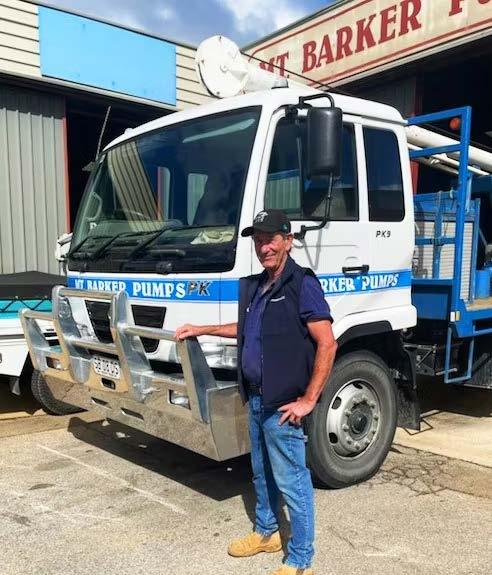
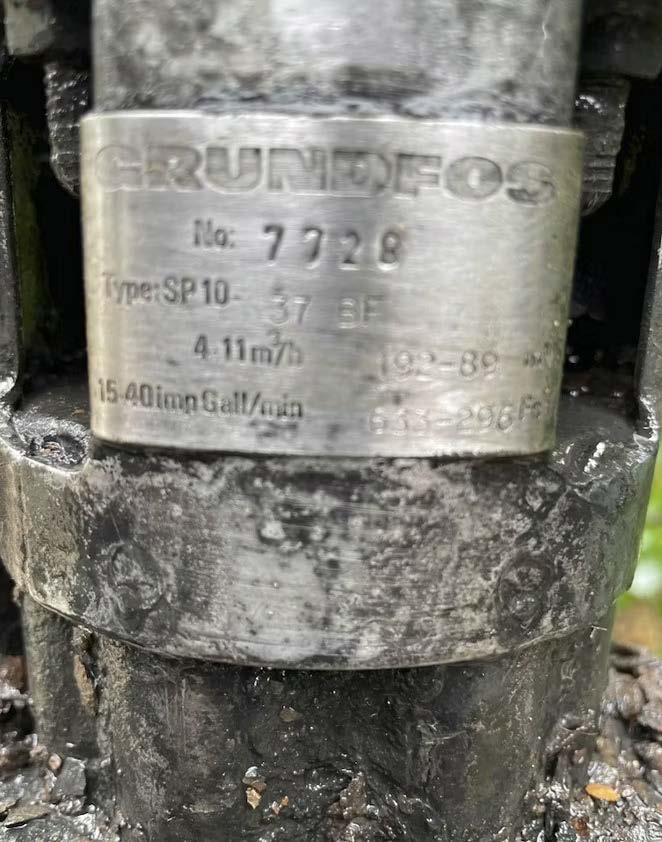
The original nameplate on the 1977 Grundfos SP10
“Around here, if it’s not broke, you don’t mess with it,” he says with a grin. “That pump was a beast – tough as nails and efficient as anything I’ve seen. It barely needed a nudge to keep going.” When it did need a tweak, Ritchie serviced it to keep it going rather than pulling it out. “Why replace something that works? Saves the customer a few bucks and keeps a good thing running.”
And run it did, with its original motor still spinning after nearly five decades. It wasn’t until 47 years later, that the farm swapped it out for a new Grundfos SP11, a choice driven less by the old pump giving up and more by the promise of better energy efficiency – a critical edge for farmers keeping an eye on rising power costs.
The SP10’s story isn’t just about a pump that wouldn’t die. It’s about what it meant to the people who depended on it. For almost half a century, it delivered water without fanfare, keeping the grass green, the herd fed, and the farm alive through dry spells and wet winters alike.
In a world where equipment often feels disposable, this pump was a throwback – a reminder that quality can endure.
As Ritchie hauled the old SP10 out of the ground, he couldn’t help but tip his hat to it. “You don’t see that every day,” he says. “A pump that runs for 50 years? That’s not just luck – that’s Grundfos.”
In agriculture, water is everything. So is ensuring that farm infrastructure is working to its full potential. Anything that can prevent in-field issues –especially those that could lead to under-watering – before they happen, is a game changer. That’s the reason for the BERMAD Irrigation Management Solution (IMS): better irrigation control, clearer insights, and peace of mind.
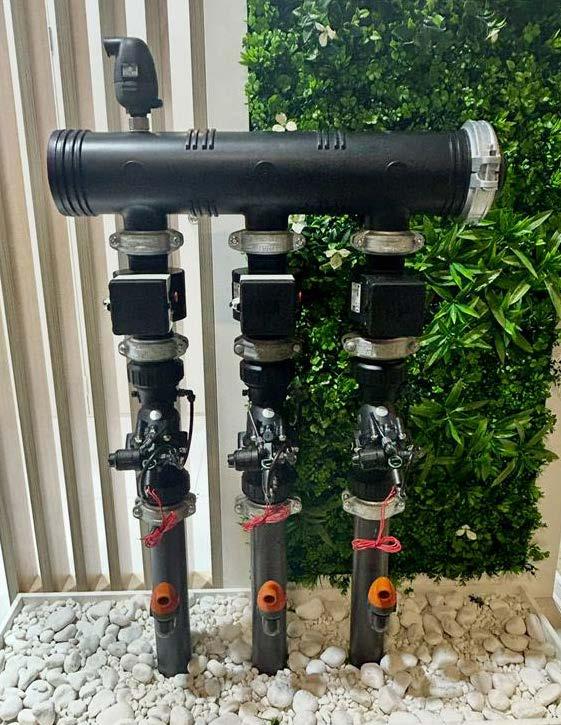
Purpose: BERMAD developed the IMS to help irrigators monitor water distribution, prevent issues early, and optimise farm infrastructure.
Key challenge: Farmers struggled to track water flow to individual blocks, leading to inefficiencies and potential crop damage.
Core innovation: A durable but lightweight flow meter that enables precise, real-time water flow measurement with easy installation and integration.
System advantages: Modular design allows tailored setups, helping irrigators detect and resolve issues before they escalate.
Field-tested reliability: Trials over nearly two full irrigation seasons confirmed accuracy, durability, and effective pressure control.
Pressure management: A pressure reducing valve ensures stable and reliable operation, reducing maintenance risks.
Scalability: The IMS integrates with a remote irrigation management controller.
The idea behind the BERMAD IMS came from a pressing need: irrigators struggled to monitor exactly how much water was reaching each block. Without this data, it was difficult to know whether their micro-irrigation systems were working as designed. And when a problem arose –whether a blockage, a leak, or a pressure issue – it often wasn’t discovered until too late: infrastructure was compromised, crops were affected, and yields were reduced.
A key driver behind the BERMAD IMS was the release of the BERMAD M10 MagFlow water meter. Made from glass fibrereinforced plastic, it’s lightweight and easy to handle. What sets it apart is its design: it can be installed with zero pipe length required before or after the meter. That means it fits into tight spaces – like in-field pressure reducing valve stations – where traditional meters simply can’t go.
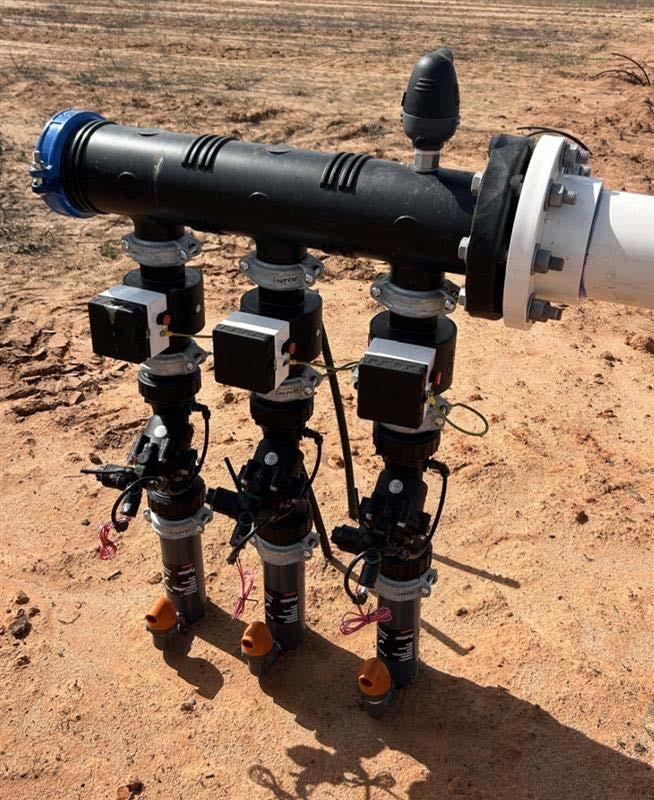
The M10 also has no moving parts, meaning less maintenance and a longer lifespan. Its grooved connection makes it compatible with a wide range of systems, and it integrates easily with digital farm control systems. This allows for real-time monitoring of water flow, giving irrigators accurate, up-to-the-minute data – with the required outputs to feed back into a farm irrigation control system to capture and store that data.
The BERMAD IMS is a complete solution. At its core is the ability to measure the exact volume of water going to each block being irrigated. With this data, irrigators can see whether their systems are performing as intended. If something’s off – say, one block is getting less water than expected – they can catch it early and fix it before it becomes a problem.
This kind of insight helps prevent irreversible damage. It protects crops, saves water, and avoids costly repairs. And because the system is modular, it can be tailored to different setups. You can install an M10 meter on each submain riser, or just one on the main manifold inlet.
In-field trial results across almost two full irrigation seasons were positive. The IMS worked as designed, delivering accurate flow data and helped irrigators identify issues early.
Pressure tests up to 10 bar – above what you’d typically see in a micro-irrigation setup, were also conducted. The system held up without issue, proving its durability and reliability.
Another key part of the system is the BERMAD 100 Series pressure reducing valve, especially the 12T-3” Top Pilot model. This is a seated valve, which means it seals tightly and reliably under pressure. There’s no risk of diaphragm deformation causing leaks.
The Top Pilot valve offers stable pressure control with a simplified pilot. It uses a straightforward dial with pressure mark indicators – so all that’s required is to set the dial to the system’s design pressure. When paired with BERMAD’S air valves – like the C-10 combination air valve and the K-10 kinetic air valve – you get a complete package that manages flow, pressure, and air release.
The BERMAD IMS is easy to order, install, and use. Everything is designed to work together, which saves time and reduces the chance of installation errors. It can also be integrated with BERMAD’S Omega controller – a cloud-based, battery-operated unit for remote irrigation management. With Omega and the IMS working together, you get full visibility and control over your irrigation system, from anywhere.
The BERMAD IMS was developed to solve real problems faced by real irrigators. It’s about helping farmers protect their crops, use water more efficiently, and make better decisions. With accurate flow data, reliable pressure control, and a modular design, the IMS is a practical solution for today’s irrigation challenges.




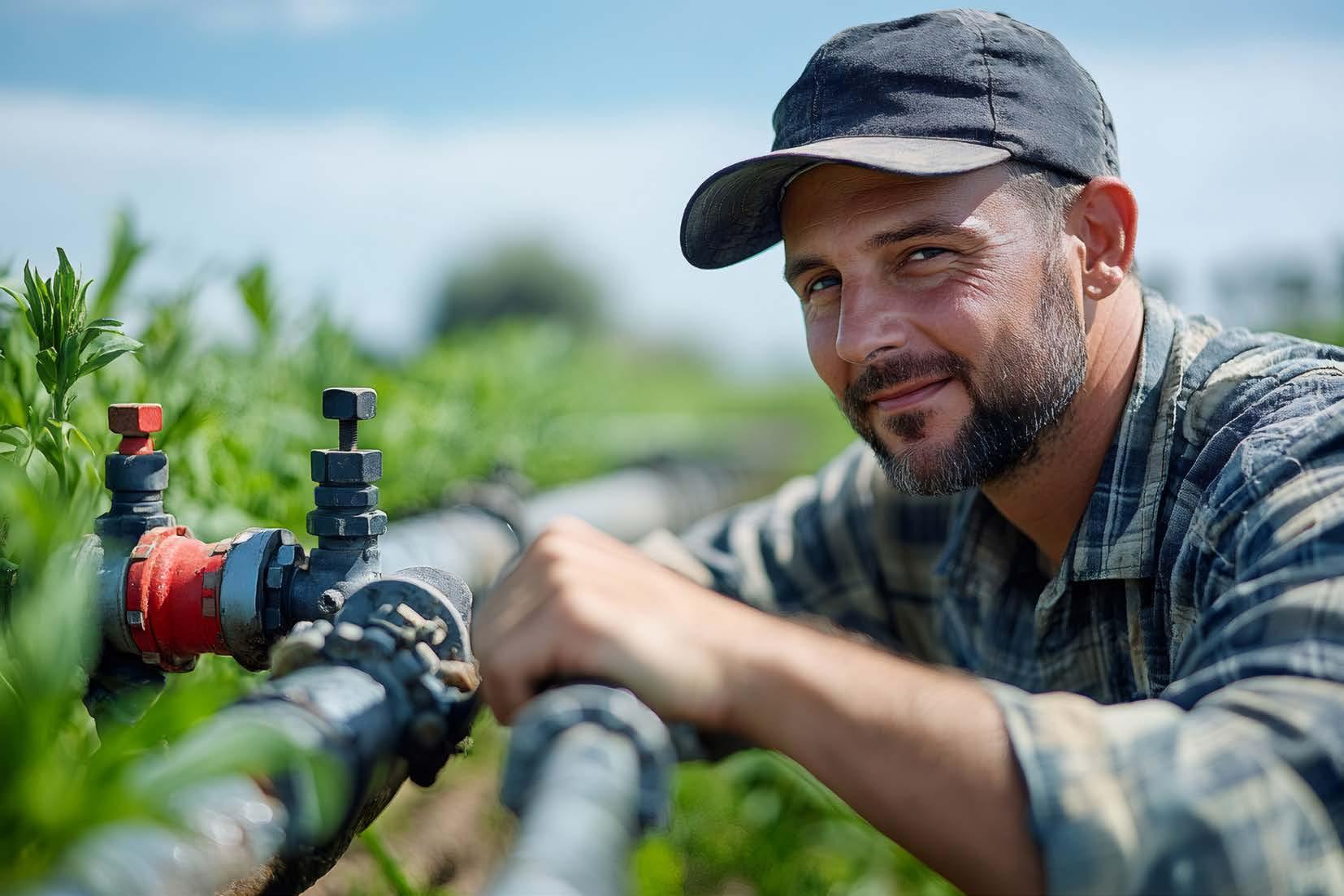
BY STUART ALEXANDER
Mental resilience drives success –your ability to manage stress and adapt influences career growth and personal wellbeing.
Balance learning with wellbeing –training is crucial, but maintaining energy and setting boundaries ensures long-term sustainability.
Emotional intelligence. Embrace it! –understanding and managing emotions strengthens teamwork and workplace adaptability.
Burnout prevention starts with awareness – structured breaks, clear boundaries, and healthy habits protect mental resilience.
Networking without exhaustion – focus on meaningful connections to avoid social fatigue while advancing your career. SNAPSHOT
Working in irrigation is rewarding but challenging – whether you're managing complex agricultural systems, implementing urban irrigation projects, or leading install teams and businesses. Regardless of your specific role, your mental resilience significantly influences your professional effectiveness, career trajectory, and overall satisfaction.
Mental resilience doesn't mean avoiding stress or challenges; rather, it's about developing the strength to navigate them effectively.
How do you currently balance professional advancement with your mental health?
Balancing the professional and personal
Training and professional development are foundational in any industry, including
our own irrigation industry. There’s a constant need to upgrade technical skills, obtain certifications, and specialise in niche areas like sustainable irrigation practices or the integration of advanced technology systems in communities. The commitment to ongoing learning, however, can result in significant stress when combined with daily professional responsibilities and personal life demands.
To manage stress, we need to reflect regularly: Are our goals clear, or do we find tasks accumulating without a structured approach on how we will deal with them?
Effective time management involves setting realistic milestones and keeping focus on all those high-priority tasks. By scheduling structured breaks throughout the day, we can revitalise our energy levels. Brief, intentional breaks will refresh our mental energy and enhance our concentration, resulting in a boost to overall productivity.
Also, it's important to communicate your workload and stresses with colleagues, mentors, family, and friends. Being in a place where we can share openly about our professional demands helps reduce anxiety and creates a supportive environment that fosters greater understanding and assistance.
Adaptability and emotional intelligence – embrace it!
As irrigation professionals we face continual shifts in technology, regulatory frameworks, and those ever-changing environmental conditions – making our adaptability essential.
We need to stop and ask ourselves: How comfortable am I with change?
Emotional intelligence (EI) is the ability to understand, use, and manage emotions positively. EI plays a critical role in helping us to navigate our way through workplace challenges and personal transitions.
Developing emotional intelligence involves finding our emotional triggers, empathising with others, and proactively managing stressors. Consider reflecting regularly on how effectively you engage with colleagues during challenging situations. Are you empathetic, supportive, and clear in your communication?
Cultivating EI not only enhances our adaptability but also significantly strengthens workplace relationships and teamwork.
Recognising and preventing burnout
Burnout is increasingly common in high-demand fields such as the irrigation industry, characterised by seasonal fluctuations in workload intensity, and high expectations when critical infrastructure has broken down.
Let’s take a moment to reflect: Are you experiencing persistent fatigue, lacking enthusiasm, or increased irritability towards tasks and interactions?
Early detection of burnout is crucial in preventing severe consequences. Taking structured, planned breaks helps – giving us time to check in with ourselves.
As well as taking breaks, creating firm professional boundaries is important in preventing burnout. Clearly delineate your work and personal lives, to ensure adequate rest and downtime. Incorporating healthy lifestyle practices – including regular physical exercise, balanced nutrition, and consistent sleep patterns –will substantially bolster your mental and physical resilience.
Networking events and industry gatherings play a significant role in career advancement. They provide opportunities to build connections, gain new insights, and for some, new career opportunities. However, frequent social engagements can lead to significant mental fatigue and physical exhaustion.
Evaluate your social and networking habits: Do you typically leave events feeling exhausted rather than energised?
To avoid social fatigue, approach networking deliberately and strategically. Set clear goals before attending events and focus on building fewer, deeper connections rather than numerous superficial interactions.
Effective leadership within the irrigation industry demands more than technical ability. It requires a deep understanding of emotional dynamics within teams. Leaders who regularly ask themselves, "How am I impacting my team's wellbeing and performance?" significantly enhance workplace culture and productivity.
Irrigation Australia has actively promoted mental health through initiatives like the "Let’s Talk About Mental Health" series and regular articles in the e-news. These initiatives underscore a sustainable commitment to enhancing awareness and fostering supportive workplace practices across our industry.
Self-reflection allows for faster recognition of issues and prompt corrective action.
Consider these reflection points:
• Am I consistently managing my professional and personal boundaries effectively?
• How satisfied am I with my workload and overall responsibilities?
• Am I keeping lifestyle habits that actively support my physical and mental wellbeing?
• Have I recently experienced signs of burnout or prolonged stress? Do my industry interactions and relationships generally energise or exhaust me?
• Am I struggling to maintain professional development?
Using a journal or digital app can make this process more effective and systematic, allowing you to track patterns and check progress over time. Regular self-reflection ensures you stay aware of your mental health status and can help you respond quickly to any issues.
Cultivating mental resilience requires ongoing conscious effort and reflection. Establishing a structured approach for regular self-check-ins will greatly enhance your chances for long-term resilience. Find a schedule that works for you. Monthly is a good place to start, but some of us may need to check in weekly, or daily. It varies on where we’re at in our EI journey.
Mental resilience is essential – not only for individual professionals but for the long-term health and sustainability of our industry. By prioritising mental wellbeing, engaging with support systems, and committing to ongoing reflective practice, you ensure a career that is both rewarding and fulfilling.
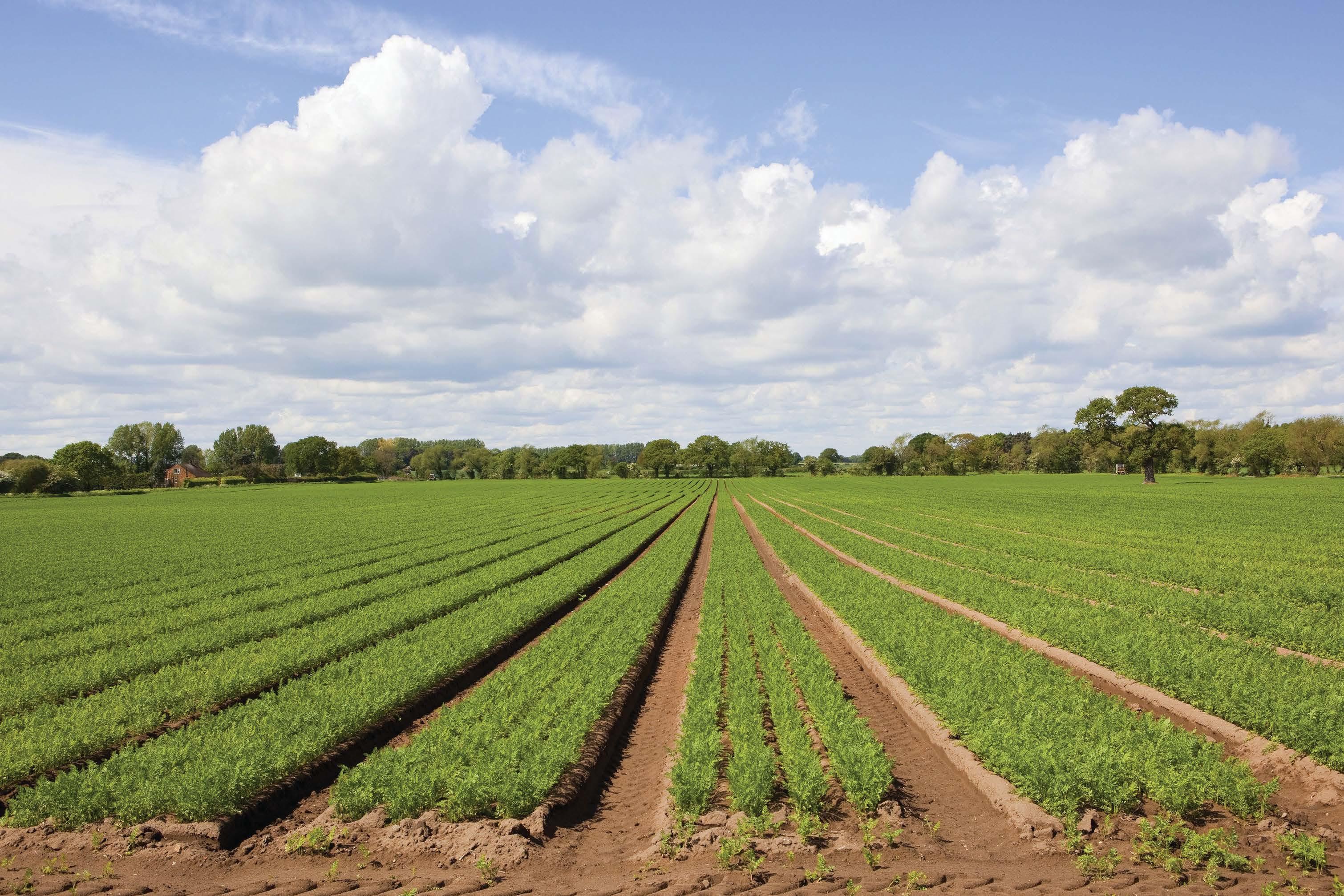

Gain access to the members only portal on the Irrigation Australia website Through the portal you can manage your Irrigation Australia membership, register your staff/employees for training, and access members only documents, presentations, and other materials

Receive significant member dis nationally accredited irrigation t and qualifications delivered by Irrigation Australia in city and regional areas and virtually
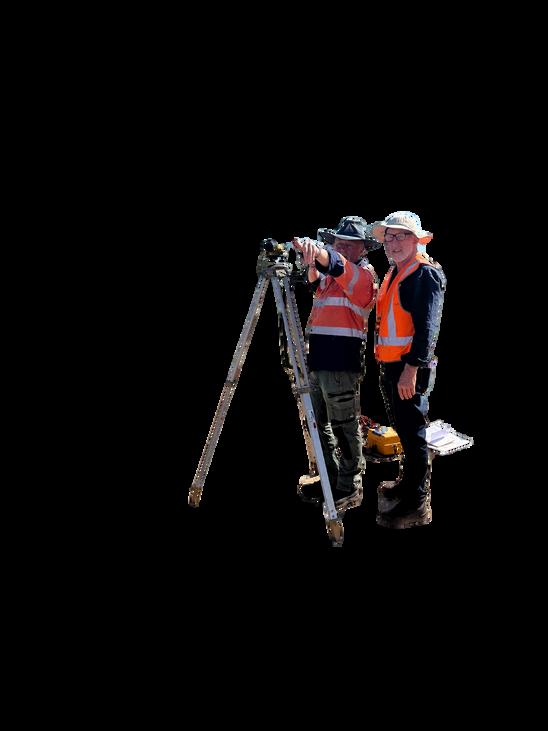

Receive significant member discounts on the joining fee and renewal fee to the Certification Program administered by Irrigation Australia

Receive significant discounts on advertising in the The Irrigation Journal and The Overflow These publications are distributed each quarter to all members and industry contacts
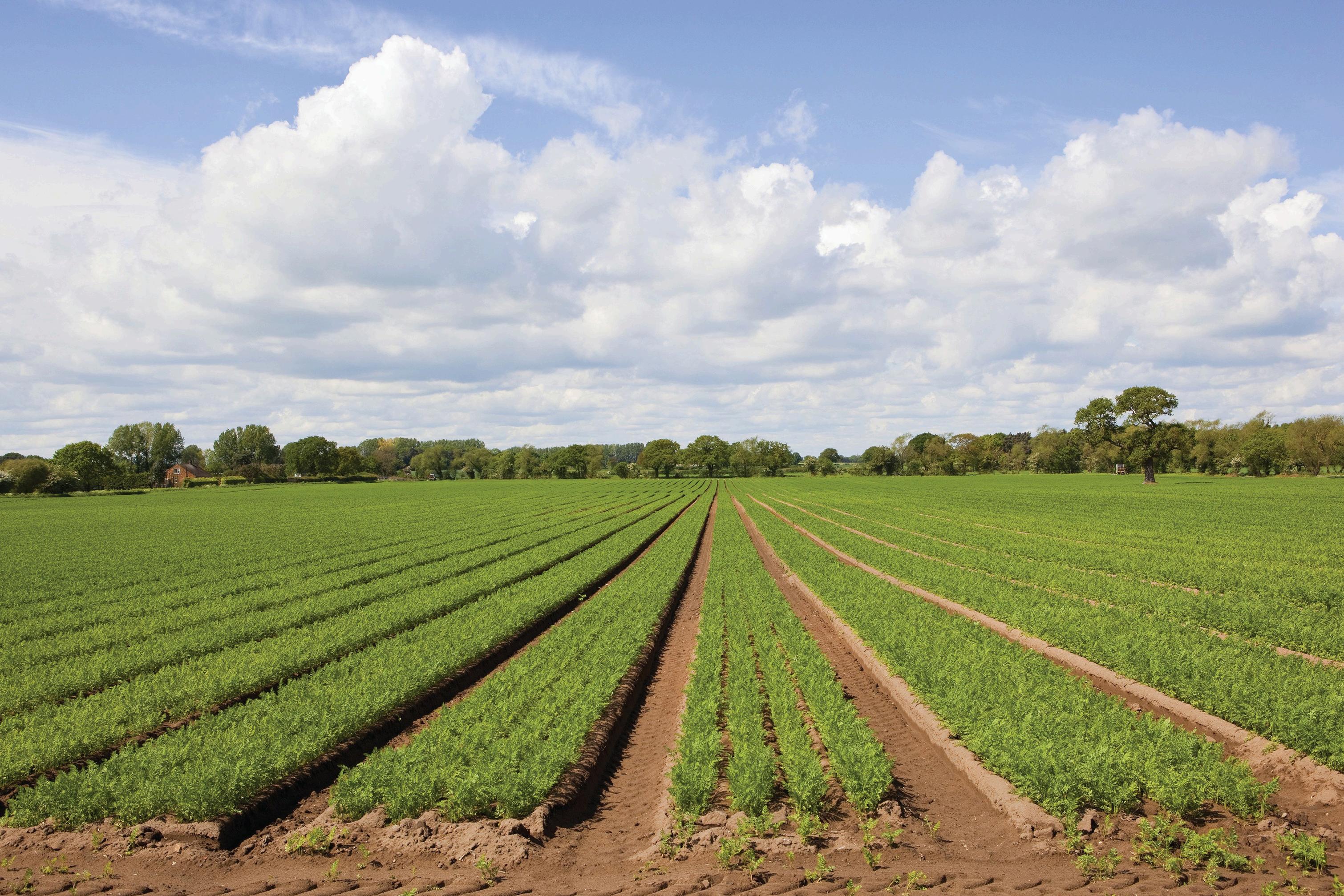

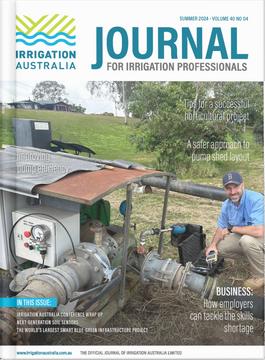

Irrigation Australia's e-knowledge repository has significant resources of technical papers, conference papers, publications such as The Irrigation Journal and The Overflow, and FAQ's available only for members
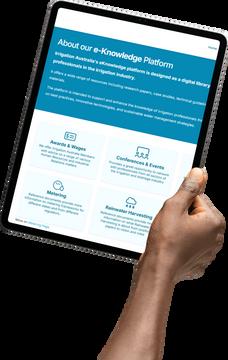

INVITATIONSTO REGIONALEVENTS
Irrigation Australia hosts a number of regional events and site visits across Australia This is a great opportunity for members and industry colleagues to come together to network, and discuss new challenges and technologies

Receive member discounts on attending and exhibiting at the Irrigation Australia International Conference & Exhibition, as well as regional Expos.


Receive member discounts on the Waterwise endorsement programs, relevant for domestic irrigation contractors, installers, landscapers and retailers.
Benefit from Waterwise marketing and merchandise to promote yourself as a Waterwise Irrigation Professional to the community

List your business on our Member Directory on the Irrigation Australia website (available to company memberships and certification holders only)
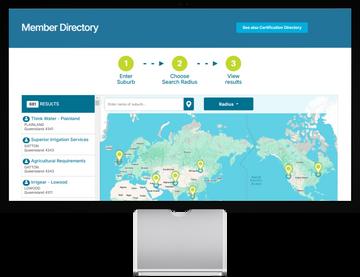
IRRIGATION AUSTRALIA PO Box 484, Morningside Queensland 4170 T 07 3517 4000 E info@irrigation.org.au W www.irrigationaustralia.com.au

DAVE CAMERON Chief Executive Officer IAL Brisbane Office
Dave.cameron@irrigation.org.au


NAOMI CARRAGHER Business Administration Manager/ Company Secretary IAL Brisbane Office Naomi.carragher@irrigation.org.au MARIKE FRONEMAN Accountant IAL Brisbane Office Marike.froneman@irrigation.org.au


STUART ALEXANDER Senior Trainer & Assessor IAL Brisbane Office Stuart.alexander@irrigation.org.au MADDISON COWARD Communications Coordinator IAL Brisbane Office Maddison.coward@irrigation.org.au EDITORIAL Editor Gemma Nardone E MyTinyHQ.com.au
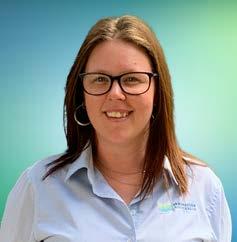
REBECCA NEW Membership Manager IAL Perth Office Rebecca.new@irrigation.org.au

ASHLEIGH LANG Training and Certification Administrator IAL Brisbane Office Ashleigh.lang@irrigation.org.au
Maddison Coward T (07) 3517 4000 E maddison.coward@irrigation.org.au DESIGN & PRODUCTION Bubble Creative T 0416 087 412 E annette@bubblecreative.com.au